

Tanzania Travel Guide
Your ultimate tanzania travel guide, with tips, things to do, and best things to see in tanzania. great for first-time and returning travelers..
Tanzania is a traveler’s dream.
Known for its wilderness areas, this East African country is where you can find the Serengeti National Park, a safari mecca where the “big five” (elephant, lion, leopard, buffalo and rhino) can be found and Kilimanjaro National Park, the home of Africa’s highest mountain.
If wilderness isn’t your thing, then go offshore and spend some time on the tropical islands of Zanzibar and Mafia Marine Park exploring various coral reefs and taking a dip with some whale sharks.
This Tanzania travel guide will help you plan your next vacation.
Popular Guides
- Kilimanjaro
- Things to do
Our Highlight
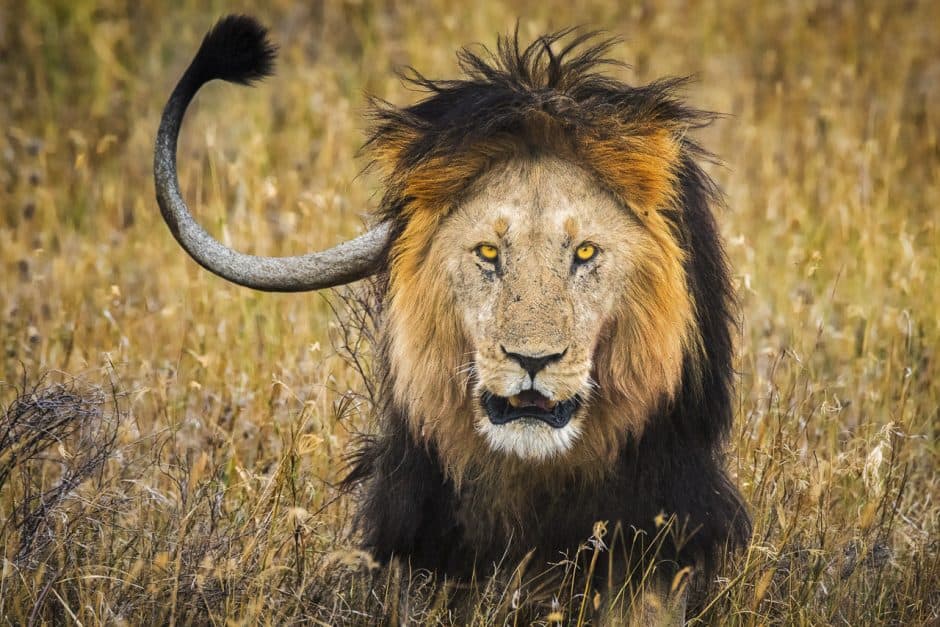
Table of contents
Table of Contents
Fast Facts about Tanzania
- Tanzanian power voltage is 220V 50Hz; Plug C, E, F & L
- The Tanzania currency is the Tanzanian shilling is and is around 2100 TZS to 1 USD
- Levels of crime seem to increase in Tanzania. Avoid showing signs of wealth and keep valuables out of sight.
- When walking, walk towards the flow of traffic and keep your bags on the side away from the road to prevent them from being snatched by someone in a passing car.
- Several vaccinations are highly recommended including Yellow Fever, Typhoid, Hepatitis A, and hepatitis B.
- Tanzanian visas are available upon arrival, payable in US cash only.
- Beware of Chikungunya , a viral disease transmitted by the bite of infected mosquitoes. This outbreak continues to affect parts Africa. Symptoms can take up to 12 days to appear, but usually begin within 3-7 days after being bitten by an infected mosquito. Symptoms generally include fever and joint pain; other symptoms can include fatigue, headache, nausea, vomiting, muscle pain, and rash.
- The water is not potable ; drink only bottled water or bring a SteriPen to Purify your water
Things to See and Do in Tanzania
- Climb Mount Kilimanjaro – I have to clarify a giant misconception about Mt. Kilimanjaro. It is not easy!
- Go on Safari – It’s the number one safari destination in the world, you cannot go to Tanzania without seeing the Serengeti.
- Things to do in Tanzania – Check out our tips for the very best things to do in Tanzania.
- V isit the Beaches of Zanzibar
Tanzania Travel Guides
- Complete Guide to Climbing Mount Kilimanjaro
Discover The Best Beaches in Zanzibar
- 16 Amazing Things to do in Tanzania
Accommodation
Budget: You can find a variety of hostels and budget hotels in the range of 12,000-70,000 TZS per night. (5 – 30 USD) Stay in dorms or private rooms and enjoy free Wi-Fi, hot showers, complimentary breakfast, and good locations to city centers or tourist destinations.
Mid-Range: For mid-range, expect to pay around 110,000-300,000 TZS per night. These hotels come with private rooms with TVs and free Wi-Fi, room service, complimentary breakfast, an outdoor pool, a gym, and a hotel restaurant and bar.
High-End: For five-star hotels, you will pay around 370,000-977,000 TZS per night. Take in the best with top-of-the-line hospitality, 24/7 room service, fine dining, refined rooms and suites with balconies and living rooms, a gym, massage services, butler service, and a pool.
Safaris can start at $200 USD per day per person and go up from there. Safaris are all inclusive.
To Climb Mount Kilimanjaro, guided treks can start at $1200 and go up from there if you negotiate directly in Moshi or Arusha like we did. But expect to pay more.
Beef, fish, rice, maize, and plantains are common foods in Tanzanian cuisine, though it can vary by region. Ugali (maize porridge) is a popular meal and is usually served with a meat, fish, or bean sauce. Mandazi (East African donuts) or Mahindi ya Kuchoma (grilled corn) are some treats you may find when out and about.
You can also look for a sit-down restaurant to sample more of the cuisine. For more inexpensive restaurants, you can find a meal for 6,450 TZS, though more expensive places will cost around 50,000 TZS.
The Best Ways to Get Around Tanzania
Getting to tanzania:.
Flights: Tanzania has 29 airports, but the main airport to fly into is Julius Nyerere International Airport, located 7.5 miles from the center of Dar es Salaam. If you’re climbing Mount Kilimanjaro, then Kilimanjaro International Airport is a popular airport that takes direct flights from the US. You can check for the best flights to Tanzania on Skyscanner .
Transportation:
Buses : Buses are a cheap way to get around, with a typical fare being about 400 TZS. Buses come in the form of minibuses or sedans. If you don’t like crowds, avoid peak hours, as buses can get jam packed with passengers. It is also best to avoid traveling at night.
Taxis: Taxis are another way to get around. However, use only licensed taxis. They are not metered, so make sure to agree on a price before getting in. A shorter taxi ride will start at 2,000 TZS (5,000 TZS in Dar es Salaam). It helps to ask around about what is a fair price so you know if you are being overcharged or not.
Car Rental: To rent a car, you need to be at least 21 years old and have a U.S. driver’s license. Prices average at 165,525 TZS per day for drivers 25 and older. Avoid driving at night and always look out for livestock on the roads.
Uber: Uber is available in Dar es Salaam.
When to go To Tanzania
For safaris and wildlife viewing, the best time to go to Tanzania is between July-September. It can easily be stretch from June to October. During these months, it’s the dry season, and temperatures hit highs of mid-80s. It’s also when the migration of wildlife occurs, starting from the north and moving across Tanzania.
June and July are the best months to see the wildebeest migration in Tanzania
The wet season hits its peak in April and May, so avoid going during these months. If you want to save some money on hotels, consider going in November or January-February.
Where to Stay in Tanzania
HYATT Regency, Dar es Salaam : The Kilimanjaro is a landmark 5-star hotel in Dar es Salaam often regarded as one of the best hotels in Tanzania. Both business and leisure travellers can experience true European and African comfort at ease.
Arusha Crown Hotel: When in Arusha, stay at this four-star hotel. Right next to the Arusha Clock Tower and the Arusha Declaration Museum, the hotel comes with air-conditioned rooms with flat-screen TVs, free breakfast, a hot tub, and a hotel restaurant and bar.
New Mwanza Hotel: When in Mwanza, stay at this hotel that has its own casino. Just a quick walk to the ferry terminal, amenities include 24-hour room service, massage services, a beauty salon, a shopping arcade, an outdoor pool, a fitness center, a 24-hour coffee shop, and an international restaurant.
The Royal Zanzibar Beach Resort – Located in the beach area of Nungwi on Zanzibar, this Luxury property located on the beach with infinity pool and swimming pools, fitness center, and spa.
Check out our favorite booking platforms Booking.com , Tripadvisor and VRBO for the best deals on accommodation.
What to Pack for Tanzania
Tanzania has a tropical climate. Temperatures in the highlands range between 50 and 68°F (10 and 20°C) during summer and winter months while the rest of the country has temperatures that rarely fall lower than 68°F (20°C).
The hottest period is between November and February while the coldest period occurs between May and August.
Tanzania has two major rainfall regions.
One is December–April in the southern, south-west, central and western parts of the country, while the other occurs October–December and March-May in the north and northern coast.
- Waterproof bag – the bag has two functions, protecting your stuff from the rain and also from the dust, especially if you’re traveling to drier regions.
- Footwear – especially important if going you are heading on a safari! Pack a pair of lightweight, durable, waterproof and comfortable shoes and also a pair of flip-flops or sandals that you can change into after a long day of sightseeing.
- Protection from the elements – pack sunscreen, sunglasses, a hat and bug-spray to prevent getting bitten by a mosquito (that might have malaria!)
- Layers – pack the basic tropical clothes and make sure to include long pants, long-sleeve tops and some warm clothes for those chilly nights.
- Avoid packing dark colored clothes – tsetse flies are drawn to dark colors, like blue and black clothing, and their bite can give you African Sleeping Sickness. Stick to light, neutral colors but avoid packing white clothes as they will get dirty and dusty pretty quickly.
- Binoculars – these are extremely handy for game drives. There is no off-roading permitted in the national parks so make sure you have an extra pair of binoculars or a camera with an epic zoom.
See our packing tips: packing list for smart travel & How to Pack for a Safari
Tanzania Travel Guide: Best Booking Resources
Whenever we travel to we make sure to start with these companies. We have tried a lot of different ones over the years and all of these have consistently proven to be the best when it comes to offering great prices.
We have used every one of these personally and continue to do so.
- Booking.com : This is our go site to when comparing prices for accommodation. It usually has the cheapest prices, especially in Europe and we love their interface. Not to mention you get free cancellation and you are guaranteed the best price.
- Trip Advisor : What we like about Trip Advisor is that we can look at all the reviews and then book our accommodation. TripAdvisor is where we go when we want to compare prices with multiple accommodation providers.
- VRBO : is the main search engine we use when we are looking for a home or apartment rental. It can sometimes be cheaper than hotels and it is the best way to stay in areas that offer a more local feel.
- Hostelworld : With one of the largest databases of hostels in the world, Hostelworld is the go-to site when you are looking for budget accommodation.
- Skyscanner : This is the first place we check for flights. It consistently comes back with the cheapest and best options. It allows us to compare a lot of airlines to get the best price.
- Rome 2 Rio : If you want to see how to get somewhere by plane, train, bus, ferry or car Rome2Rio lays it all out for you as well as related costs.I love how they show it all to you on a Google Map and it works offline.
- Get Your Guide: For all your day trip and city guide needs, we use Get Your Guide. It has the world’s largest collection of things to do with more than 30,000 activities in 7500 destinations.
- World Nomads Insurance: When traveling to Italy you should always have travel insurance. We have found the best bang for your buck is by far World Nomads.
Tanzania Travel Guide: Related Articles
To browse all our articles and guides about Tanzania click here.
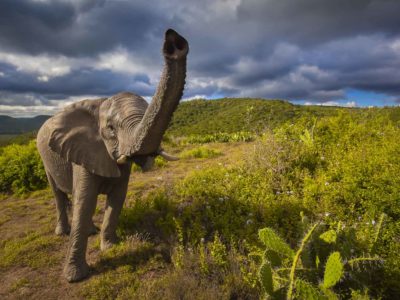
African Animals – Incredible moments on Safari
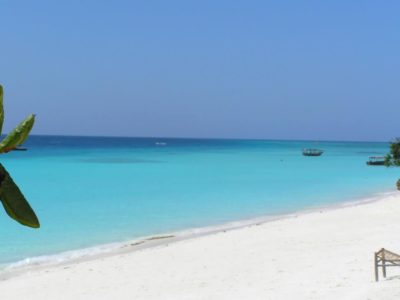
Complete Guide to Climbing Mount Kilimanjaro – How Hard is It?

- Destinations
Tanzania Travel Guide
National Geographic’s latest travel stories about Tanzania
- Terms of Use
- Privacy Policy
- Your US State Privacy Rights
- Children's Online Privacy Policy
- Interest-Based Ads
- About Nielsen Measurement
- Do Not Sell or Share My Personal Information
- Nat Geo Home
- Attend a Live Event
- Book a Trip
- Inspire Your Kids
- Shop Nat Geo
- Visit the D.C. Museum
- Learn About Our Impact
- Support Our Mission
- Advertise With Us
- Customer Service
- Renew Subscription
- Manage Your Subscription
- Work at Nat Geo
- Sign Up for Our Newsletters
- Contribute to Protect the Planet
Copyright © 1996-2015 National Geographic Society Copyright © 2015-2024 National Geographic Partners, LLC. All rights reserved
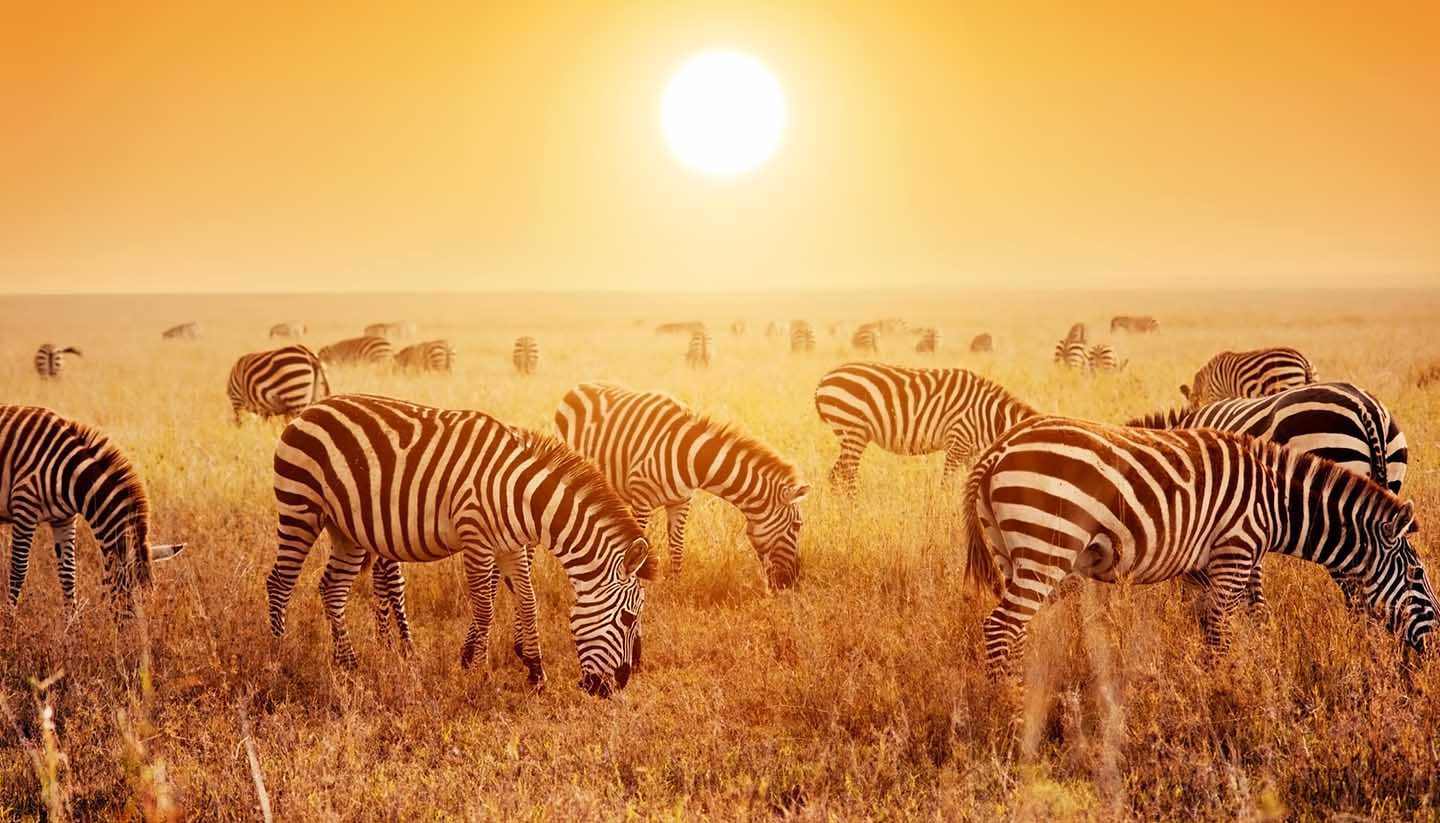
Introducing Tanzania
About tanzania.
- Images of Tanzania
- History, language & culture
- Weather & geography
- Doing business & staying in touch
Plan your trip
- Travel to Tanzania
- Where to stay
While you’re there
- Things to see & do
- Shopping & nightlife
- Food & drink
- Getting around
Before you go
- Passport & visa
- Public Holidays
- Money & duty free
Book your flights
- Dar es Salaam
- Dar es Salaam Julius Nyerere International Airport
Tanzania travel guide
If you close your eyes and conjure up the quintessential romantic image of Africa, what you’ll most likely imagine is Tanzania: the drama of the wildebeest migration along a seemingly-endless savannah; the incongruous snow and glaciers of Mt Kilimanjaro; the iconic and statuesque Maasai warriors; the exotic palm-fringed beaches on the spice islands of Zanzibar. It’s all here.
Tanzania boasts some of the most impressive national parks and game reserves in Africa. The Serengeti National Park is considered the continent’s premier spot to see wildlife roam unheeded across vast open plains.
Nearby, within the steep walls of the Ngorongoro Crater lies the most densely concentrated population of African mammals on earth. Not to be forgotten, the Selous Game Reserve is larger than Switzerland, and is wild, remote and still virtually untouched by humans.
Even further from the beaten path are parks in the extreme west of the country which offer the unique opportunity to track chimpanzees in their natural habitat on the fringes of Lake Tanganyika, one of Africa’s Great Lakes.
Beyond its safari stalwarts, Tanzania has no less than 804km (503 miles) of sublime coastline and pearly-white beaches with some magnificent islands offshore. Known as the Swahili Coast, this was a favoured stop on ancient trading routes between the Indian sub-continent and the Middle East. Spices, jewels and slaves once passed through, bringing with them a mélange of cultural riches that remain today.
Tanzania’s not short on mountains either. The striking and snow-capped Mt Kilimanjaro is Africa's tallest at 5,895m (19,341ft) and climbing it is an unforgettable experience. Its slightly smaller sister Mt Meru is arguably even prettier, and a quicker climb.
Tanzania is home to more than 120 different ethnic groups and cultures, but it has seen little of the ethnic or religious-based violence that has afflicted certain other nations in the region. In fact the country is an inherently peaceful place and embraces its multicultural heritage, which adds to its broad appeal.
945,087 sq km (364,900 sq miles).
55,155,473 (UN estimate 2016).
54 per sq km.
Federal republic.
President Samia Suluhu Hassan since 2021. Zanzibar is semi-autonomous and has its own parliament and president (President Hussein Mwinyi since 2020).
Kassim Majaliwa since 2015.
Travel Advice
Your travel insurance could be invalidated if you travel against advice from the Foreign, Commonwealth & Development Office (FCDO).
Areas where FCDO advises against all but essential travel
Mtwara region along the tanzania-mozambique border.
FCDO advises against all but essential travel to within 20km of the Tanzanian border with Cabo Delgado Province in Mozambique.
This is due to attacks by groups linked with Islamic extremism.
Find out more about why FCDO advises against travel .
Before you travel
No travel can be guaranteed safe. Read all the advice in this guide. You may also find it helpful to:
- see general advice for women travellers
- read our guide on disability and travel abroad
- see general advice for LGBT+ travellers
- read about safety for solo and independent travel
- see advice on volunteering and adventure travel abroad
Travel insurance
If you choose to travel, research your destinations and get appropriate travel insurance . Insurance should cover your itinerary, planned activities and expenses in an emergency.
About FCDO travel advice
FCDO provides advice about risks of travel to help you make informed decisions. Find out more about FCDO travel advice .
Follow and contact FCDO travel on Twitter , Facebook and Instagram . You can also sign up to get email notifications when this advice is updated.
This information is for people travelling on a full ‘British citizen’ passport from the UK. It is based on the UK government’s understanding of Tanzania’s current rules for the most common types of travel.
The authorities in Tanzania set and enforce entry rules. If you’re not sure how these requirements apply to you, contact the Tanzania High Commission in the UK .
COVID-19 rules
There are no COVID-19 testing or vaccination requirements for travellers entering Tanzania.
Passport validity requirements
To enter Tanzania, your passport must have an ‘expiry date’ at least 6 months after the date you arrive and at least one blank page.
Check with your travel provider that your passport and other travel documents meet requirements. Renew your passport if you need to.
You will be denied entry if you do not have a valid travel document or try to use a passport that has been reported lost or stolen.
Visa requirements
You must have a tourist or business visa to enter Tanzania.
If you are planning to work or volunteer, you will also need a work permit. Information on how to apply is available from the Tanzanian Prime Minister’s Office .
Your employer or volunteer organisation should help you arrange this before you travel.
If you overstay your visa or permit you can be arrested, detained and fined before being deported.
The Tanzanian Immigration Department has more information on visas .
Applying for a visa
Apply for an ‘e-visa’ before you travel. It is no longer possible to get a visa from the Tanzanian High Commission in London.
You can also get a tourist or business visa for a single entry on arrival at the main ports of entry to Tanzania , subject to meeting all immigration requirements. You may be asked to provide proof of your return journey. You will not be able to get a multiple entry visa on arrival.
Checks at border control
You must be ready to show your return or onward ticket at border control.
Entering Zanzibar from 1 October 2024
With effect from 1 October 2024, all visitors to Zanzibar (excluding residents) must have mandatory Inbound Travel Insurance from the Zanzibar Insurance Corporation (ZIC) for the duration of their stay (up to 92 days).
You can only buy this insurance from ZIC. Other international travel insurance policies will not be accepted. Policies will be available to buy from 1 September. Go to the Visit Zanzibar website for more information.
You may be refused entry if you do not have the correct insurance.
If you have any questions that are not covered on the website, contact ZIC by emailing [email protected].
Vaccine requirements
To enter Tanzania, you must have a certificate to prove you’ve had a yellow fever vaccination if you’re coming from a country listed as a transmission risk .
For full details about medical entry requirements and recommended vaccinations, see TravelHealthPro’s Tanzania guide .
Customs rules
There are strict rules about goods you can take into or out of Tanzania. You must declare anything that may be prohibited or subject to tax or duty.
Taking wildlife products into and out of Tanzania
Do not bring animal skin accessories into Tanzania as you risk questioning or detention when leaving the country.
Border officials have arrested foreigners for trying to take wildlife items, including horns and seashells, out of the country. It’s illegal to do this without a certified export permit from the Ministry of Natural Resources and Tourism. If you’re caught you could be detained or fined.
This guide also has safety advice for regions of Tanzania .
There is a high threat of terrorist attack globally affecting UK interests and British nationals, including from groups and individuals who view the UK and British nationals as targets. Stay aware of your surroundings at all times.
UK Counter Terrorism Policing has information and advice on staying safe abroad and what to do in the event of a terrorist attack. Find out how to reduce your risk from terrorism while abroad .
Terrorism in Tanzania
Terrorists are likely to try to carry out attacks in Tanzania.
Terrorist attacks could be indiscriminate, including in places frequented by foreign nationals, such as:
- places of worship
- transport hubs
- restaurants
- major gatherings like sporting or religious events
- crowded places
Stay aware of your surroundings, keep up to date with local media reports and follow the advice of local authorities.
Extremists linked to the Islamic terrorist group Al-Shabaab based in Somalia pose a threat across the East Africa region, and are thought to be active in Tanzania. Attacks by IS-Mozambique, who are based in the Cabo Delgado province of Mozambique, are possible near Tanzania’s border with this area of Mozambique. There is also thought to be some support for Daesh (formerly referred to as ISIL). The Tanzanian authorities have successfully made a number of arrests in connection to terrorism. However, many incidents in Tanzania are of unclear origin and may be conducted by criminal gangs.
In 2020, the village of Kitaya in the Mtwara region was attacked, close to the border with Mozambique, the attack was claimed by Islamic extremists operating from northern Mozambique. Most attacks target the local security forces, although attacks against western interests are also possible.
Political situation
On occasion demonstrations and political rallies across Tanzania have turned violent, resulting in fatalities. Police may use tear gas or live ammunition for crowd control. If you’re in and around areas where demonstrations are taking place, be aware of what is happening around you and move away if there are signs of disorder.
Violent crime
There is a risk of armed crime, including armed robbery, throughout Tanzania. Take particular care in places frequented by tourists and foreign residents. In Dar es Salaam, tourists and residents have been targeted:
- in the city centre
- in the Masaki and Oysterbay peninsula area, particularly at Coco Beach
- along Toure Drive
In Zanzibar incidents have taken place in Stone Town and at hotels and on popular tourist beaches throughout the island.
Bag snatching is a well-known tactic of criminals, who may operate from cars or motorbikes. If you are walking on the street:
- walk towards the traffic so you can see vehicles approaching
- walk as far away from the road as possible
- carry bags loosely by the handle or hanging off your shoulder and do not secure the strap across your chest
- avoid walking or cycling at night or alone
Do not carry large amounts of cash or display valuables such as expensive jewellery or watches. Leave your passport in a safe place and carry a copy for ID checks.
When in a vehicle, keep car doors locked, windows up and valuables out of sight. Be particularly careful at night when there is a higher incidence of crime. Do not stop if pedestrians or hitchhikers try to flag you down.
Express kidnap
In Dar es Salaam, tourists have been ‘express kidnapped’. This means they’ve been assaulted, robbed and forced with the threat of violence to withdraw cash from ATMs. Some have been forced to arrange cash transfers of up to £5,000 through Western Union after being befriended by strangers or getting into unlicensed taxis.
Protecting your property
Burglary is a risk. Make sure residential property is secure and lock all doors and windows, especially at night. If where you’re staying has a security guard, they should insist on official identification before allowing anyone to enter your property or compound. If in doubt, do not let strangers in and raise the alarm.
There have been cases where women travelling alone and in small groups have been verbally harassed.
Laws and cultural differences
You should respect local laws and customs.
If you are arrested or detained for any reason, you can insist that the British High Commission is notified immediately. You can call the High Commission 24/7 on +255 (0) 22 229 0000.
There is a high proportion of Muslims in Tanzania, particularly in Zanzibar and Pemba. Respect local traditions, customs, laws and religions. Make sure your actions do not cause offence, especially during the holy month of Ramadan or if you intend to visit religious areas.
Personal ID
Always carry copies of your passport photo page and visa. Carry your work permit, if you have one. Immigration officials or police can request these documents at any time, so make sure you can get the originals quickly if you need them. If you’re a resident or longer term visitor, consider getting certified copies.
Ramadan is a holy month for Muslims. The dates vary by year and country. During this time, avoid eating or drinking in public, outside of hotels or restaurants. Get more advice when you arrive from your tour guide, hotel or business contacts.
Dress modestly throughout Tanzania. Women wearing shorts or sleeveless tops away from tourist resorts in Zanzibar and Pemba, particularly in Stone Town, may cause offence to the local population.
Zanzibari authorities can fine you 700 US dollars or more if you’re wearing what they consider inappropriate clothing in public. For guides or tour operators, the fine can be at least 1,000 US dollars.
Environmental laws
Plastic bags are banned for environmental reasons. If you arrive by air you’ll be asked to hand over all plastic bags on arrival. The ban does not include ‘ziplock’ bags for airline security procedures.
Illegal drugs and prison sentences
Tanzania has strict laws on drug use and if you are found in possession of even a small amount you will be fined. There are severe penalties, including prison sentences, for possessing an amount that indicates possible intent to supply (drug trafficking). Tanzanian prisons tend to be dirty and overcrowded.
Discrimination and harassment
Reports made to the British High Commission by Black, Asian and Minority Ethnic (BAME) British passport holders suggest that they are experiencing additional levels of harassment from immigration officials. If this happens, stay calm and ask that the British High Commission is immediately informed.
LGBT+ travellers
Same-sex sexual activity is illegal in Tanzania, including Zanzibar. Same-sex relationships are not tolerated in Tanzania’s conservative society. If you show affection in public, like holding hands or kissing in public places, you could be arrested or put in prison.
Read more advice for LGBT+ travellers .
US dollars are widely accepted in tourist areas. Travellers cheques are not widely accepted.
Most banks in major cities have ATMs that accept foreign debit cards and issue Tanzanian shillings. They sometimes break down or run out of money.
To minimise the risk of card cloning, use ATMs located within the bank. If you try to exchange non-Bank of England pound notes, you may get a reduced exchange rate.
Outdoor activities and adventure tourism
Game reserves and national parks .
If you’re visiting game reserves and national parks, always follow park regulations and advice from wardens.
Only use reputable tour operators. Do not buy safari tours from touts. The Tanzanian Association of Tour Operators (TATO) TATO – Tanzania Association of Tour Operators – Tour Operators Association of Tanzania (tatotz.org) maintains a list of licensed tour companies.
Trekking and climbing
If you are trekking or climbing, only use a reputable travel company, stick to established routes and always walk in groups. Make sure you are well prepared and equipped to cope with the terrain and low temperatures.
Transport risks
Road travel.
If you’re planning to drive in Tanzania, see information on driving abroad .
The condition of cars rented out by some car hire companies is variable, so use a reputable firm. There are no roadside rescue or breakdown services. Road maps are hard to come by and not always up to date. Service stations are infrequent and may not have supplies of fuel. Consider using reputable taxis as an alternative.
You can drive in Tanzania with a UK driving licence for up to 6 months. For stays longer than this, an international driving permit ( IDP ) is required. Keep this with you in the car. To confirm the correct IDP to use, contact the Tanzanian High Commission in the UK .
To drive in Zanzibar, you’ll also need a local Zanzibar driving permit (which you can get through your hire car company). Carry several copies of your driving licence, permits and insurance documents.
Driving standards and road conditions
Road users often drive dangerously, ignoring the rules of the road. Accidents resulting in death and serious injury are common.
Watch out for:
- vehicles and motorbikes trying to undertake or overtake using any lane, including on the hard shoulder
- drivers making manoeuvres without signalling
- poor attention to rules at roundabouts
Many roads need repair, including in major towns and cities. During the rainy season, flooding can cause landslides and road surfaces can deteriorate.
Roads in Tanzania’s national parks, mainly dirt tracks, can become hazardous or impassable after heavy rain. It may be essential to have a 4-wheel drive vehicle.
Avoid driving outside major towns and cities at night.
Police checkpoints
There are frequent police checkpoints. If you’re stopped by the police, ask to see identification. If you are issued with a fine, the police should give you a government control number for payment. The police should not ask you to make any on the spot payments for traffic violations. If you’re involved in a road accident, co-operate with the local police.
If you see an unusual incident, or if somebody in plain clothes tries to flag you down, it is often safer not to stop.
Buses and taxis
Local buses (‘dala dalas’), motorbike taxis (‘boda bodas’), and tuk-tuks (known locally as ‘bijajis’) can have poor safety standards. They are often poorly maintained and badly driven. They rarely have proper insurance cover. There are frequent accidents, some of which result in fatalities.
Do not accept lifts from strangers or anyone offering to find a taxi for you. It is safest to arrange a taxi through a hotel or travel operator. Always ask to see the driver’s ID and use reputable taxi services.
Pickpockets and bag-snatchers operate on overcrowded buses and at bus stations.
Rail travel
There have been several accidents on Tanzanian railways. Seek local advice for any long-distance train travel.
Lake and sea travel
In the last few years there have been several ferry disasters. Hundreds of people have died when travelling:
- between Dar es Salaam and Zanzibar
- between the islands of Zanzibar
- in the Lake Zone area
If you think a ferry is overloaded or not seaworthy, do not get on. If you do board, familiarise yourself with emergency procedures on board and make a note of where the life jackets and emergency exits are located.
You should also beware of aggressive ticket touts at Tanzanian ports.
Continual pirate attacks on vessels sailing off the coast of Somalia and in the Gulf of Aden show that the threat of piracy remains significant. The threat assessment of the combined international naval counter-piracy forces is that all sailing yachts under their own passage should avoid the designated high-risk area or accept the risk of being hijacked and held hostage for ransom. For more information and advice, see Piracy and armed robbery at sea .
Extreme weather and natural disasters
Find out what you can do to prepare for and respond to extreme weather and natural hazards .
Rainy seasons
The length of rainy seasons can vary, but they generally run from:
- the end of March to May
- October to mid-December
Heavy rainfall and strong winds can affect travel. Flooding and landslides can occur during heavy rain. If travelling to affected regions, you should take extra care and follow any advice given by the local authorities.
Monitor local and international weather reports and the TMA website for the latest updates. If travelling, plan your journeys carefully and make sure to follow local guidance.
Avoid walking, swimming, or driving through floodwater.
Earthquakes
Earthquakes and tremors are a risk in Tanzania. The US Federal Emergency Management Agency website has advice about what to do before, during and after an earthquake .
The last significant earthquake (magnitude 6.0) happened on 12 August 2020, 66km north-east of Mafia Island.
This section has safety advice for regions of Tanzania. It only covers regions where The Foreign, Commonwealth & Development Office ( FCDO ) has specific advice.
You should also read FCDO ’s overall travel advice and safety and security advice .
Mtwara Province
FCDO advises against all but essential travel to the southern strip of Mtwara Province to within 20km of the border with Cabo Delgado Province in Mozambique.
The presence of groups linked to Islamic extremism in Cabo Delgado is creating cross-border tensions and instability. There is a risk of violent attacks. An attack on Kitaya village in October 2020 was claimed by groups linked to Islamic extremism operating from northern Mozambique.
Tanzania-Burundi border and Kigoma region
There have been armed robberies in the area bordering Burundi and in Kigoma region, including vehicle hijackings. Drive only in hours of daylight. There are few facilities for visitors.
National parks
Some parks are extremely remote, and emergency access and evacuation can be difficult. If you choose to camp, only use official sites. Make sure you are properly equipped and seek local advice when travelling to isolated areas.
There are risks associated with viewing wildlife, particularly on foot or at close range. Always follow park regulations and advice from wardens, and make sure you have the correct documentation or permit before entering a national park.
Before you travel check that:
- your destination can provide the healthcare you may need
- you have appropriate travel insurance for local treatment or unexpected medical evacuation
This is particularly important if you have a health condition or are pregnant.
Emergency medical number
Call 112 and ask for an ambulance.
Contact your insurance company quickly if you’re referred to a medical facility for treatment.
Vaccine recommendations and health risks
At least 8 weeks before your trip:
- check the latest vaccine recommendations for Tanzania
- see where to get vaccines and whether you have to pay on the NHS travel vaccinations page
See what health risks you’ll face in Tanzania , including:
Altitude sickness is a risk in parts of Tanzania. Read more about altitude sickness on TravelHealthPro .
The legal status and regulation of some medicines prescribed or bought in the UK can be different in other countries.
Read best practice when travelling with medicines on TravelHealthPro .
Healthcare in Tanzania
Medical facilities are limited, especially outside Dar es Salaam.
FCDO has a list of medical providers in Tanzania where some staff will speak English.
There is also guidance on healthcare if you’re living in Tanzania .
Travel and mental health
Read FCDO guidance on travel and mental health . There is also mental health guidance on TravelHealthPro .
The Foreign, Commonwealth & Development Office ( FCDO ) cannot provide tailored advice for individual trips. Read this travel advice and carry out your own research before deciding whether to travel.
Emergency services in Tanzania
Telephone: 112 (ambulance, fire, police)
Contact your travel provider and insurer
Contact your travel provider and your insurer if you are involved in a serious incident or emergency abroad. They will tell you if they can help and what you need to do.
Refunds and changes to travel
For refunds or changes to travel, contact your travel provider. You may also be able to make a claim through insurance. However, insurers usually require you to talk to your travel provider first.
Find out more about changing or cancelling travel plans , including:
- where to get advice if you are in a dispute with a provider
- how to access previous versions of travel advice to support a claim
Support from FCDO
FCDO has guidance on staying safe and what to do if you need help or support abroad, including:
- finding English-speaking lawyers , funeral directors and translators and interpreters in Tanzania
- dealing with a death in Tanzania
- being arrested or imprisoned in Tanzania
- getting help if you’re a victim of crime
- what to do if you’re in hospital
- if you’re affected by a crisis , such as a terrorist attack
Contacting FCDO
Follow and contact FCDO travel on Twitter , Facebook and Instagram . You can also sign up to get email notifications when this travel advice is updated.
You can also contact FCDO online .
Help abroad in an emergency
If you’re in Tanzania and you need emergency help from the UK government, contact the British High Commission in Dar es Salaam .
FCDO in London
You can call FCDO in London if you need urgent help because something has happened to a friend or relative abroad.
Telephone: 020 7008 5000 (24 hours)
Find out about call charges
Risk information for British companies
The Overseas Business Risk service offers information and advice for British companies operating in Tanzania on how to manage political, economic, and business security-related risks.

Book a Hotel
© Columbus Travel Media Ltd. All rights reserved 2024

- Places To Visit
15 Best Natural Tourist Attractions in Tanzania: Places To Visit
- Modified on Sep 2, 2024
Tanzania , located in East Africa, is renowned for its stunning landscapes, diverse wildlife, and rich cultural heritage. Tanzania, one of the most popular destinations on the continent, has a lot to offer tourists looking for adventure, relaxation, or cultural immersion.
Geographically, Tanzania boasts a stunning array of landscapes, ranging from the snow-capped peaks of Kilimanjaro to the pristine beaches of Zanzibar. At its heart lies the Serengeti, one of the most renowned wildlife reserves in the world, where the annual migration of wildebeests and zebras mesmerizes travelers from across the globe. Moreover, Tanzania is home to the Ngorongoro Crater, often dubbed the "Eighth Wonder of the World," and the vast Selous Game Reserve, a UNESCO World Heritage Site. The country's geographical diversity not only supports a rich variety of flora and fauna but also offers unparalleled opportunities for eco-tourism and adventure.
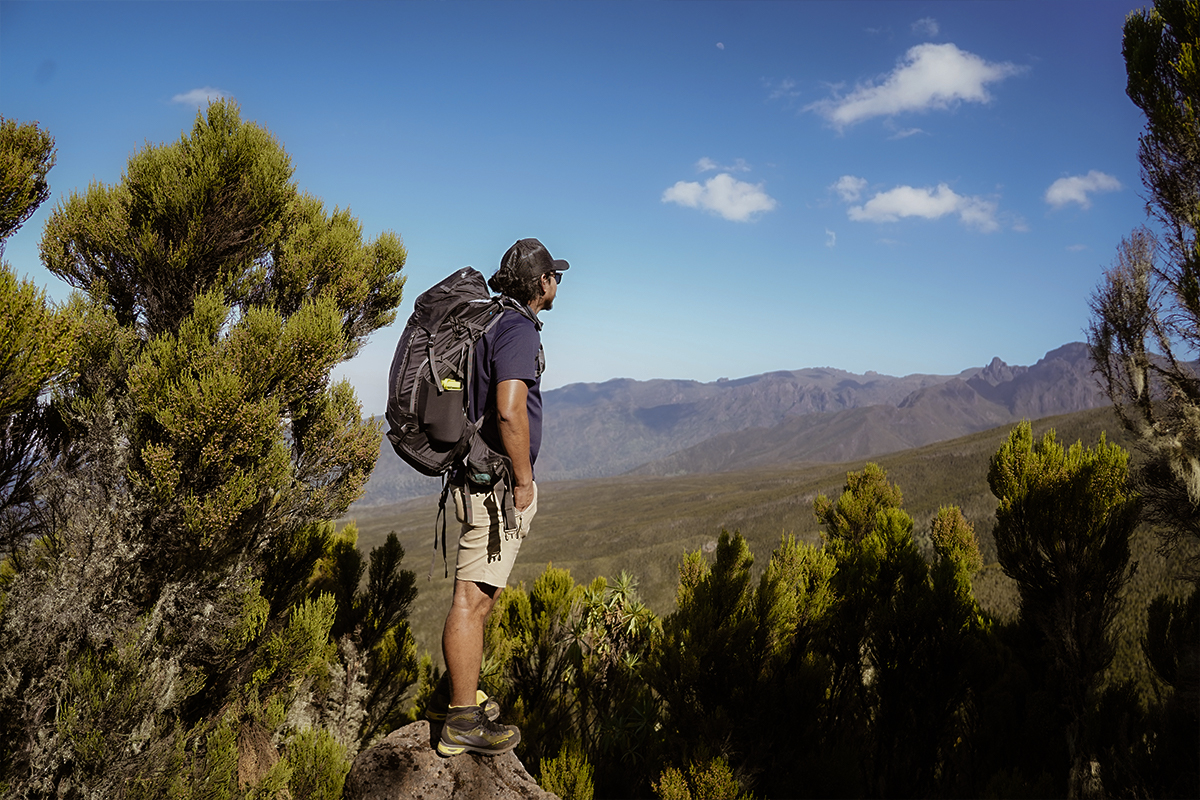
With a rich cultural heritage and diverse landscapes ranging from savannahs to mountains and coastal regions, Tanzania's attractions cater to every traveler's taste. Whether seeking adventure on safari, relaxation on the beach, or cultural immersion in historical sites like Stone Town, Tanzania promises an unforgettable journey filled with awe-inspiring experiences.
Let’s delve into the enchanting land of Tanzania, where nature weaves its most captivating tapestry.
Table of Content
Best things to do in tanzania, mount kilimanjaro.
Towering majestically over the East African landscape, Mount Kilimanjaro is Africa's highest peak and one of the continent's most iconic natural wonders. The mountain offers several trekking routes (Marangu, Lemosho, and Machame are the popular ones), each providing unique perspectives of its diverse ecosystems, from lush rainforests to alpine meadows and arctic-like glaciers. The climb to Kilimanjaro is a physical and spiritual challenge , as trekkers witness awe-inspiring sunrises and sunsets from high above the clouds.
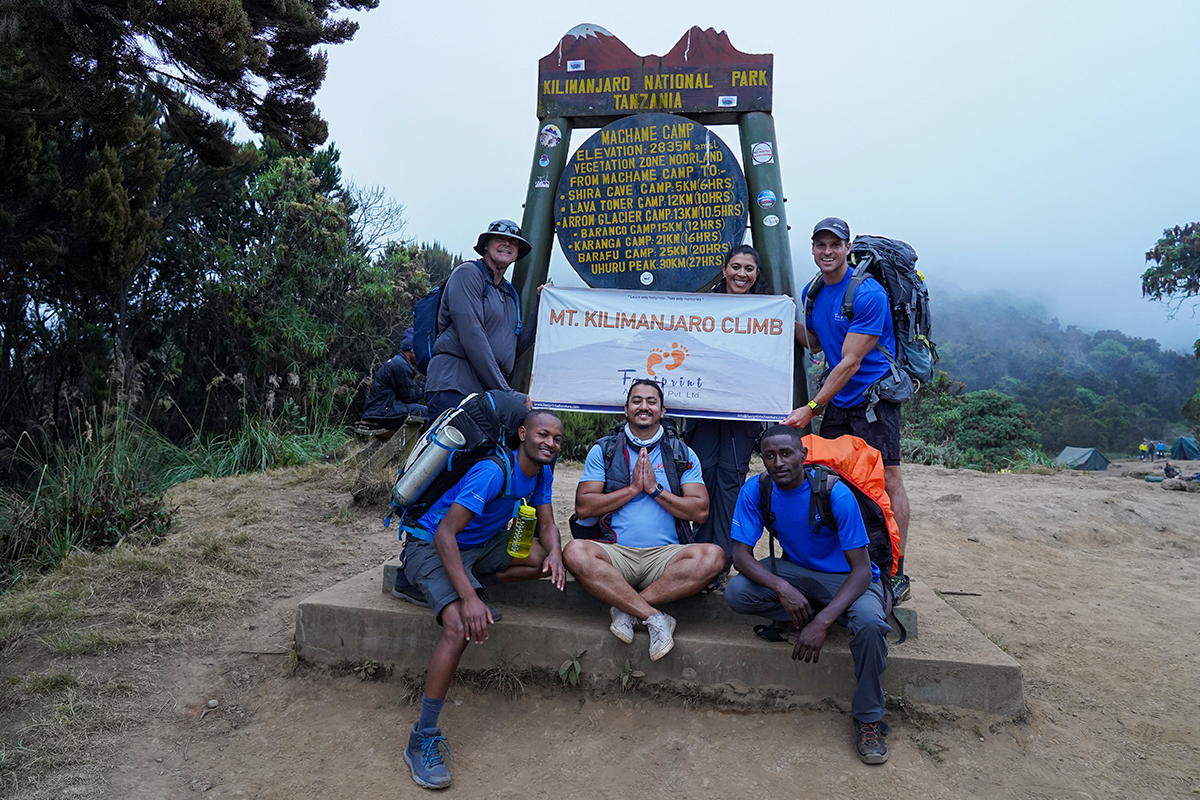
As one of the world's Seven Summits, Mount Kilimanjaro is immensely popular among adventure seekers and nature enthusiasts. Its popularity stems from its iconic status as the tallest freestanding mountain in the world, offering a challenging yet achievable climb for trekkers of varying skill levels. The popularity of Mount Kilimanjaro is further enhanced by its stunning natural beauty, with diverse ecosystems ranging from lush rainforests to barren alpine landscapes. Upon reaching the summit, Uhuru Peak, the sense of accomplishment and witnessing breathtaking views of the surrounding plains and glaciers is a major draw for climbers worldwide. Additionally, Kilimanjaro holds cultural significance as a symbol of Tanzania's natural heritage, attracting travellers keen to explore its rich history and Indigenous traditions. Note: Comprehensive Guidebook for Kilimanjaro Climbing
- Altitude: 5,895 meters (19,341 feet) above sea level
- Area: 947,303 square kilometers
- Popularity: Extremely popular among trekkers for Climbing Kilimanjaro
- Best Season: January to March and June to October (Dry Seasons)
- Flora: Diverse ecosystems include montane rainforests with plant species like Giant Lobelias and Senecios.
- Fauna: Wildlife includes elephants, buffaloes, leopards, and various species of monkeys and birds at lower altitudes.
Serengeti National Park
Renowned as one of the greatest wildlife spectacles on earth, the Serengeti National Park is synonymous with the annual Great Migration. Millions of wildebeests, zebras, and other herbivores traverse the vast plains in search of fresh grazing grounds, followed closely by predators such as lions, cheetahs, and hyenas. Visitors also enjoy thrilling game drives, hot air balloon safaris , and cultural interactions with Maasai communities in the surrounding area.
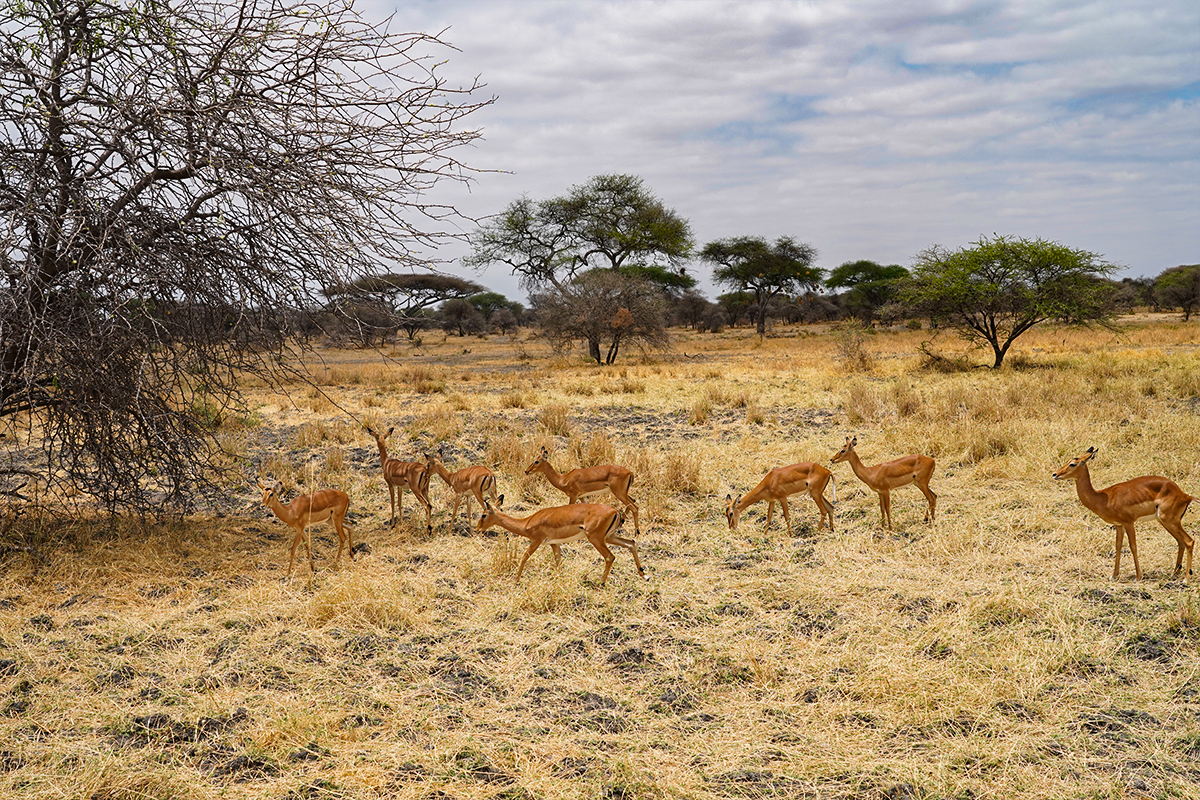
Serengeti National Park is one of the Most Popular Places in Tanzania for its unparalleled wildlife viewing opportunities, with the chance to witness thrilling predator-prey interactions and the Big Five in their natural habitat. Beyond the migration, the Serengeti's diverse landscapes, including grasslands, woodlands, and riverine forests, provide year-round sightings of a wide variety of wildlife, making it a must-visit destination for wildlife enthusiasts. To explore the Serengeti National Park with Footprint Adventure, visit here .
- Altitude: Varies; mostly flat plains with some hills
- Area: Approximately 30,000 square kilometers (12,000 square miles)
- Popularity: Highly popular for wildlife safaris, especially during the Great Migration
- Best Season: December to March (calving season) and June to October (dry season)
- Flora: Open grasslands with acacia trees, riverine forests, and rocky kopjes supporting various plant species.
- Fauna: Iconic species such as lions, leopards, elephants, and rhinos, as well as the Great Migration of wildebeests and zebras.
Tarangire National Park
Often referred to as the "Elephant Playground," Tarangire National Park is renowned for its large population of elephants, especially during the dry season when they gather around the Tarangire River. The park's landscape is characterized by vast savannah plains, acacia woodlands, and ancient baobab trees, providing a scenic backdrop for wildlife viewing and photography.
The unique combination of baobab-studded savannahs, seasonal swamps, and ancient riverbeds of Tarange provides a haven for a wide variety of wildlife, especially during the dry season. Visitors travel to Tarangire to witness large herds of elephants around the Tarangire River, as well as sightings of predators such as lions, leopards, and cheetahs. Walking safaris and night drives offer unique opportunities to explore the park and observe its nocturnal inhabitants. The relatively quiet atmosphere and pristine wilderness of Tarangire add to its allure, offering an authentic wildlife safari experience away from the crowds.
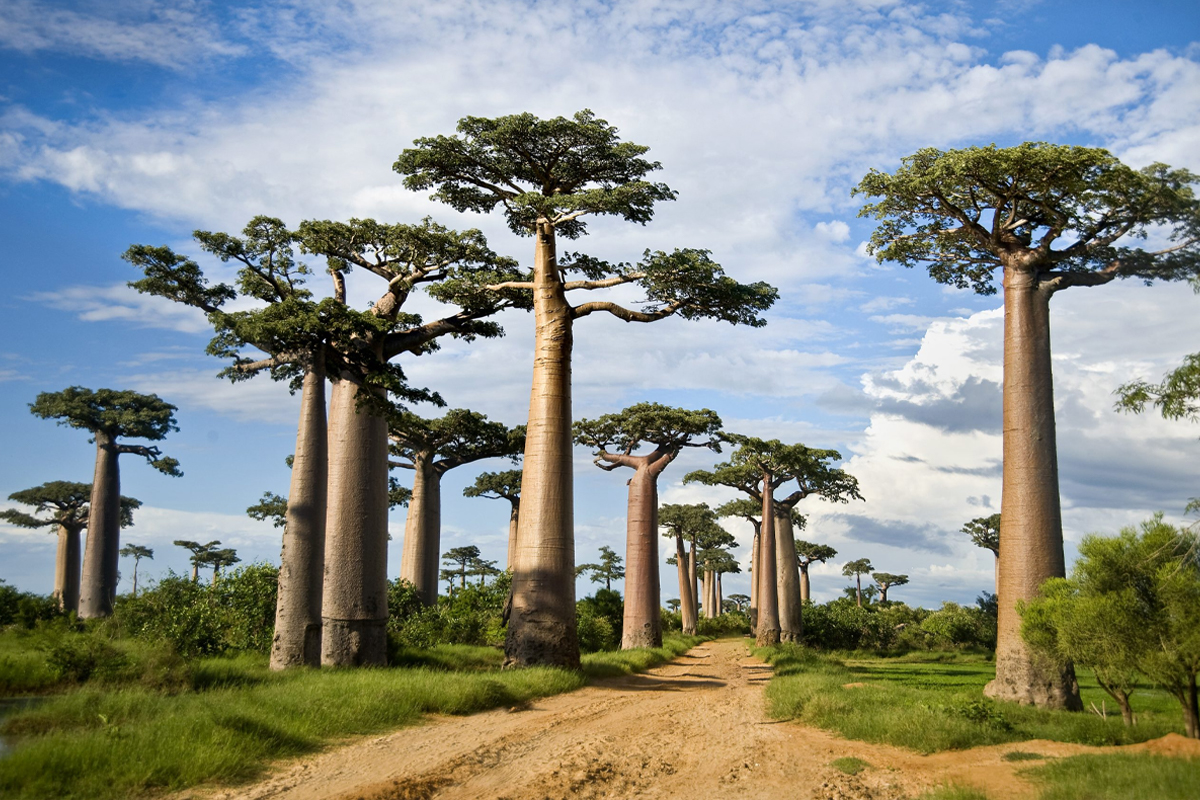
- Altitude: Approximately 900 meters (2,950 feet) above sea level
- Area: Approximately 2,850 square kilometers (1,100 square miles)
- Popularity: Popular for its large elephant population and baobab trees
- Best Season: June to October (dry season)
- Flora: Acacia woodlands, baobab trees, and seasonal swamps support a diverse range of plant species adapted to dry conditions.
- Fauna: Known for its large elephant herds, as well as lions, leopards, giraffes, and various antelope species.
Ngorongoro Conservation Area
A UNESCO World Heritage Site and one of Africa's most famous safari destinations, the Ngorongoro Conservation Area is home to the spectacular Ngorongoro Crater. Formed from the collapse of a massive volcano millions of years ago, the crater is now a natural amphitheater teeming with wildlife.
Travelers are mostly drawn to the opportunity to embark on game drives along the crater floor, where they can witness an incredible concentration of animals against the backdrop of the crater walls. Beyond the crater, the conservation area's diverse habitats, including highland forests, grasslands, and soda lakes, offer additional opportunities for exploration and cultural experiences with Maasai communities.
- Altitude:1,800 meters (5,900 feet) above sea level
- Area: Approximately 8,300 square kilometers (3,200 square miles)
- Popularity: Very popular for its unique landscape and high wildlife density
- Best Season: Year-round, but June to September is drier and offers better visibility
- Flora: Varied habitats include grasslands, forests, and alkaline lakes surrounded by lush vegetation, including fig trees and ferns.
- Fauna: Diverse wildlife such as lions, elephants, rhinos, and large herds of wildebeests and zebras within the Ngorongoro Crater.
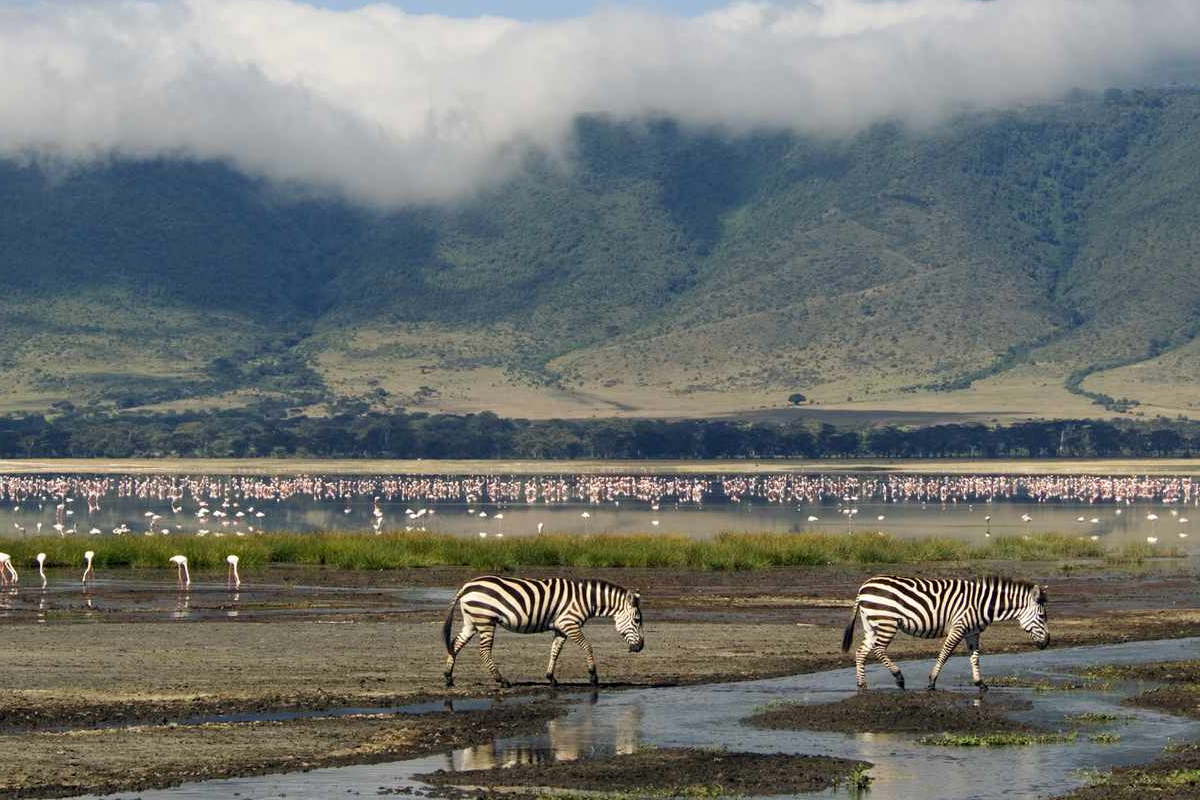
Lake Manyara
Nestled at the base of the Great Rift Valley escarpment, Lake Manyara National Park is renowned for its scenic beauty and diverse wildlife. The park's most iconic feature is its alkaline lake, which attracts large flocks of flamingos, pelicans, and other waterbirds.
Despite its relatively small area, Lake Manyara National Park is one of the Top Rated Tanzania Sights , among safari enthusiasts for its scenic beauty, diverse wildlife, and unique tree-climbing lions. Travelers are drawn to the opportunity to explore the park's varied landscapes, from dense forests inhabited by troops of baboons to open grasslands frequented by elephants and giraffes. Game drives, guided walks, and bird-watching wildlife safaris offer opportunities to immerse oneself in the park's natural splendor.
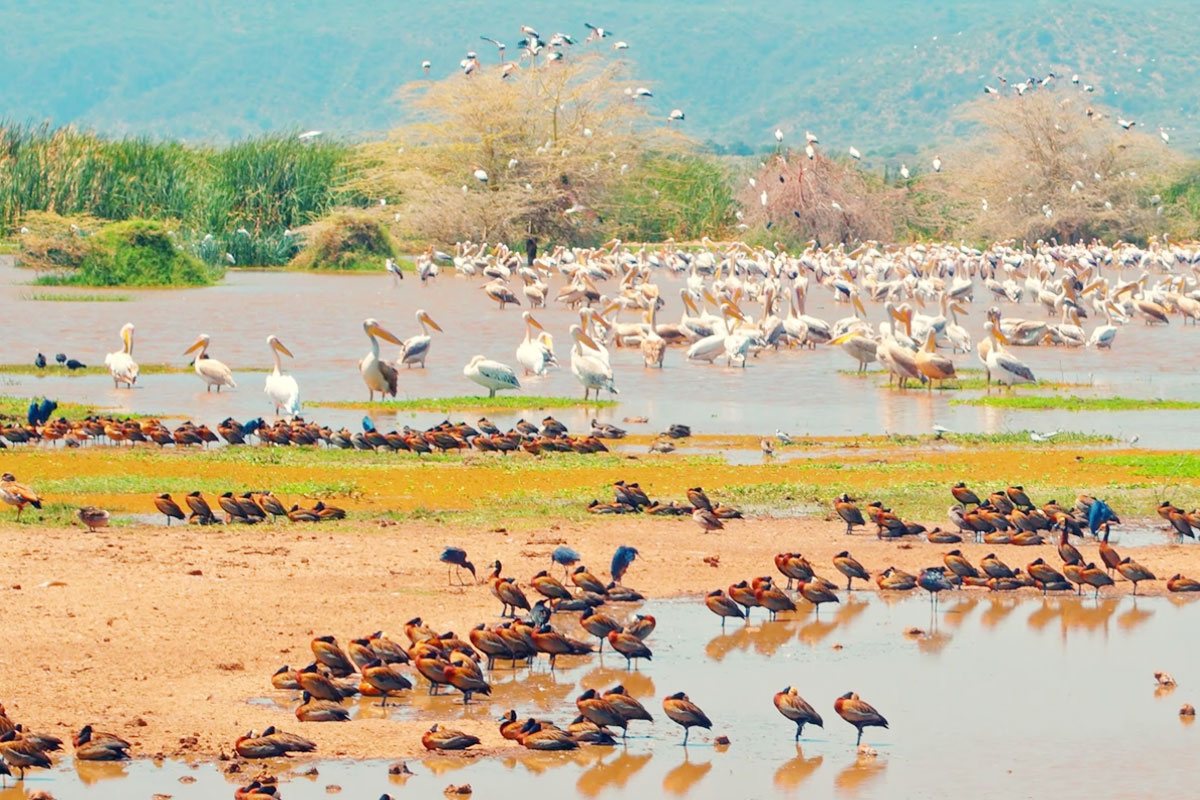
The chance to spot lions lounging in the branches of acacia trees is a major highlight for many visitors, adding to the park's appeal as a premier safari destination.
- Altitude: Approximately 960 meters (3,150 feet) above sea level
- Area: Approximately 330 square kilometers (130 square miles)
- Popularity: Known for its birdwatching and tree-climbing lions
- Best Season: Year-round, but June to September is drier and offers better wildlife viewing
- Flora: Surrounding woodlands and grasslands are home to diverse plant species, including mahogany trees, sausage trees, and acacias.
- Fauna: Tree-climbing lions, elephants, giraffes, hippos, and a wide variety of bird species, including flamingos.
Pemba Island
Tucked away in the Indian Ocean, Pemba Island is a hidden gem known for its unspoiled beauty and tranquil atmosphere. Despite being less developed than its neighbor Zanzibar, Pemba Island is highly popular among travelers seeking a secluded and unspoiled tropical paradise. The popularity is attributed to its pristine beaches, crystal-clear waters, and vibrant coral reefs, which offer some of the best diving and snorkeling opportunities in this region. Travelers are drawn to Pemba's laid-back atmosphere and authentic Swahili culture, with opportunities to explore traditional fishing villages, spice plantations, and historic ruins. The island's remote location and limited tourist infrastructure add to its appeal as a hidden gem, providing an escape from the crowds and making it a great Tanzania Tourist attraction to reconnect with nature.
- Altitude: 119 m (390 feet) above sea level
- Area: Approximately 980 square kilometers (380 square miles)
- Popularity: Less crowded compared to Zanzibar, popular for diving and snorkeling
- Best Season: July to October and December to February (dry seasons)
- Flora: Dense forests, mangroves, and spice plantations with cloves, nutmeg, and cinnamon are characteristic of the island's vegetation.
- Fauna: Marine life includes coral reefs teeming with colorful fish, dolphins, turtles, and occasional sightings of whale sharks.
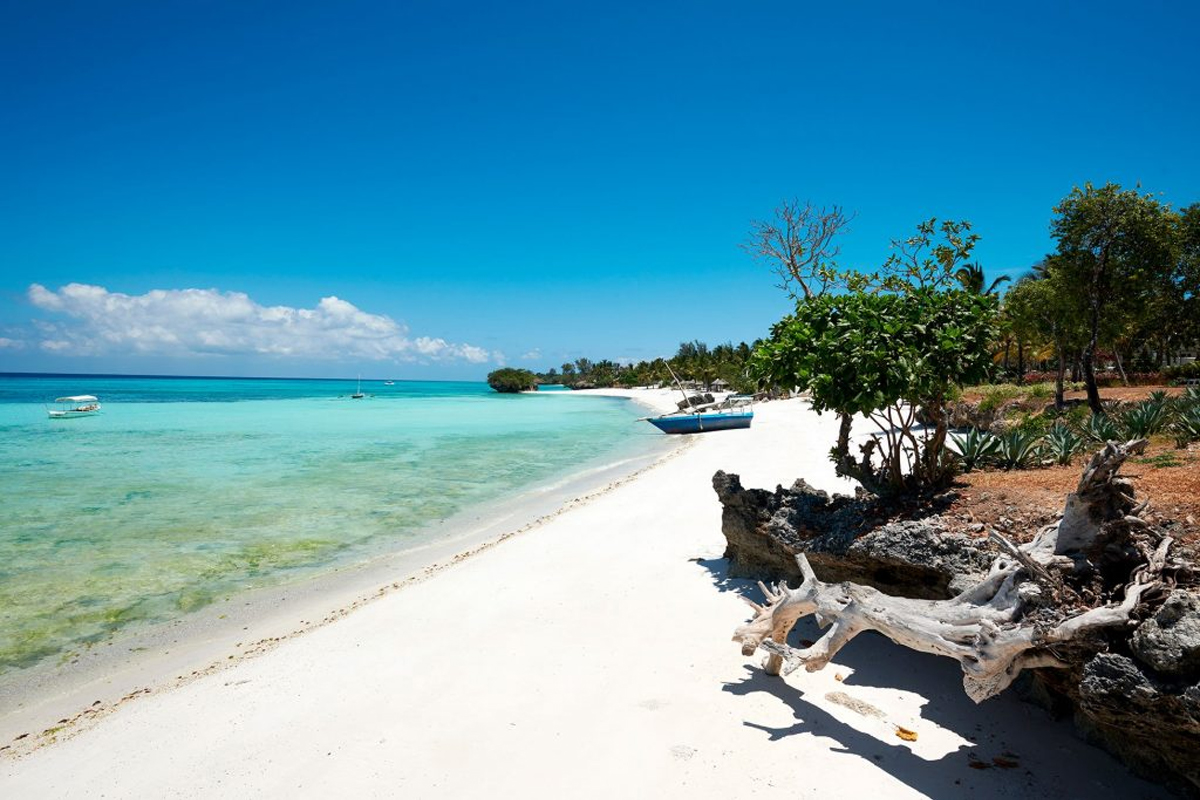
Steeped in history and culture, Stone Town is the atmospheric heart of Zanzibar Island and a UNESCO World Heritage Site. Its labyrinthine streets are lined with centuries-old buildings adorned with intricately carved doors, reflecting the island's diverse architectural influences. Visitors can wander through bustling markets, visit historic landmarks such as the Old Fort and Sultan's Palace, and explore cultural attractions like the House of Wonders and the Palace Museum. The town's vibrant atmosphere is enhanced by its lively waterfront, where traditional shows set sail against the backdrop of the Indian Ocean sunset. With its blend of Swahili, Arab, Indian, and European influences, Stone Town offers a captivating glimpse into Zanzibar's rich cultural tapestry.
- Altitude: 0-9 m above sea level
- Popularity: Very popular for its historical significance and cultural attractions
- Best Season: Year-round, but June to October is drier and more comfortable for exploring
- Flora: Narrow streets lined with historic buildings feature lush gardens and courtyards with bougainvillea, jasmine, and frangipani flowers.
- Fauna: Urban wildlife such as monkeys, birds, and bats can be spotted amidst the city's bustling streets and markets.
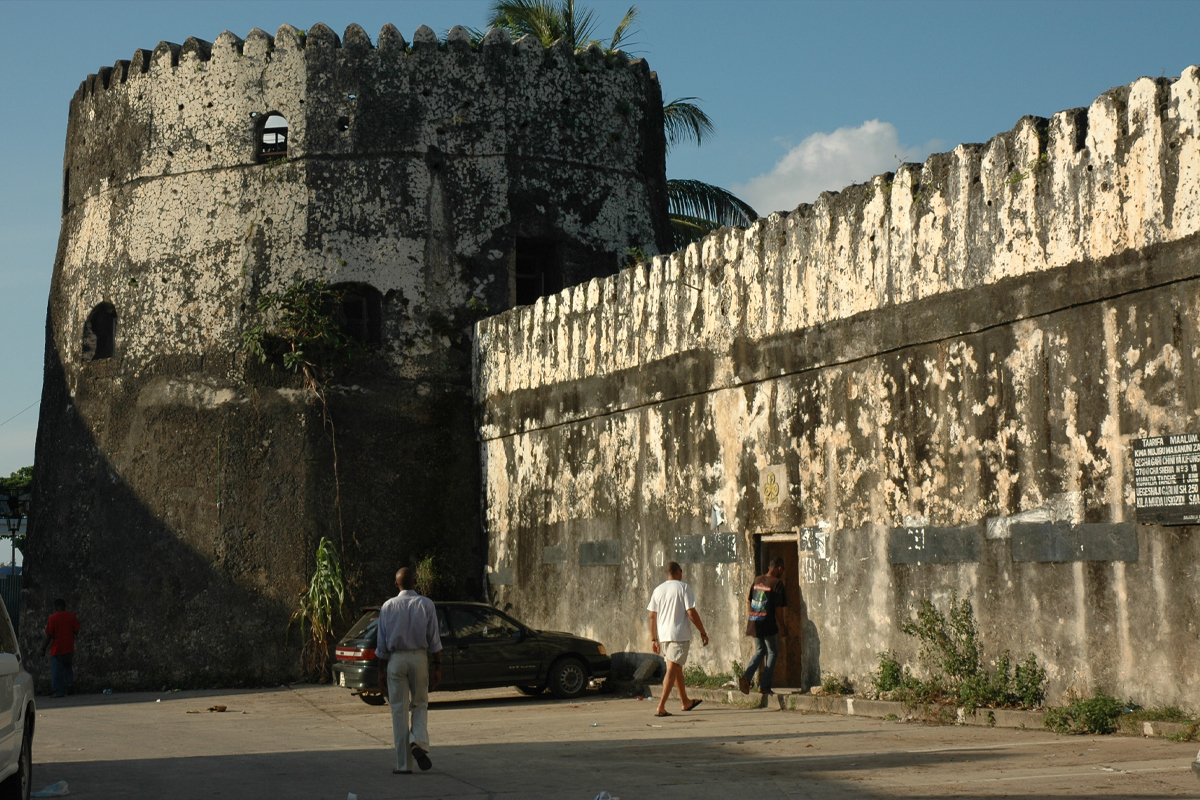
Arusha National Park
Situated at the foothills of Mount Meru, Arusha National Park is a hidden gem known for its scenic beauty and diverse wildlife. The park encompasses a variety of habitats, from lush rainforests and alpine meadows to crater lakes and savannah plains, providing a haven for a wide range of flora and fauna. Visitors can enjoy game drives, walking safaris, and canoeing excursions, encountering iconic species such as giraffes, zebras, and flamingos. Hiking enthusiasts can tackle the challenging trails to the summit of Mount Meru, which offers panoramic views of the surrounding landscape. Cultural experiences with local tribes such as the Meru and Maasai add another dimension to the park's appeal, allowing adventurers to gain insights into traditional lifestyles and customs.
.jpg)
- Altitude: Ranges from about 1,500 meters (4,920 feet) to 4,566 meters (14,980 feet) at the summit of Mount Meru
- Area: Approximately 552 square kilometers (212 square miles)
- Popularity: Popular for its diverse landscapes and Mount Meru Trekking
- Flora: Diverse habitats encompass montane forests, grasslands, and the volcanic slopes of Mount Meru, with abundant plant species including giant heather and orchids.
- Fauna: Wildlife includes colobus monkeys, buffaloes, giraffes, and various antelope species, as well as a variety of birdlife.
Mahale National Park
Nestled on the shores of Lake Tanganyika, Mahale National Park is a remote wilderness paradise known for its population of wild chimpanzees. Trekking through dense forests to observe these fascinating primates in their natural habitat is the park's main attraction, offering unforgettable encounters with one of our closest relatives in the animal kingdom. Beyond chimpanzee tracking, Mahale is also home to a diverse array of other wildlife, including forest elephants, leopards, and various species of monkeys and birds. The park's pristine beaches and clear waters provide opportunities for swimming, snorkeling, and fishing, making it a perfect destination for both wildlife enthusiasts and beach lovers seeking a secluded retreat.
- Altitude: Varies; from the shores of Lake Tanganyika (773 m) to the mountainous terrain of Mount Nkungwe (2,462 meters)
- Area: Approximately 1,613 square kilometers (623 square miles)
- Popularity: Popular for chimpanzee trekking and remote wilderness experiences
- Best Season: June to October and December to February (dry seasons)
- Flora: Dense tropical forests dominated by mahogany, ebony, and fig trees, interspersed with lush vegetation and colorful orchids.
- Fauna: Home to one of the largest populations of wild chimpanzees in Africa, as well as other primates, forest elephants, and diverse bird species.
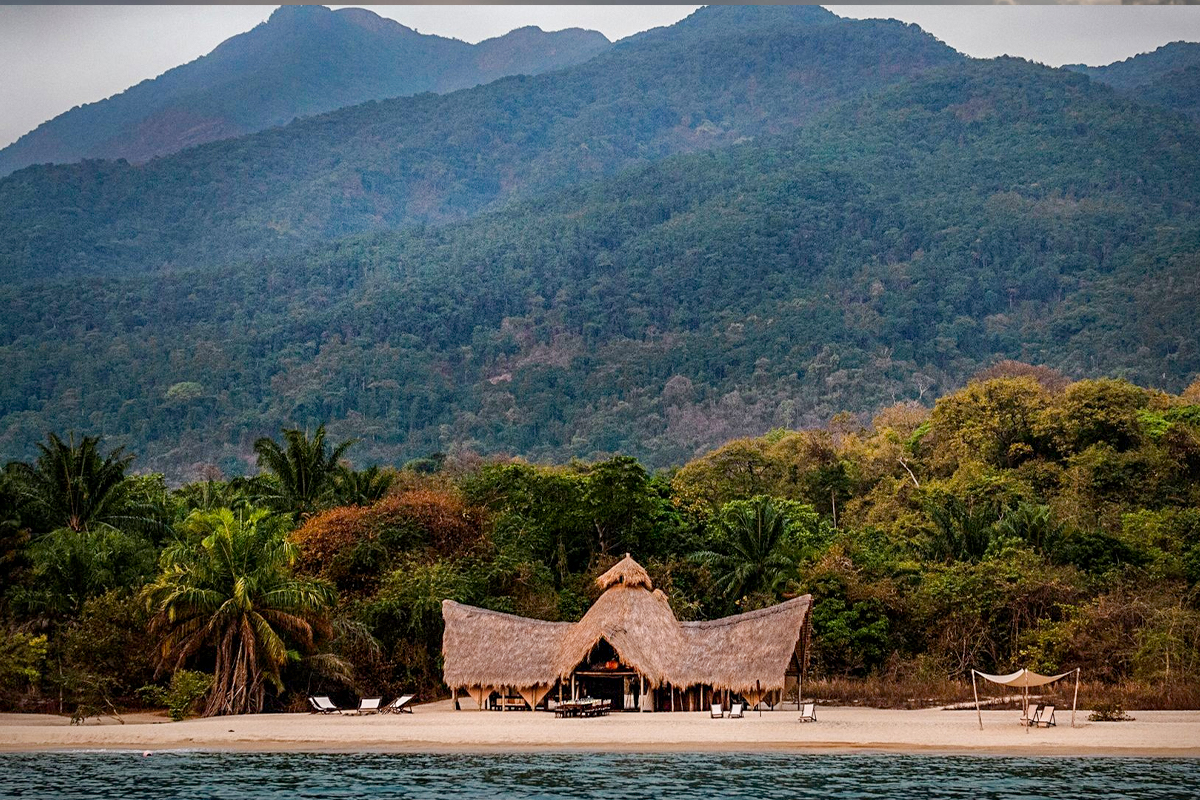
Mikumi National Parkut
Often referred to as the "Serengeti of the South," Mikumi National Park is one of Tanzania's hidden gems, offering abundant wildlife sightings without the crowds. The park's open grasslands are home to a variety of herbivores, including giraffes, zebras, and wildebeests, as well as predators such as lions, leopards, and wild dogs. Birdwatchers will also delight in the park's diverse avian population, with over 400 species recorded within its boundaries. Game drives are the primary activity in Mikumi, allowing adventurers to explore its vast expanses and encounter its resident wildlife up close. With its convenient location along the main highway connecting Dar es Salaam to Zambia, Mikumi is easily accessible and makes for an ideal stopover on a Tanzanian safari itinerary.
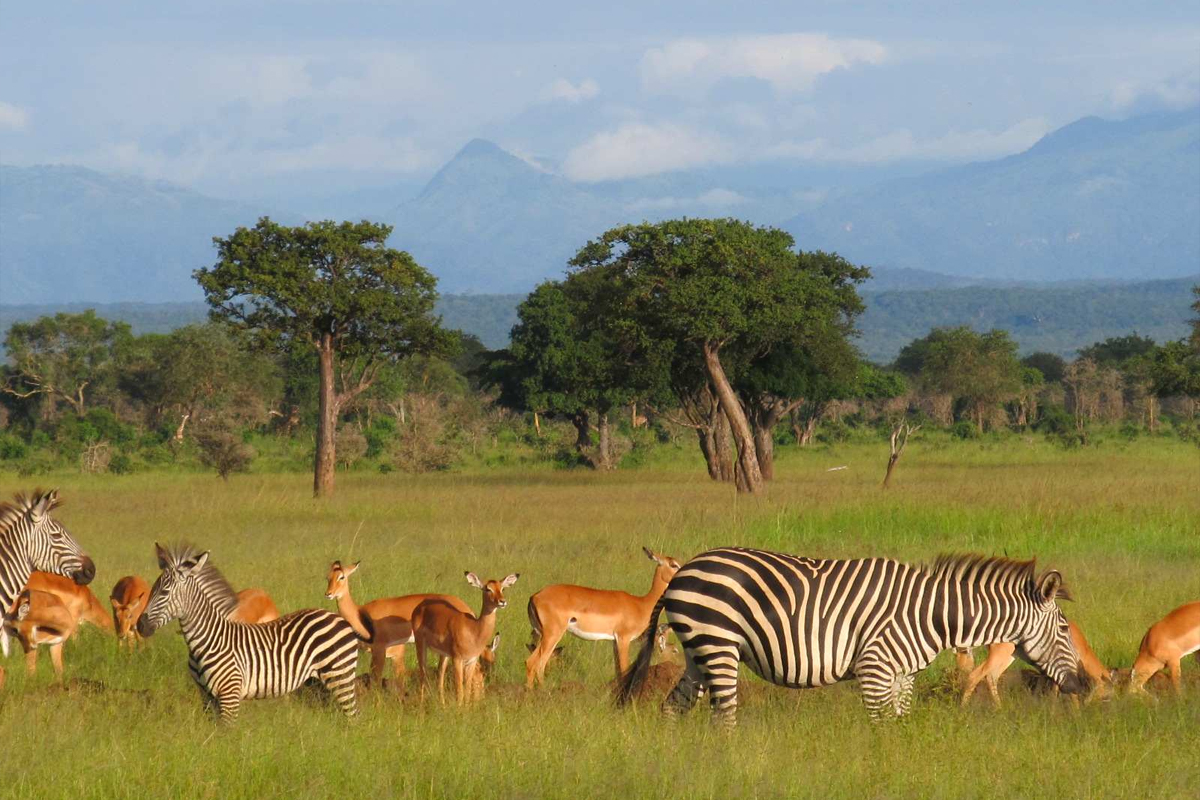
- Altitude: Varies; mostly lowland plains to a maximum elevation of 1,290 m above sea level
- Area: Approximately 3,230 square kilometers (1,250 square miles)
- Popularity: Popular for wildlife viewing and accessibility from Dar es Salaam
- Flora: Savannah grasslands with baobab trees, acacias, and other drought-resistant plants adapted to the park's dry climate.
- Fauna: Wildlife includes lions, giraffes, zebras, buffaloes, and a variety of antelope species, as well as over 400 bird species.
Ruaha National Park
Tanzania's largest national park, Ruaha is a vast wilderness area teeming with wildlife and dramatic landscapes. Situated in the heart of the country, it offers a remote and off-the-beaten-path safari experience far from the crowds of more popular destinations in Tanzania. The park's rugged terrain is home to a diverse array of wildlife, including large herds of elephants, buffaloes, and antelopes, as well as predators such as lions, leopards, and cheetahs. The Great Ruaha River, which meanders through the park, serves as a lifeline for its inhabitants, attracting large concentrations of animals during the dry season. Travelers can explore the park on game drives, walking safaris, and boat trips, enjoying unparalleled opportunities to observe its resident wildlife in its natural habitat.
- Altitude: Varies; from about 600 meters (1,970 feet) to 1,900 meters (6,230 feet)
- Area: Approximately 20,226 square kilometers (7,809 square miles)
- Popularity: Popular for its rugged landscapes and large wildlife populations
- Flora: Varied landscapes include riverine forests, miombo woodlands, and rocky escarpments, supporting diverse plant species such as baobabs and sausage trees.
- Fauna: Large concentrations of elephants, as well as lions, leopards, wild dogs, and rare species such as sable antelopes and greater kudus.
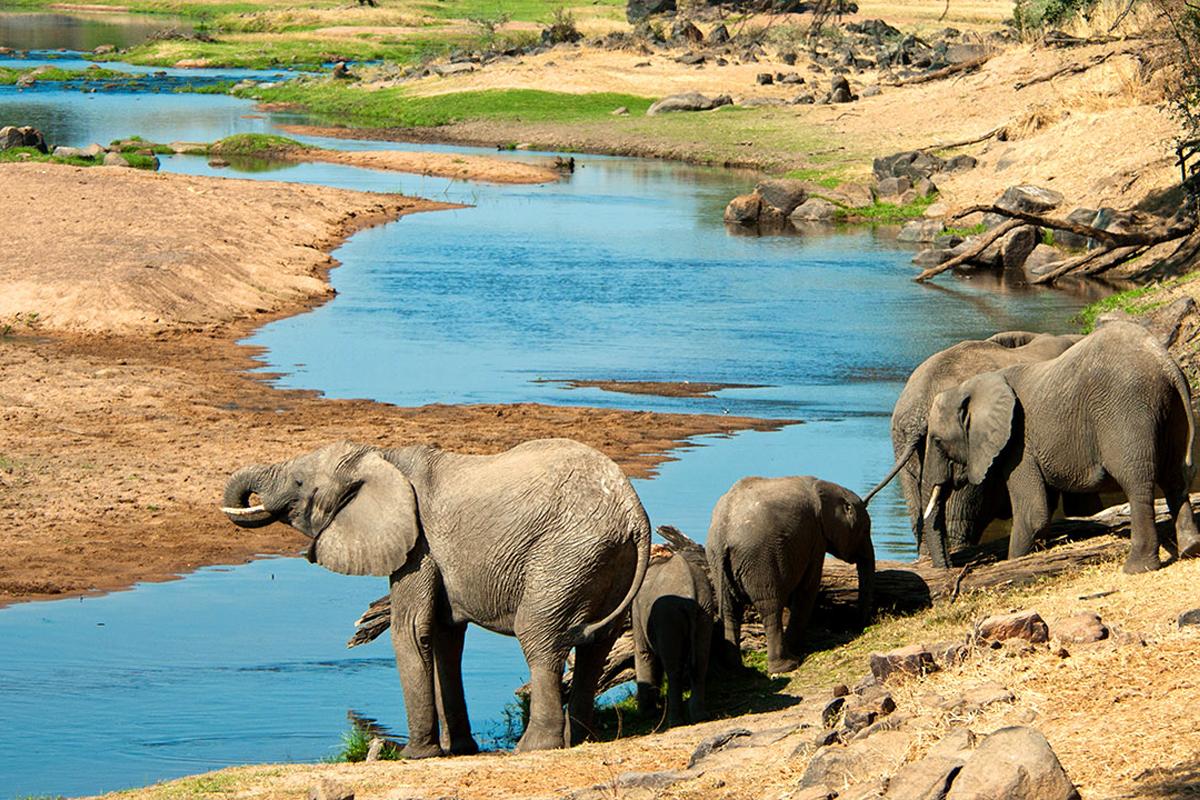
Beaches of Zanzibar
With its powdery white sands, turquoise waters, and swaying palm trees, the beaches of Zanzibar are the epitome of tropical paradise. From the bustling shores of Nungwi and Kendwa to the secluded coves of Matemwe and Paje, the island offers a beach experience to suit every traveler's preferences. Water sports enthusiasts can indulge in snorkeling, diving, kite surfing, and dhow cruises, exploring the vibrant coral reefs and marine life that thrive offshore. For those seeking relaxation, there are plenty of beachfront resorts and boutique hotels where you can unwind in luxury and soak up the island's laid-back vibe. As the sun sets over the Indian Ocean, beach bonfires and traditional Swahili performances add to the magic of Zanzibar's coastal evenings, creating memories that will last a lifetime.
- Altitude: Near sea level
- Area: Varies by beach; the main island of Zanzibar is approximately 1,554 square kilometers (600 square miles)
- Popularity: Extremely popular for beach vacations and water sports
- Flora: Coastal vegetation includes palm trees, coconut groves, and mangroves, with vibrant tropical flowers and shrubs adorning the sandy shores.
- Fauna: Marine life includes coral reefs with colorful fish, sea turtles, and occasional sightings of dolphins and whale sharks.
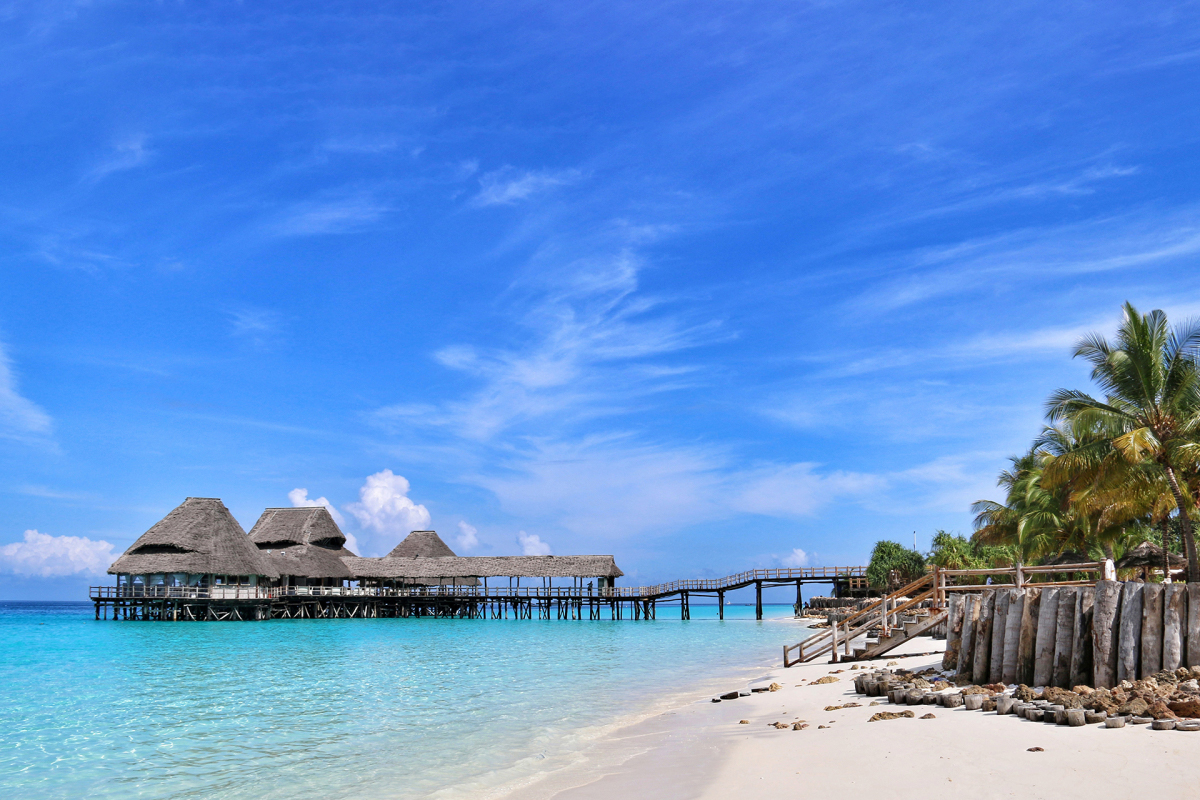
Selous Game Reserve
Covering an area larger than Switzerland, the Selous Game Reserve is one of the largest protected areas in Africa and a UNESCO World Heritage Site. Named after British explorer and hunter Frederick Selous, the reserve is renowned for its pristine wilderness and abundant wildlife. Travelers can embark on boat safaris along the Rufiji River, spotting hippos, crocodiles, and a variety of waterbirds, or explore the reserve's vast plains and woodlands on guided game drives making it unique things to do in Tanzania. With its low visitor numbers and exclusive safari lodges, Selous offers a truly remote and intimate safari experience, allowing guests to immerse themselves in the sights and sounds of the African bush away from the crowds.
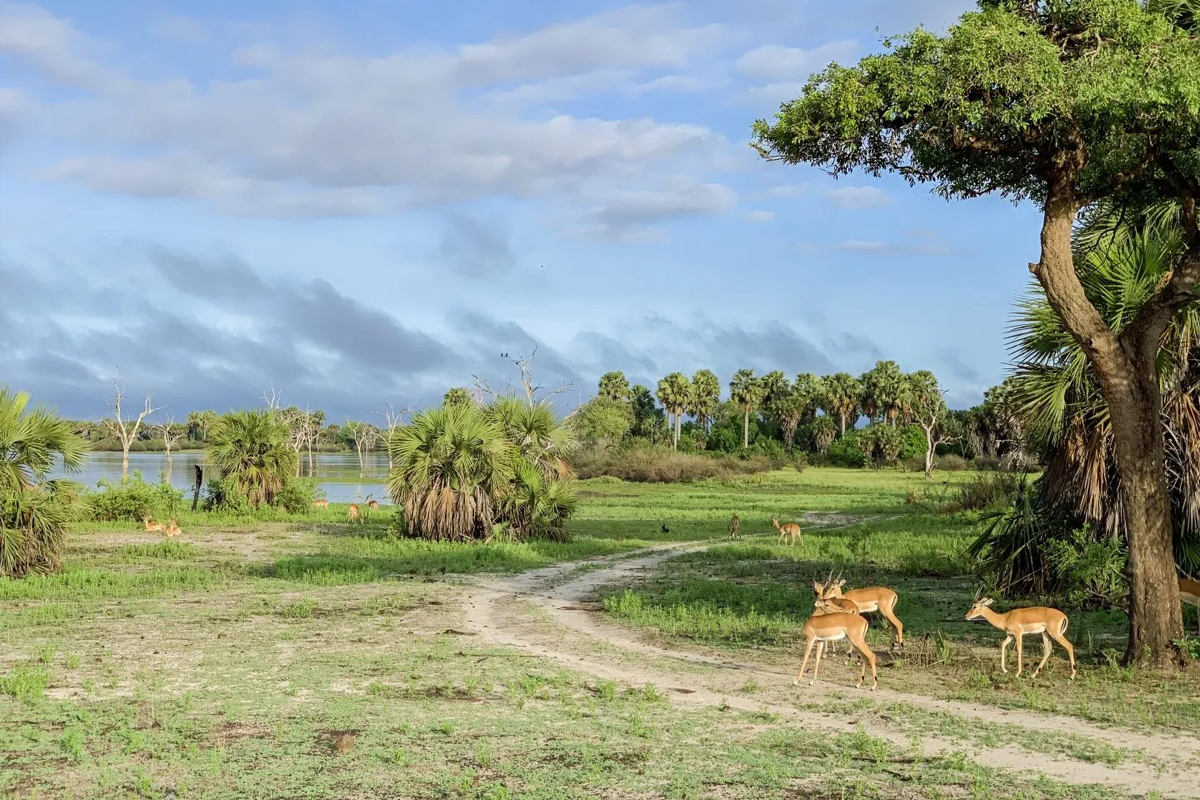
- Altitude: Varies; mostly lowland plains
- Area: Approximately 50,000 square kilometers (19,300 square miles)
- Popularity: Popular for boat safaris and remote wilderness experiences
- Flora: Varied habitats encompass savannah grasslands, miombo woodlands, and riverine forests, with diverse plant species supporting abundant wildlife.
- Fauna: One of the largest populations of African wild dogs, as well as elephants, hippos, crocodiles, and a wide variety of bird species.
Mafia Island
Tucked away in the Indian Ocean, Mafia Island is a hidden gem known for its unspoiled beauty and rich marine biodiversity. Protected as part of the Mafia Island Marine Park, it offers pristine coral reefs, crystal-clear waters, and some of the best diving and snorkeling opportunities in East Africa. Visitors can explore vibrant underwater seascapes teeming with colorful fish, turtles, and rays, as well as larger marine species such as whale sharks and dolphins. Above the surface, the island's mangrove forests, secluded beaches, and traditional fishing villages provide opportunities for eco-friendly excursions and cultural encounters. Whether you're seeking adventure or relaxation, Mafia Island offers a tranquil escape from the hustle and bustle of everyday life, where you can reconnect with nature and rejuvenate your senses.
- Area: Approximately 413 square kilometers (160 square miles)
- Popularity: Popular for diving, snorkeling, and secluded beach getaways
- Flora: Mangrove forests, coastal shrubs, and tropical fruit trees such as mangoes and papayas characterize the island's vegetation.
- Fauna: Rich marine biodiversity includes coral reefs, reef fish, octopuses, and colorful nudibranchs, as well as occasional sightings of whale sharks and humpback whales.
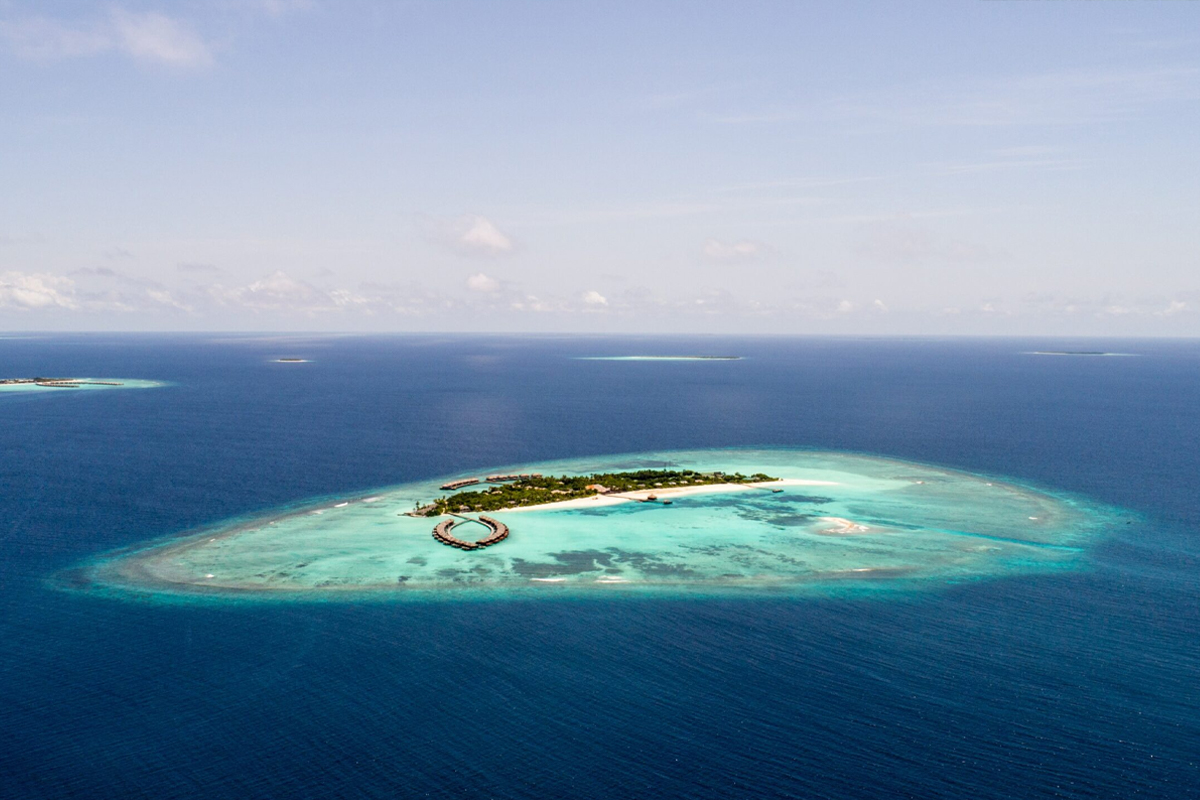
Materuni Waterfalls
Hidden in the foothills of Mount Kilimanjaro, Materuni Waterfalls is a hidden gem known for its natural beauty and cultural heritage. The waterfall cascades over 80 meters down a sheer rock face, creating a mesmerizing display of cascading water and mist. Visitors can hike through lush coffee plantations and banana groves to reach the falls, pass through picturesque villages, and learn about traditional Chagga culture. Swimming in the refreshing pool at the base of the falls is a popular activity, offering a welcome respite from the tropical heat. Guided tours allow travelers to explore the area with knowledgeable local guides who can share insights into the region's history, flora, and fauna. Whether you're a nature lover, adventure seeker, or cultural enthusiast, Materuni Waterfalls offers a memorable experience that showcases the best of Tanzania's natural and cultural heritage.
- Altitude: Approximately 1,500 meters (4,920 feet) above sea level
- Popularity: Popular for day trips and hiking excursions
- Best Season: Year-round, but June to September is drier and more comfortable for hiking
- Flora: Lush montane forests with coffee and banana plantations, ferns, mosses, and other vegetation adapted to the misty environment.
- Fauna: Various bird species, butterflies, and small mammals inhabit the area surrounding the waterfall, adding to its natural beauty and biodiversity.
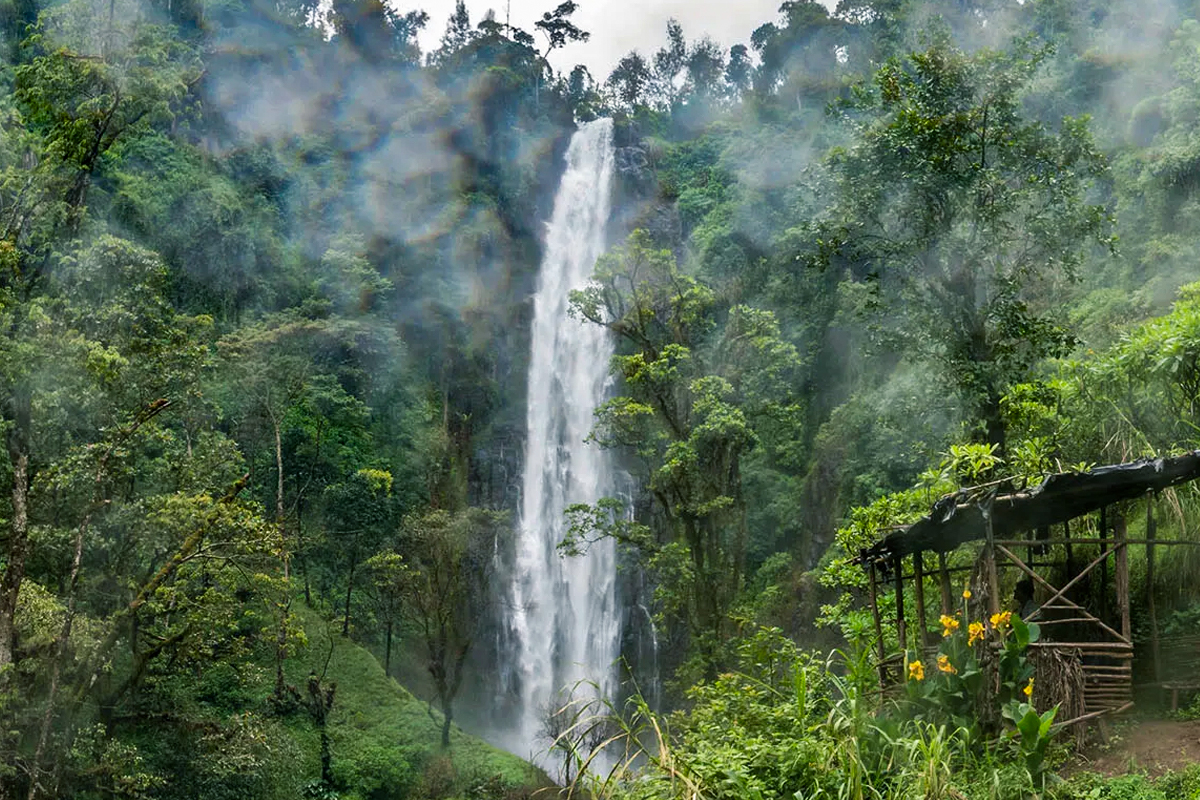
Conclusion
In conclusion, Tanzania is home to an array of natural wonders that attract tourists worldwide. From the snowy peaks of Mount Kilimanjaro to the vast plains of the Serengeti, there is something for everyone in this beautiful country. The national parks offer opportunities for wildlife watching, while the islands provide tranquil settings for relaxing and exploring underwater worlds. With its rich cultural heritage and stunning scenery, Tanzania truly has it all. Whether you're looking for adventure, relaxation, or simply a chance to experience nature at its finest, Tanzania should be on your list of must-visit destinations. For any queries relating to Tanzania, Kilimanjaro Climbing , or Wildlife Safaris , contact us, here .
FAQS On Tanzania Tour
What is tanzania most famous for.
Tanzania is most famous for its stunning wildlife and natural wonders. The country is home to the Serengeti National Park, known for the annual Great Migration of millions of wildebeest and zebras, and Mount Kilimanjaro, the highest peak in Africa. Tanzania is also renowned for its beautiful beaches on the island of Zanzibar and the diverse cultures of its over 120 ethnic groups.
How many days are enough for Tanzania?
To fully experience Tanzania, 10 to 14 days are generally recommended. This allows you to explore key attractions such as a safari in the Serengeti, a visit to Ngorongoro Crater, and some relaxation time on Zanzibar's beaches. If you're planning to climb Mount Kilimanjaro, you should add an additional 7 to 9 days for the trek.
What to do in Tanzania other than safari?
Beyond safaris, Tanzania offers a variety of activities:
Climbing Mount Kilimanjaro: For adventure seekers, summiting Africa's highest mountain is a once-in-a-lifetime experience. Beach Relaxation: Zanzibar, with its white sandy beaches and turquoise waters, is perfect for unwinding. Cultural Tours: Visit local villages, such as the Maasai, to learn about Tanzania's rich cultural heritage. Snorkelling and Diving: The waters around Zanzibar and Pemba Island are ideal for exploring vibrant coral reefs and marine life. Exploring Stone Town: In Zanzibar, Stone Town is a UNESCO World Heritage Site filled with history, narrow alleyways, and bustling markets.
Is Tanzania expensive to visit?
Tanzania can be both affordable and expensive, depending on your travel style. Luxury safaris and high-end lodges can be quite costly, but there are budget options available as well. Staying in local guesthouses, using public transportation, and choosing mid-range safari packages can help reduce costs. Overall, while Tanzania is not the cheapest destination, it offers good value for the experiences it provides.
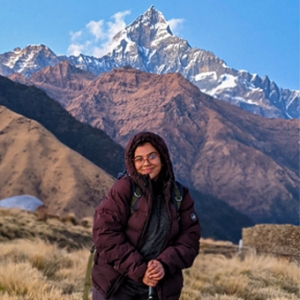
Ashmita Thapa
Ashmita is a content writer at Footprint Adventure with a really positive outlook on life. She is dedicated to exploration, and enjoys going on hikes and treks. She is delighted to travel and explore the beauty of Nepal with Footprint Adventure. She genuinely believes in promoting her native country in whatever manner she can, with the goal of making the biggest possible contribution to the travel and tourism sector.
Ashmita adds that she is extremely appreciative of Footprint Adventure for offering her the opportunity to learn more about travel and tourism. She would also like to grow here with more dedication and effort for the company. She also values the chance to meet new people, explore various regions and cultures, and broaden her knowledge about travel and tourism in Nepal.
"Self-improvement comes through change. Push yourself to the places you've never been before"
- High Altitude Sickness
- Travel Guide & Tips
- National Parks
- Information
Send an Enquiry
Recent posts.
- Thimphu Tsechu Festival in Bhutan 2024| Footprint Adventure
- Where is Kilimanjaro? - Footprint Adventure
- Boudhanath Stupa- The Largest Spherical Stupa in the World
- Tengboche Monastery: A Spiritual Oasis in Khumbu Region of Nepal
- Kalapatthar : The Ulimate View Point in the Everest Base Camp Trek
- Low Impact Trekking Guidelines- For Conscious Travel in Nepal
Related Posts
- Changu Narayan Temple: The Oldest temple of Nepal
- Annapurna Circuit Trek Guidebook | What to expect?
- Accommodations
- Adventure Sports
- Adventure Tourism
- Cultural & Historical
- Festivals & Events
- Food and Taste
- Heritage Sites
- National Parks & Conservation Areas
- News & Events
- Photography
- Sustainable Tourism
- Temples & Monasteries
- Things To Do
- Uncategorized
- UNESCO World Heritage Sites
We use cookies to ensure that we give you the best experience on our website.
When To Climb?
- Kilimanjaro in January
- Kilimanjaro in February
- Kilimanjaro in March
- Kilimanjaro in April
- Kilimanjaro in May
- Kilimanjaro in June
- Kilimanjaro in July
- Kilimanjaro in August
- Kilimanjaro in September
- Kilimanjaro in October
- Kilimanjaro in November
- Kilimanjaro in December
Before You Climb
- 6 Days Machame
- 6 Days Marangu
- 6 Days Rongai
- 7 Days Machame
- 8 Days Lemosho
Which Route ?
- Pre-Climb Training
- Altitude Acclimatisation
- Medical Checks
- Kilimanjaro Packing List
- Visa & Passport
- Vaccinations
- Healty And Safety
On Kilimanjaro
- Kilimanjaro Weather
- Kilimanjaro Zones
- Daily Schedule
- Tents & Huts
- Trail Conditions
- Public and Private Toilets
- Your Accommodation Before & After
- Our Kilimanjaro Staff
Health & Safety
- On Trek Health & Safety
- Safety Precautions
- Prevent Altitude Sickness
- Treat Altitude Sickness
- Daily Health Check
- Rescue and Evacuation
Kilimanjaro FAQ’s
- Planning for kili
- Preparation for Kili
- On kilimanjaro
- After Kilimanjaro
When To Go To Tanzania
- Tanzania in January
- Tanzania in February
- Tanzania in March
- Tanzania in April
- Tanzania in May
- Tanzania in June
- Tanzania in July
- Tanzania in August
- Tanzania in September
- Tanzania in October
- Tanzania in November
- Tanzania in December
Where To Go To Tanzania
- West Kilimanjaro
- Dar es Salaam
- Arusha National Park
- Gombe Stream National Park
- Katavi National Park
- Lake Manyara National Park
- Mahale Mountains National Park
- Mikumi National Park
- Mkomazi National Park
- Nyerere National Park
- Ruaha National Park
- Rubondo Island National Park
Saadani National Park
- Serengeti National Park
- Tarangire National Park
- Udzungwa Mountains National Park
- Lake Natron
- Lake Victoria
- Mount Kilimanjaro
- Bawe Island
- Chapwani Island
- Chumbe Island
- Fanjove Island
- Lazy Lagoon Island
- Mafia Island
- Mnemba Island
- Pemba Island
- Chat with Sales
- About Easy Travel
- Mountain Guides
- Driver Guides
Where To Go In Tanzania
Towns in Tanzania
Cities in Tanzania
Parks in Tanzania
Conservations in Tanzania
Lakes in Tanzania
Mountains in Tanzania
Islands In Tanzania
Migration safari, view all safari tours.
All you need to know about tanzania?
When is the best time to visit tanzania?
Where to go in tanzania

Complete Migration Guide

Tanzania Visa Requirement
Machame route, lemosho route, view all kili tours.

Which route to climb on Kilimanjaro
When is the best time to climb kilimanjaro.


The ultimate packing guide for Kilimanjaro

How long does it take to climb Kilimanjaro

Before you go
Indian ocean, view all zanzibar tours.

Things to do in Stone Town

The best way to see Zanzibar

The Seasons And Tides Of Zanzibar

Where To Stay In Zanzibar
Things to do in zanzibar.
- Kilimanjaro

Tanzania Travel Guide

NORTHERN CIRCUIT
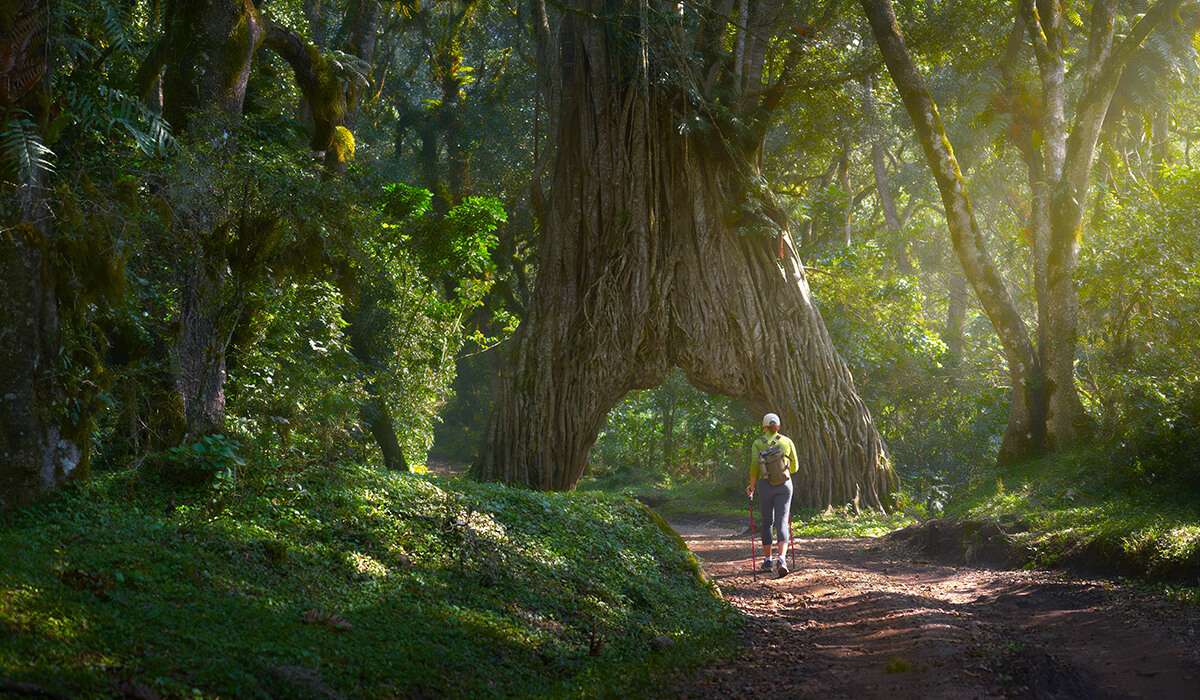
SOUTHERN CIRCUIT
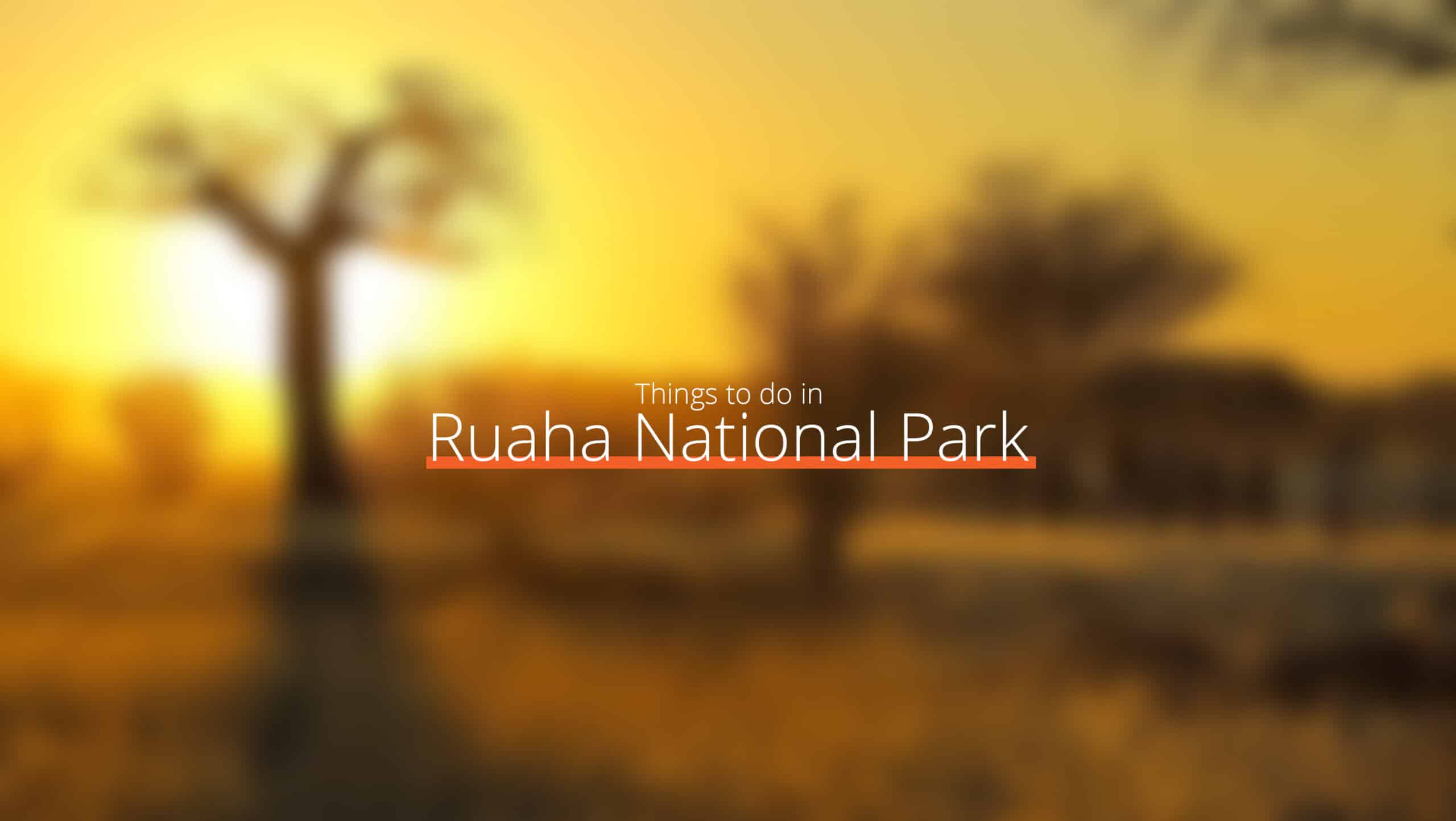
WESTERN CIRCUIT
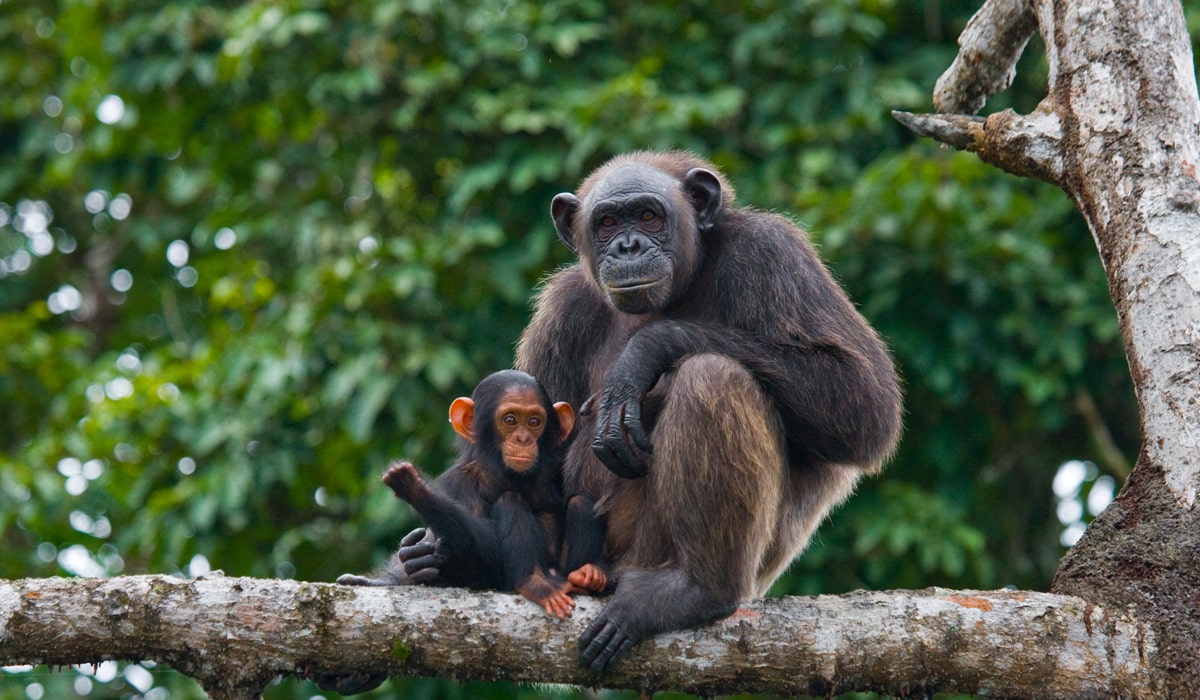
EASTERN CIRCUIT
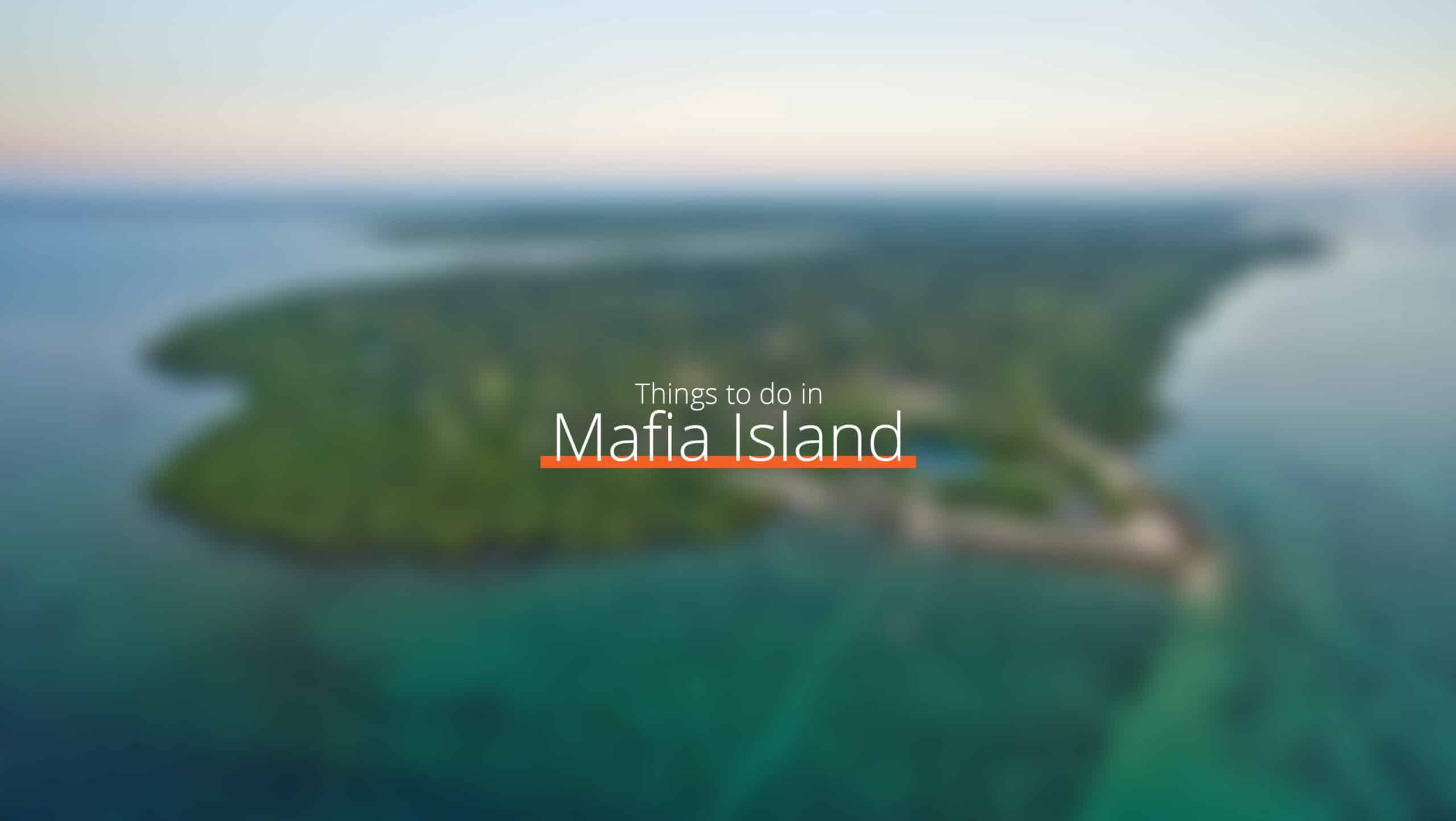
About Tanzania
Tanzania is one of the most impressive safari destinations in East Africa. With its culture-rich atmosphere, spectacular natural attractions, and an abundance of things to do, you’ll need a lifetime to explore everything the country has to offer.
It’s home to some of Africa’s most famous national parks and boasts an unmatched safari circuit. Split up into four sections (north, south, east, west); you could spend your entire vacation hopping from one park to the next and experience wildly different landscapes and wildlife.
But Tanzania’s appeal doesn’t stop at game viewing. Inside its borders, you’ll find the highest mountain in Africa, palm-fringed beaches of Zanzibar, the statuesque Maasai warriors, and the intriguing histories of Stone Town.
Tanzania has it all. Are you ready to experience it for yourself?
Tanzania Articles
- How much should you tip in Tanzania
- How to spend your honeymoon in Tanzania
- Is it safe to travel solo in Tanzania?
- 10 tips to get the most out of your Tanzania safari adventure
- Top 10 things to do in Tanzania
- The best National Parks to visit in Tanzania
- The best time to go on a safari in Tanzania
- What to consider when planning a luxury safari in Tanzania
- Weddings in Tanzania: Unique ways to get married
Easy Travel's Recommended Tanzania Safari Tours & Kilimanjaro Trekking

Tanzania Safari Travel Guide
Why visit tanzania.
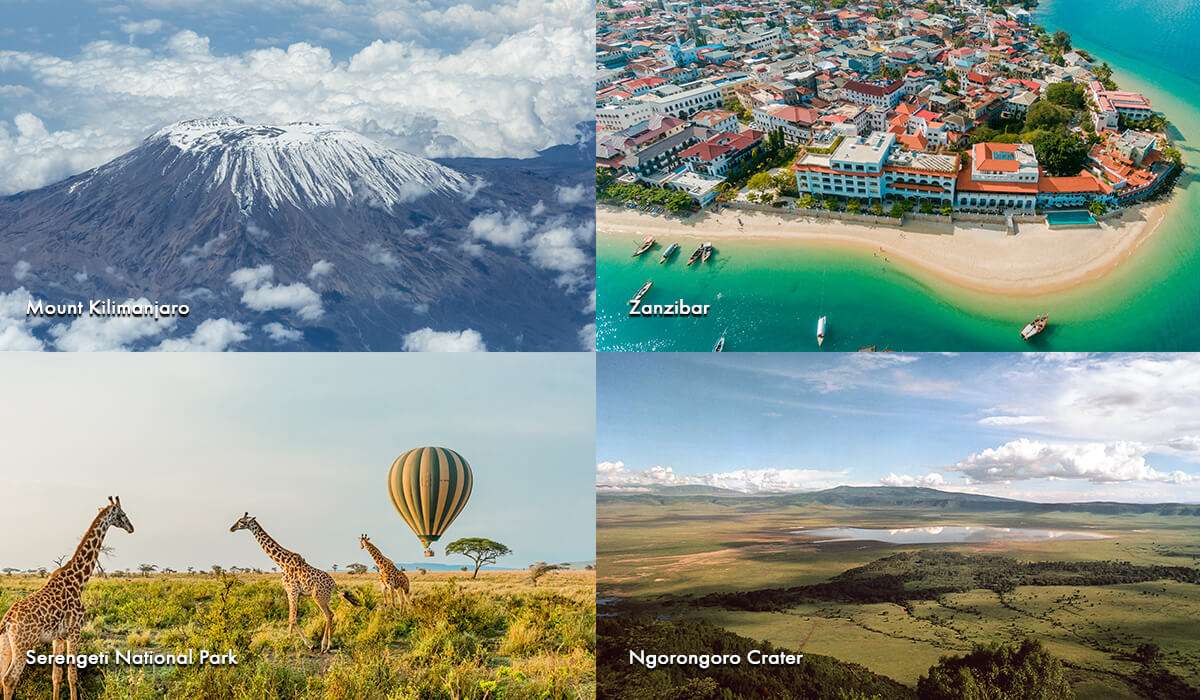
Tanzania is a country full of seductive beaches, UNESCO World Heritage Site, astounding natural scenery, and some of the best wildlife viewing in Africa.
It’s a destination for the adventurous traveler. Whether you want to summit Mount Kilimanjaro, explore the depths of the Zanzibar Archipelago, or drive off into the Serengeti in search of the Great Migration.
For a slower pace that’s still full of adventure, float over the plains with a hot air balloon safari, unwind on the white sand beaches of Pemba Island, or explore the histories of Stone Town.
You can do all of this and more in Tanzania!
When is the best time to go to Tanzania?
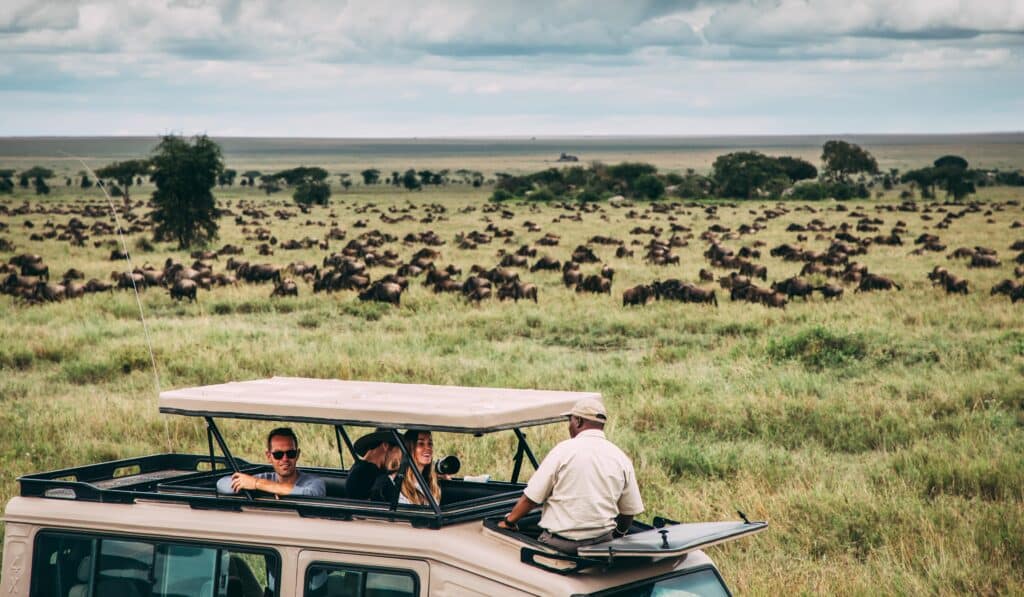
The best time to go to Tanzania depends on what you want to see. There’s no bad time to plan a trip, but each season comes with its own highlights.
During the dry season (June to September), it’s prime safari weather. Wildlife flock to the watering holes, and the bush is thin, making it easy to spot those elusive Big Cats.
For trekking, June to October are the best months to climb Kilimanjaro. The weather is dry, and you’ll have a much easier time summiting the highest mountain in Africa.
In the wet season (October to April), you’ll have prime viewing for bird watching and baby animals. With over 1,000 native bird species and migratory birds from Europe and North Africa, there’s plenty to see if you don’t mind a bit of rain.
Which are the best National Parks in Tanzania?
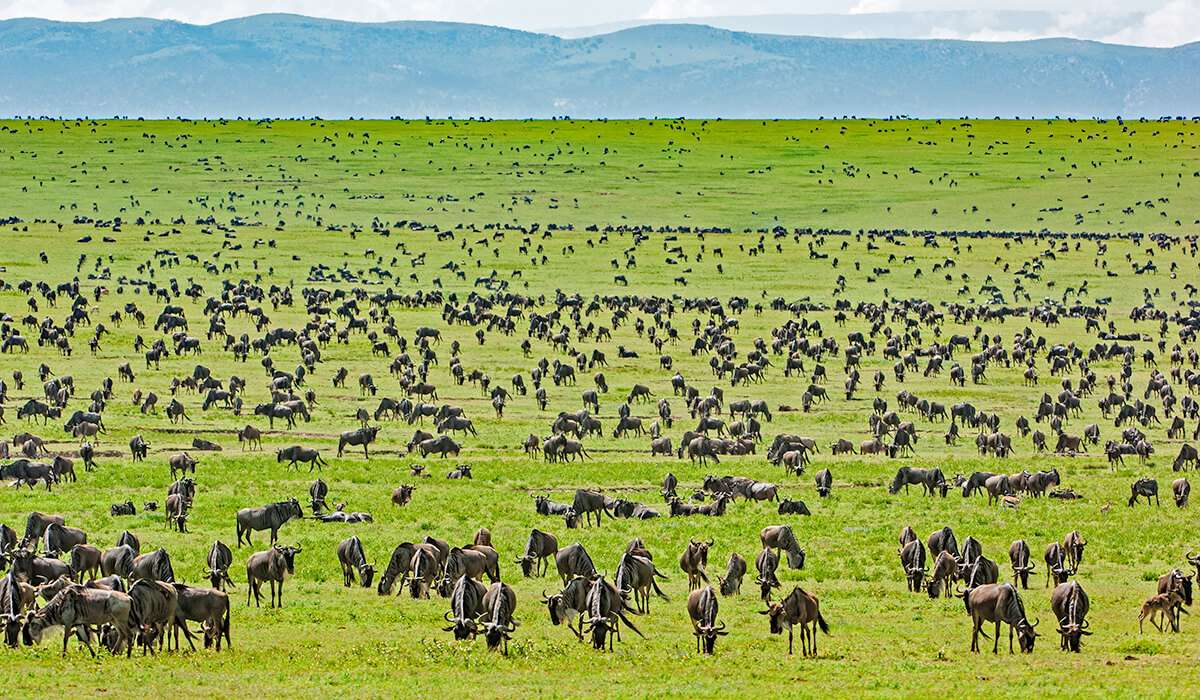
With 22 national parks to choose from, it can feel overwhelming trying to plan your Tanzania safari. Here’s a quick breakdown to help you decide between the best national parks in Tanzania:
Northern circuit:
Serengeti National Park, Tarangire National Park, Ngorongoro Crater, Kilimanjaro National Park, and Lake Manyara National Park.
Southern circuit:
Nyerere National Park and Ruaha National Park.
Western Circuit:
Gombe Stream National Park and Mahale Mountains National Park.
Eastern circuit:
These parks offer some of the best wildlife viewing in Tanzania, as well as unique landscapes you won’t find anywhere else.
What to see in Tanzania?

There are so many things to do in Tanzania. You could spend weeks or even months here and still find attractions and places to visit. Some of the top sights in Tanzania include Mount Kilimanjaro (one of the Seven Summits), Serengeti National Park (home of the Great Wildebeest Migration), Stone Town in Zanzibar, Pemba and Mafia Island, Arusha National Park, Ngorongoro Conservation Area (famous for its crater and Big 5 sightings), Tarangire National Park, Nyerere National Park (the largest game reserve in Africa) and Jane Goodall’s chimpanzee research in Gombe Stream National Park.
Where to stay in Tanzania

Tanzania has a variety of accommodation options to suit any budget. If you want to keep your costs as low as possible, book one of our basic tours. It includes all the camping equipment and stay at campsites within the different national parks.
Want some more creature comforts? Upgrade to a tented camp (glamping), and you won’t have to bring anything except your standard luggage. If you want to spoil yourself, book one of Tanzania’s luxury lodges. There are dozens of four and five-star camps to choose from with different price points and inclusions.
How many seasons are there in Tanzania?

There are four seasons in Tanzania. The Dry Season (June to October) is the most popular time of year to visit Tanzania. Accommodation and flight prices peak, and you’ll get to experience the Great Wildebeest Migration. January to February is the Green Season. It’s Tanzania’s second high season and another fantastic period to go on safari and see big cat action.
The Long Rain Season (March to May) is the best time to travel to Tanzania on a budget. You’ll find cheap flights and lodges knocking off as much as 50% off their standard rates. The only downside? The rains make some of the national parks inaccessible. The Short Rain Season (November to December) is a busy period despite the less-than-perfect weather. Travelers flock here for the end-of-year holidays, and accommodation prices are high.
Is Tanzania a safe country?
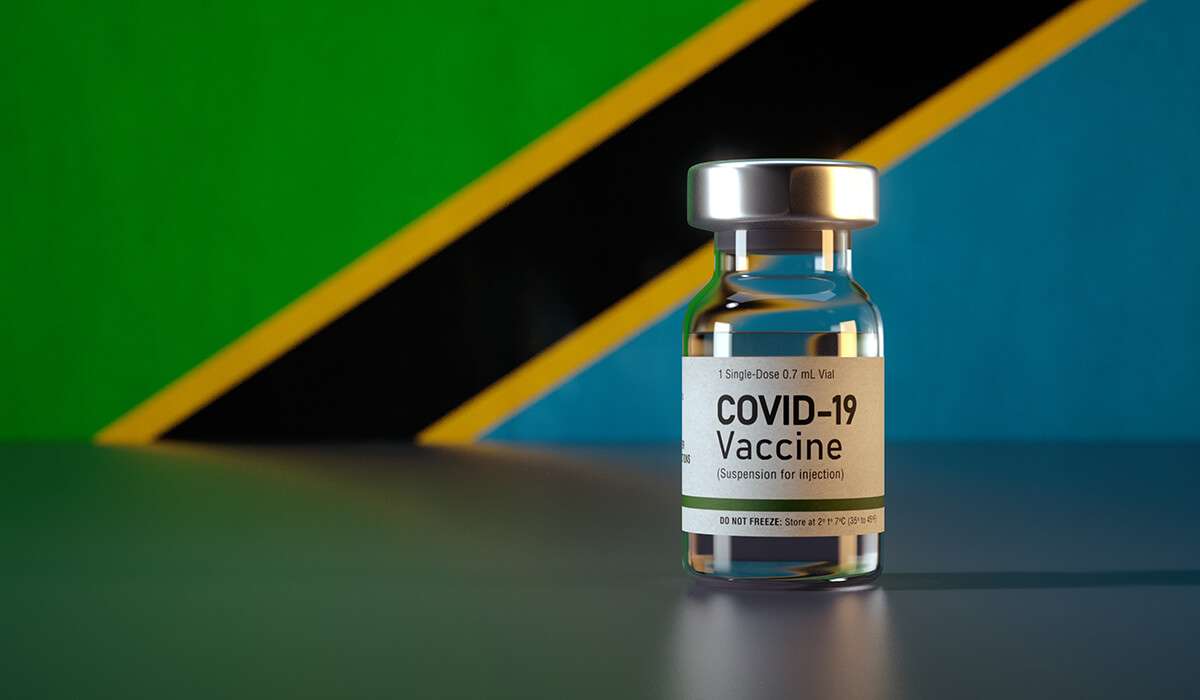
Yes, Tanzania is a safe country. It’s the largest East Africa nation and is one of the most peaceful countries on the continent.
One thing you’ll need to keep in mind before you arrive is the COVID travel restrictions to travel to Tanzania. While reported cases and deaths aren’t as high as other destinations, you’ll need to adhere to the safety protocols for the coronavirus in Tanzania.
All visitors to Tanzania must have a negative 96-hour PCR test on arrival. When you land at the airport, you’ll need to take a covid antigen test at your expense.
Should you need a negative PCR to board your flight back home, you can take a covid test in Tanzania by pre-booking your appointment with select clinics.
What is Tanzania weather like?

If you want to go on safari in Tanzania, the best time to visit is during the dry seasons. January to February and June to early October, see hardly any rainfall and the wildlife flocks around the dwindling water holes. However, the two rainy seasons (March to May and November to December) have their charms. It’s prime time to see baby animals, migrating birds and scoop up incredible deals at Tanzania’s top lodges.
What is the landscape and wildlife like in Tanzania?

Tanzania is famous for its diverse wildlife and spectacular landscapes. Inside the country’s 22 national parks, you’ll find 20% of Africa’s large mammal population and incredible experiences like the Great Wildebeest Migration and Jane Goodall’s chimpanzee research in Gombe National Park.
Tanzania’s defining natural attraction is Mount Kilimanjaro. One of the Seven Summits, the mountain dominates the landscape and is home to five different climate zones. Further afield, the Ngorongoro Conservation Area (a UNESCO World Heritage Site) is the largest intact caldera in the world and one of the best places to see the Big 5 in Tanzania.
What is the history of Tanzania?

The United Republic of Tanzania has a rich history, dating back millions of years, and is the 13th largest country in Africa. Its Olduvai Gorge region is called “The Cradle of Mankind.” Here, researchers have found 3.6-million-year-old footprints from our immediate human ancestors, the Laetoli.
Tanzania (the name) is the combination of Tanganyika and Zanzibar. On 26th April 1964, the two regions unified, forming the United Republic of Tanzania after becoming free from British colonial rule. The same year, Prime Minister Mwalimu Julius K. Nyerere became president of Tanzania and introduced African socialism (aka Ujamaa) to promote justice and equality.
What are the people in Tanzania like?

Tanzania is home to a mix of 120 ethnicities and tribes. The country has Africans (95% are of Bantu origin) and a significant number of Arabs and Asians with a small European community. On Zanzibar (where 3% of Tanzania’s population resides), you can find the Shirazi people, descendants of immigrants from Shiraz in Iran. But Tanzania’s most famous and iconic tribe is the Maasai, a Nilotic ethnic group. This tribe surged in popularity due to living near some of the top game reserves in Tanzania, and their distinctive customs and dress.
What language do they speak in Tanzania?
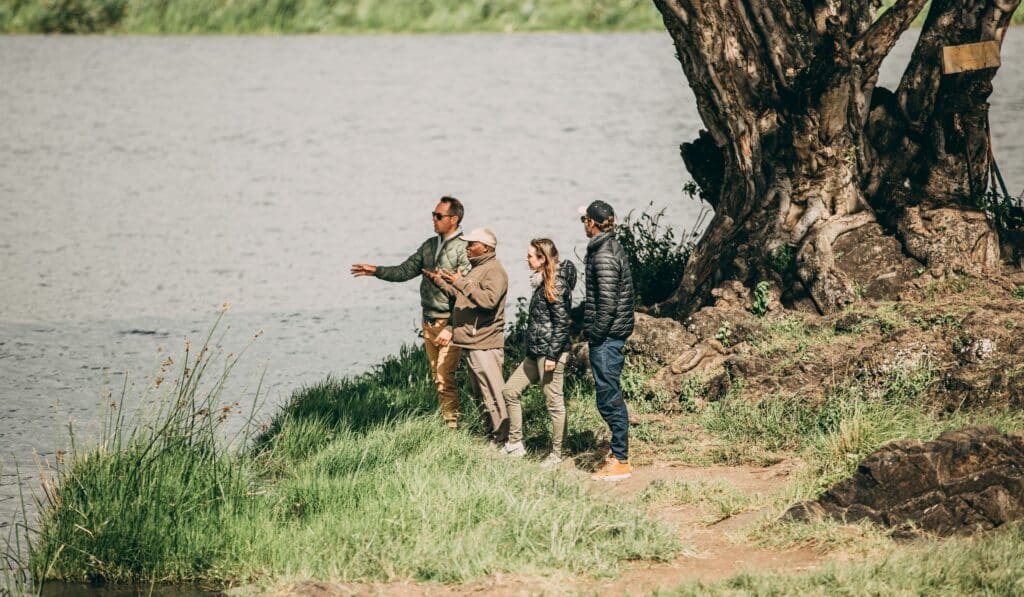
Tanzania is the most linguistically diverse country in Africa. It’s home to over 100 languages, split amongst the country’s 129 different ethnic groups. In an effort to make sure that no one tribe dominates in the country, there is no de jure official language.
However, Swahili is the national language of Tanzania and is spoken by a large percentage of the population. English is used as a de facto language in Tanzania and is a remnant of colonial rule. You’ll find most people can speak and understand it in the cities, but it’s not widely spoken in the rural areas.
Why should you book your trip with Easy Travel?

Easy Travel takes the hassle out of planning a trip to Tanzania. With over 35-years of experience, the team and guides know how to plan custom-made itineraries and run an unforgettable trip you’ll rave about for years.
As an elite KPAP certified operator, and three decades running treks to the top of Mount Kilimanjaro, you know you’re dealing with an ethical tour company who will look after you and their porters.
Don’t believe us? Our reviews speak for themselves. Easy Travel received TripAdvisor’s Certificate of Excellence nine years in a row and we have 2000+ positive reviews on the platform with 96% five-star rating.
Where to go in Tanzania
Scintillating safaris, majestic mountains, crystal-clear ocean waters, vibrant cities. Tanzania has everything, all you have to do is choose!

Tanzania's Northern Circuit
Tanzania’s northern circuit is undoubtedly the most popular of all four points of the compass in Tanzania.
The north is where you’ll find such world-famous landmarks as the sprawling Serengeti, the iconic Ngorongoro Crater, and the highest mountain in Africa, Mount Kilimanjaro.
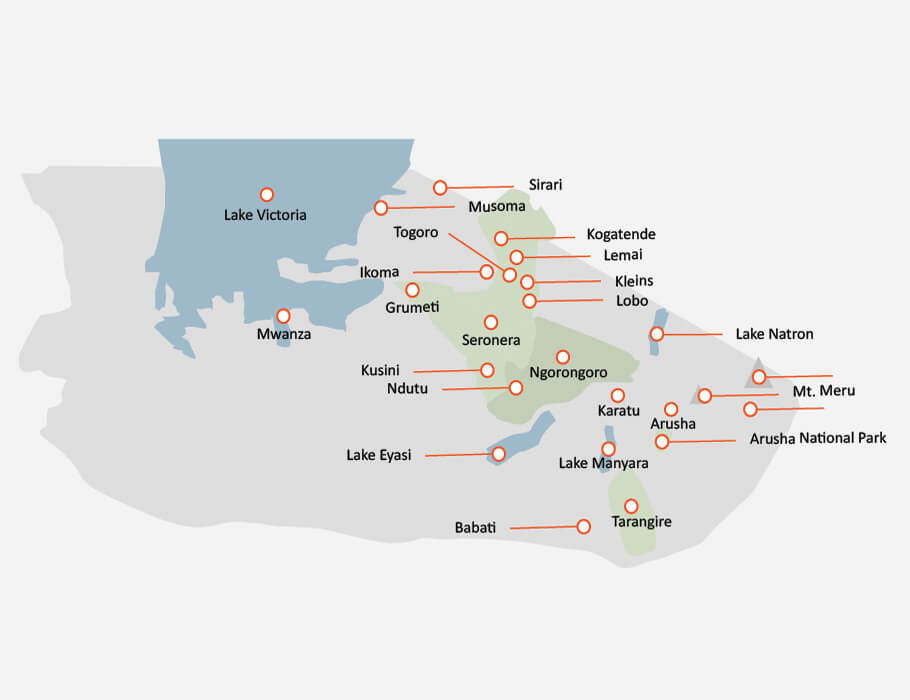
Tanzania's Eastern Circuit
The eastern circuit of Tanzania is the coastal region with the Indian ocean, meaning you will find more cities and settlements along this circuit..
The most famous draw of eastern Tanzania, of course, are the spice islands of the Indian ocean – Zanzibar being the crown jewel among them.
Tanzania's Southern Circuit
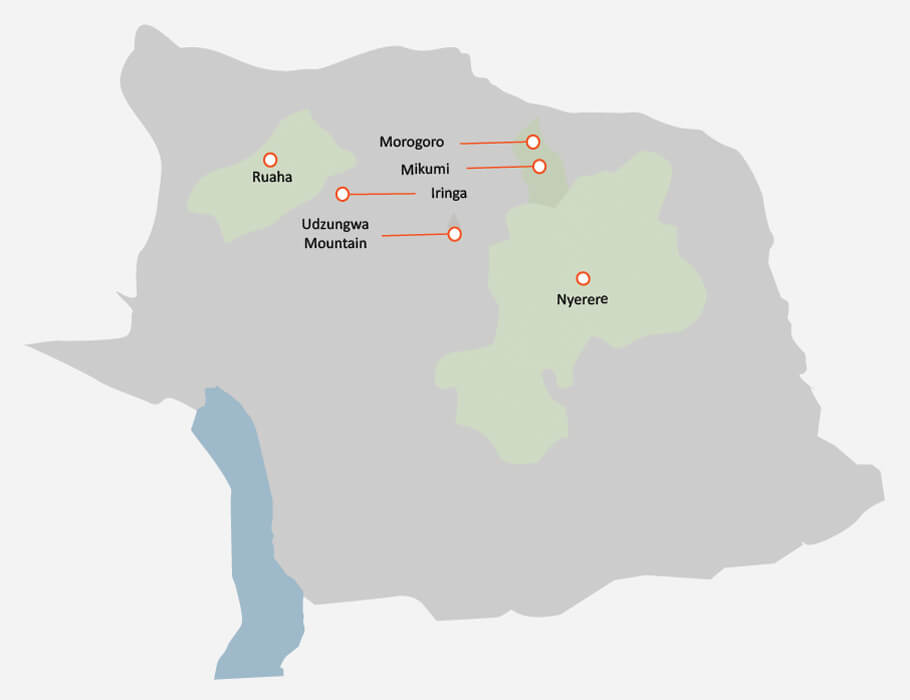
Tanzania's Western Circuit
The western circuit is the domain of tall mountains, lonely lakes, and remote locations.
The biggest draw of western Tanzania is that it is one of the few locations in the world where you can see chimpanzees in the wild.
Month-by-month guide for the best time to visit Tanzania
World-class hotels, luxury lodges, tented camps. Let us guide you through the best accommodations in Tanzania, whatever your preferred location.
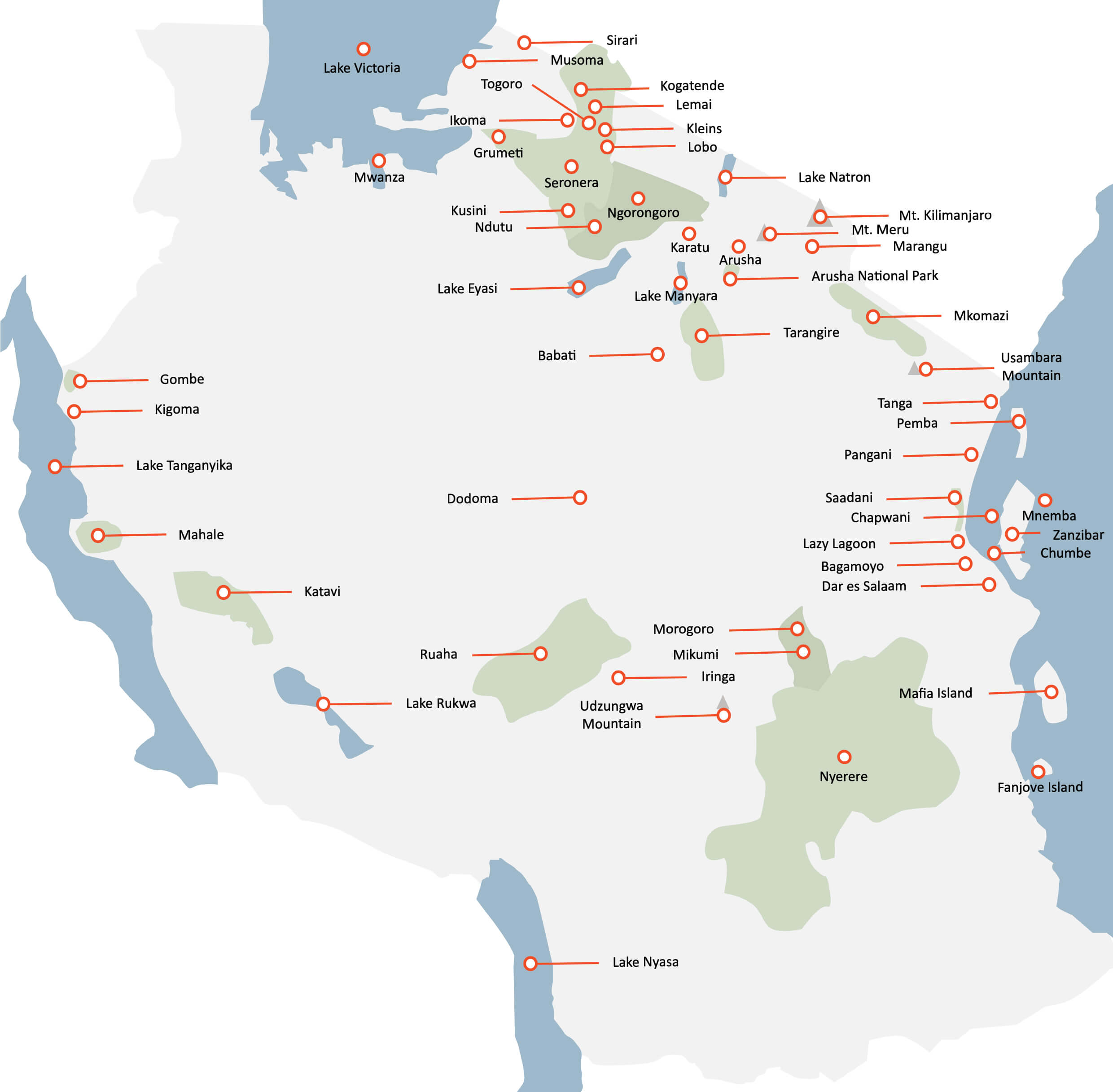
- Lake Manyara
- Lazy Lagoon
Tanzania Travel Advice
Tanzania is a safe destination. Below, learn all about traveling, looking after yourself and about the culture and etiquette.
- Travel Find out about Getting to Tanzania, visas, money, and what to pack.
- Safety Read about safari safety, mountain safety, or safety in other activities.
- Health Find out about general health, travel insurance, medicines, medical facilities, and vaccinations.
- Local Laws and Customs Read about drugs, cybercrime, or simply what to wear or not to wear.
Your adventure is unique, every trip is different. But others have gone before you. Read what they have to say.

4700+ Reviews
Easy Travel & Tours Ltd on TripAdvisor
Trip of a lifetime.
Reviewed: Oct 14, 2022
We’ve just finished a 5 day safari trip with easy travels and it was amazing! Communication pre to travel and while booking was great with lizbeth. Our guide Edward was friendly and knowledgeable.
Kilimanjaro (Machame trail)
Reviewed: Oct 30, 2022
My daughter (21) and I (52) did the Machame trail (10 oktobre 2022) on the Kilimanjaro. It was amazing! We had a great team and thanks to them we had a great week (we did the 7 days trip, including the acclimatisation dat, which I would suggest) and thanks to the whole crew we made it to the summit.
Best Vacation Ever!
Reviewed: Nov 27, 2022
We had an INCREDIBLE safari experience and trip to Tanzania all thanks to Freddy, our Easy Travel Safari Guide and Norah with Easy Travel. A friend recommended Easy Travel and our Safari Guide Freddy and we are SUPER glad that he did that.
You have questions, many questions. With over 35 years of experience, we at Easy Travel believe we have the answers.
Where is Tanzania on the map?
Located in East Africa, Tanzania is bordered by the Indian Ocean on its Eastern Side, blessing us with the beauty of Zanzibar.
North of Tanzania you will find Kenya and Uganda, whilst Rwanda, The Democratic Republic of the Congo, and Burundi can be found to the west. South of Tanzania is Zambia, Malawi, and Mozambique.
How do I get to Tanzania?
There are a number of ways of getting to Tanzania, however you usually will fly into Julius Nyerere International Airport in Dar es Salaam (640km, or 2 hours’ flight from Arusha City), or at the Kilimanjaro International Airport (45 minutes’ drive from Arusha City.
What is the time in Tanzania?
Tanzania is three hours ahead of Greenwich Mean Time (GMT+3). This means that there’s no time difference between their summer and winter months.
What language is spoken in Tanzania? And do they understand english?
The official language of Tanzania is Swahili, and most of our people speak it. Just as well, as we have well over 100 different tribal languages! Fortunately English is widely spoken in the larger towns and places where visitors frequent. At Easy Travel, we have a team of driver-guides who can speak a variety of languages such as English, French, Spanish, Italian, and German. When booking with us be sure to let us know if you have a preferred language you would like our Guides to speak.
Is it safe in Tanzania for me to visit? Is it safe for kids and females?
We are sure you’ll feel very safe here, we’re sure you’ll feel very welcome. As with everywhere else in the world, just use a bit of common sense, don’t flaunt any valuables and you can enjoy the natural wonders, the culture and the people of Tanzania.
Whilst most of our visitors will come to Tanzania for our wildlife experiences, they often leave with a much wider and richer experience than they could have ever expected. Why? Part of that is due to our friendly, welcoming, colourful people. Tanzanians are a true mix of many ethnicities, different religious beliefs and all live together in harmony in what is one of the African continent’s safest destinations.
How can I plan my Tanzanian adventure?
Whether you are looking to climb Kilimanjaro or tick off that African Safari from your bucket list, we are excited to help you plan.
Contact us today with any specific preferences and our team of Tanzania specialists will get back to you with a bespoke Itinerary that will blow your mind.
We cannot wait to welcome you!
What is the weather like Tanzania?
The Tanzanian dry season usually starts at the start of June and continues through until the end of October. After that, the ‘short rains’ begin from late October/early November until mid- to end December. There is then a respite from late December to Mid of March, and then the ‘long rains’ start at the end of March and last until May.
Of course, weather seasons can vary every year, so you have to be prepared for anything.
When is Tanzania’s rainy season?
Tanzania has two rainy seasons, with the so-called ‘long rains’ from the end of March to May and the ‘short rains’ from late October/early November through to mid-December.
Is there malaria in Tanzania?
Yes. With its tropical climate, there inevitably are mosquitos in Tanzania. Visitors should take advice from a medical practitioner well in advance of visiting, as courses of antimalarial drugs usually have to begin before your visit start. You should bring mosquito repellent and wear neutral-coloured/khaki clothes. Some accommodations will provide anti-mosquito measures such as mosquito nets or spray your sleeping quarters with repellent.
Is a yellow fever vaccine required for Tanzania?
Tanzania is mapped by the World Health Organization as a low risk country because no Yellow fever virus has been isolated in the country. However, the abundance of Yellow fever vector and other favorable ecological conditions pose potential risk for Yellow fever if the virus is introduced into the country. Furthermore, being bordered with Yellow fever endemic countries has also increased the vulnerability of Tanzania being infected with the virus.
In order to conform to IHR, 2005 requirements and safeguard public health security in Tanzania, Yellow fever vaccination is mandatory to travellers arriving from Yellow fever endemic countries. This condition also applies to travellers subjected to long flight connection (transit) in Yellow fever endemic country for twelve hours (12hrs) or more.
Ready to plan your tour?

Big 5 Safaris Budget Safaris Day Tours Family Safaris Glamping Safaris Honeymoon Safaris Kilimanjaro Treks Luxury Safaris Migration Safaris Mount Meru Treks Small Group Tours Zanzibar Tours
Arusha Dar es Salaam Iringa Kigoma Morogoro Moshi Mwanza
Arusha National Park Gombe Stream National Park Katavi National Park Lake Manyara National Park Mahale Mountains National Park Mikumi National Park Mkomazi National Park Nyerere National Park Ruaha National Park Rubondo Island National Park Saadani National Park Serengeti National Park Tarangire National Park Udzungwa Mountains National Park
Ndutu Ngorongoro
Lake Eyasi Lake Natron Lake Victoria
Mount Kilimanjaro Mount Meru
Bwejuu Beach Dongwe Beach Fumba Beach Jambiani Beach Kendwa Beach Kiwengwa Beach Kizimkazi Dimbani Beach Kizimkazi Mkunguni Beach Matemwe Beach Nungwi Beach Paje Beach Pingwe Beach Pongwe Beach Pwani Mchangani Beach Uroa Beach
Bawe Island Chapwani Island Chumbe Island Fanjove Island Lazy Lagoon Island Mafia Island Mnemba Island Pemba Island Zanzibar
Tanzania in January Tanzania in February Tanzania in March Tanzania in April Tanzania in May Tanzania in June Tanzania in July Tanzania in August Tanzania in September Tanzania in October Tanzania in November Tanzania in December
Kilimanjaro in January Kilimanjaro in February Kilimanjaro in March Kilimanjaro in April Kilimanjaro in May Kilimanjaro in June Kilimanjaro in July Kilimanjaro in August Kilimanjaro in September Kilimanjaro in October Kilimanjaro in November Kilimanjaro in December
Best time to go on a safari in Tanzania How much does it cost to go on a safari What to expect on a hot air balloon safari When is the best time to see the great migration
How long does it take to climb Kilimanjaro The ultimate packing list for Kilimanjaro The best time to climb Kilimanjaro
5 Things to do in Stone Town Best way to get to Zanzibar Zanzibar Seasons And Tides Where to Stay in Zanzibar
How Much Does a Serengeti Hot Air Balloon Safari Cost? The Top Hot Air Balloon Safari locations in Tanzania Serengeti Hot Air Balloon Safari: A Detailed Guide
Specialized Tours
Beaches in Tanzania
Islands in Tanzania
When to go to Tanzania
When to climb Kilimanjaro
Tanzania Guides
When is the best time to visit Tanzania Top 10 things to do in Tanzania in 2024/2025 The ultimate guide to National Parks in Tanzania
Tanzania Safari Guides
Kilimanjaro trek Guides
Zanzibar Guides
Serengeti Balloon Safari Guides
How Much Does a Serengeti Hot Air Balloon Safari Cost? The Top Hot Air Balloon Safari locations in Tanzania Serengeti Hot Air Balloon Safari: Detailed Guide
Members of the Top Tourism and Sustainable Association

Why not chat with an expert?
Get in touch with our expert to plan your Dream Tanzania Tour
Or WhatsApp us on +255 754 400 141

Easy Travel
Hey, how can we help you today?

START YOUR JOURNEY
Tanzania travel facts.
With over 16 national parks and game reserves, including the famous Serengeti National Park and Ngorongoro Conservation Area, Tanzania offers visitors an opportunity to witness some of the world's most iconic wildlife migrations and natural wonders. Additionally, Tanzania is also home to Mount Kilimanjaro, the highest peak in Africa, and the beautiful beaches of Zanzibar
Apart from the wildlife, Tanzania boasts the most diverse landscapes that you have ever seen. From vibrant grassland to woodlands, rock formations to snow-capped mountain peaks, Tanzania is no less than any other country in Africa featuring some amazing sightseeing.
In this context, it is important to know some interesting Tanzania Travel Facts before planning a Tanzania Safari to ensure a wonderful safari experience.
Tanzania travel facts: fascinating insights into East Africa's largest country.

Some essential Tanzania travel facts
Nearly 30 per cent of Tanzania is National Parks.
The great wildebeest migration sees over 2 million animals travel across the rich savannah plains.
Ngorongoro Crater is one of the best places to see the African Big Five.
Mount Kilimanjaro is the tallest mountain in Africa and the highest free-standing mountain in the world.
Lake Tanganyika is the second-oldest freshwater lake in the world.
The giant baobab tree can easily live for 1.000 years.
Uncovering little-known facts about Tanzania's wildlife and natural wonders.
Facts about tanzania.
Capital: Dodoma
Currency: Tanzanian Shilling
Population: 58 million
Language: Kiswahili and English
Area: 886,000 km²
Water surface: 59,000 km²
Neighbouring countries: Kenya, Uganda, Congo, Rwanda, Burundi, Zambia, Malawi and Mozambique
Highest point: 5895 metres (you can climb Kilimanjaro with us!)
Time difference: Summertime UK- 2 hrs later; Wintertime UK- 3 hrs later; US 7-10 hrs later
Most popular places: Serengeti National Park, Ngorongoro Crater, Kilimanjaro and Zanzibar

Tanzania travel trivia: surprising facts to impress your fellow adventurers.
Travel guide.
Your ultimate Tanzania Safari Guide, with tips, things to do, and the best things to see in Tanzania . Great for first-time and returning travellers. What's rated, underrated or overrated etc. Get it now!
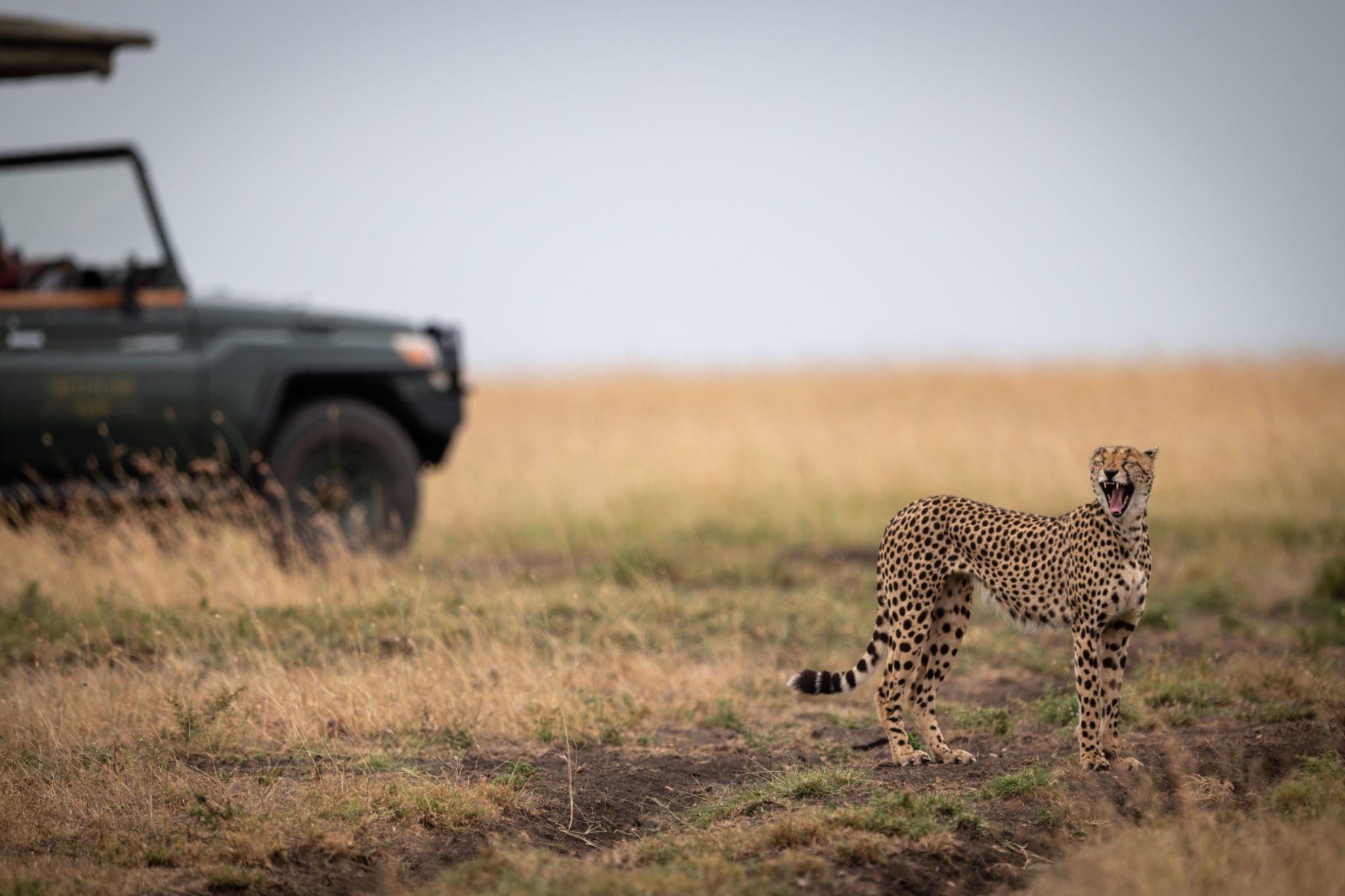
Is Safari Safe
Are you considering a Tanzania Safari but worried about safety?

Travel Facts
Tanzania is a beautiful country located in East Africa,

Safari Packing List
Planning a Tanzania safari is an exciting experience,

Best Time To Visit
The dry season which occurs from June to October
Unforgettable holidays -create everlasting smiles and cherished moments.
Our safaris.
“Experience the art of bespoke and private safari exploration! Where you’re the architect of your African adventure and we turn your wildlife fantasies into reality.”
.jpg)
10 days Uganda safari Tours
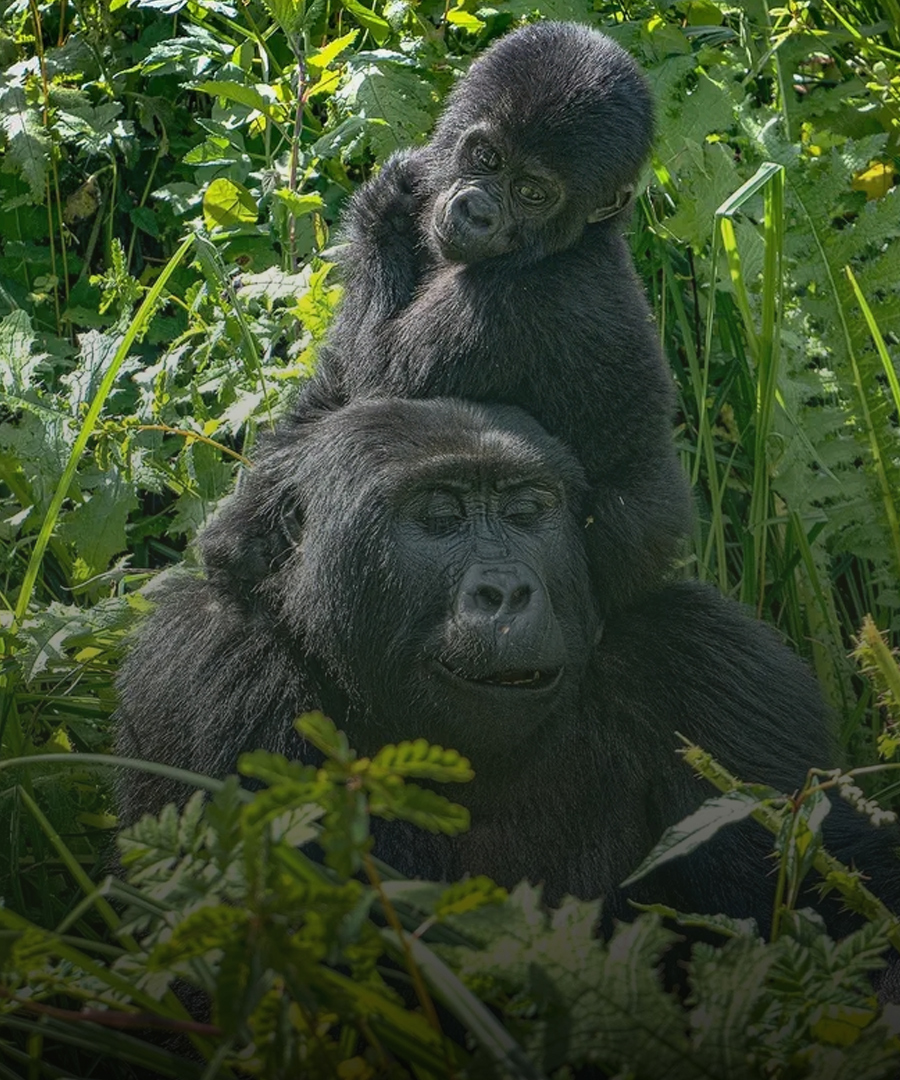
15 Days Rwanda And Tanzania safari Tours
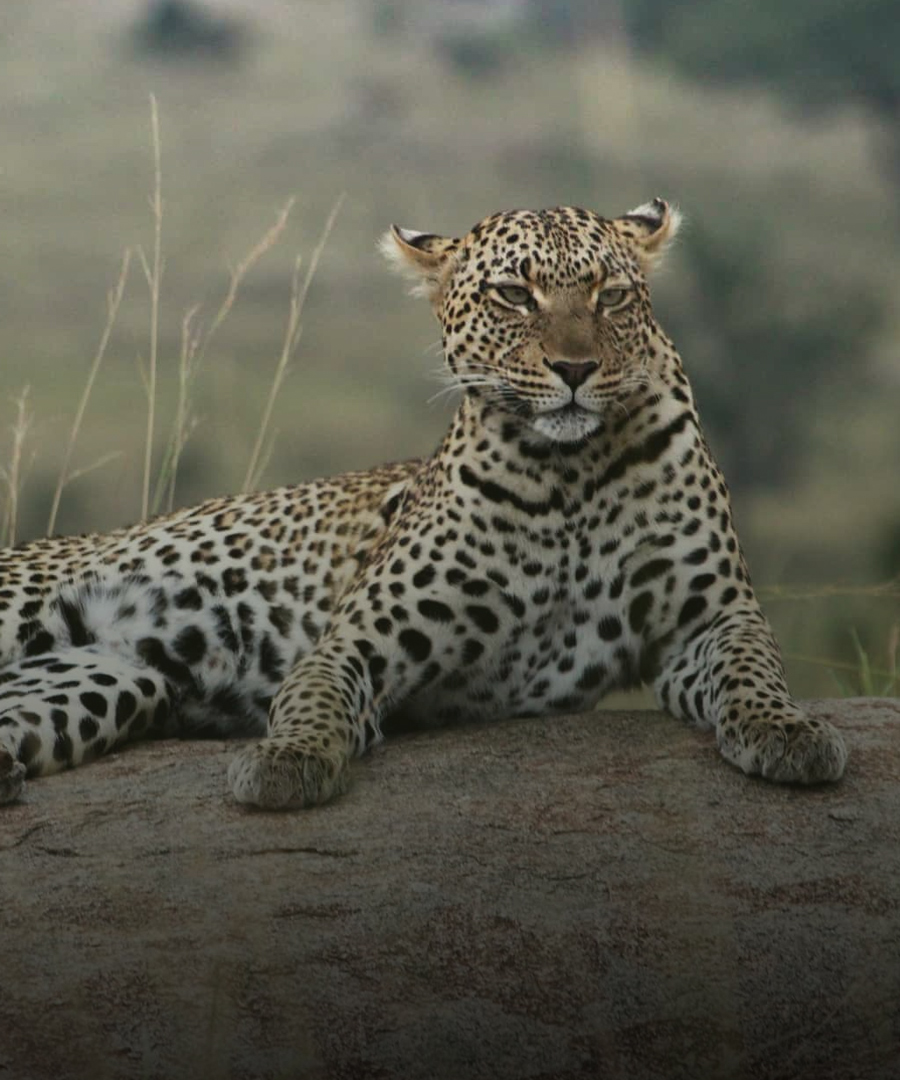
16 Days Tanzania safari Tours
18 days tanzania safari tours.
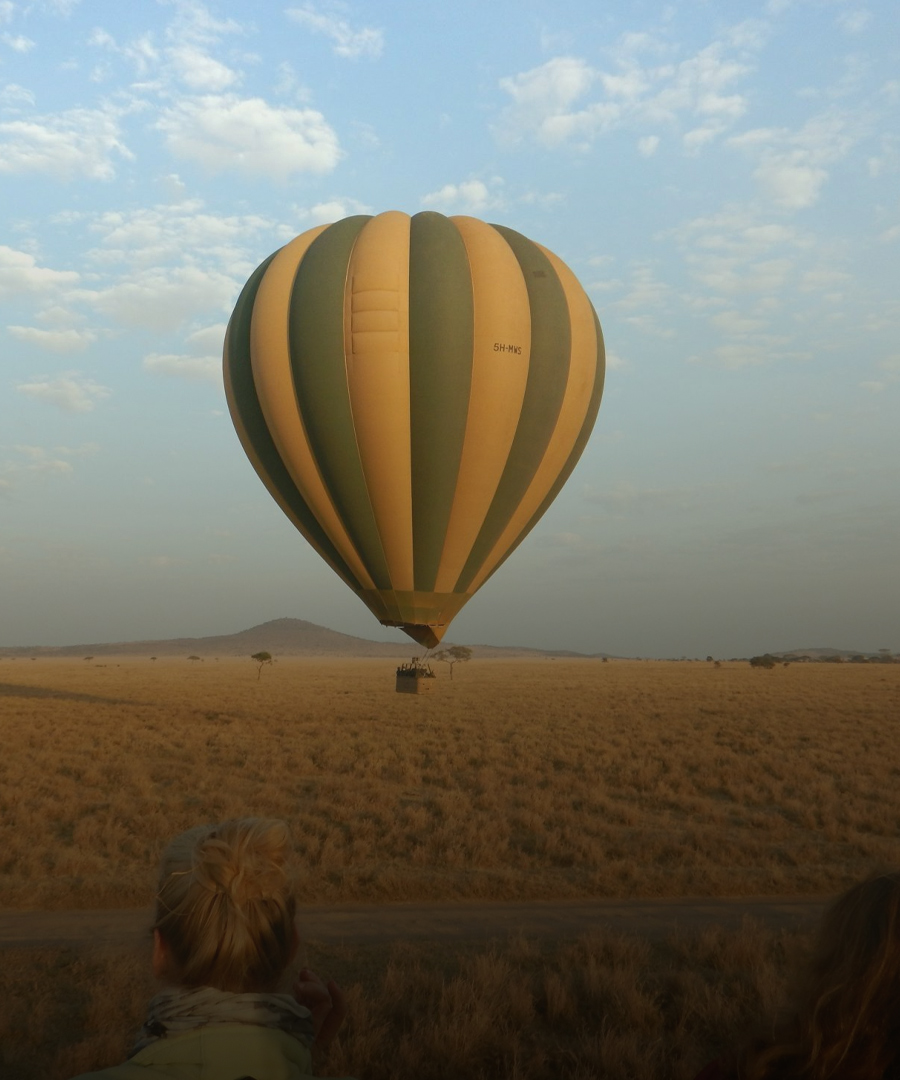
16 Days Southern Serengeti safari Tours
View all tours --> <--, explore tanzania, safaris packages.
Prepare to be immersed in a world where breathtaking landscapes and extraordinary wildlife coexist harmoniously. And, we invite you to join us on Tanzania Safaris, a memorable journey, where every moment is a discovery and every experience is extraordinary.

16 Days Southern Serengeti Safari
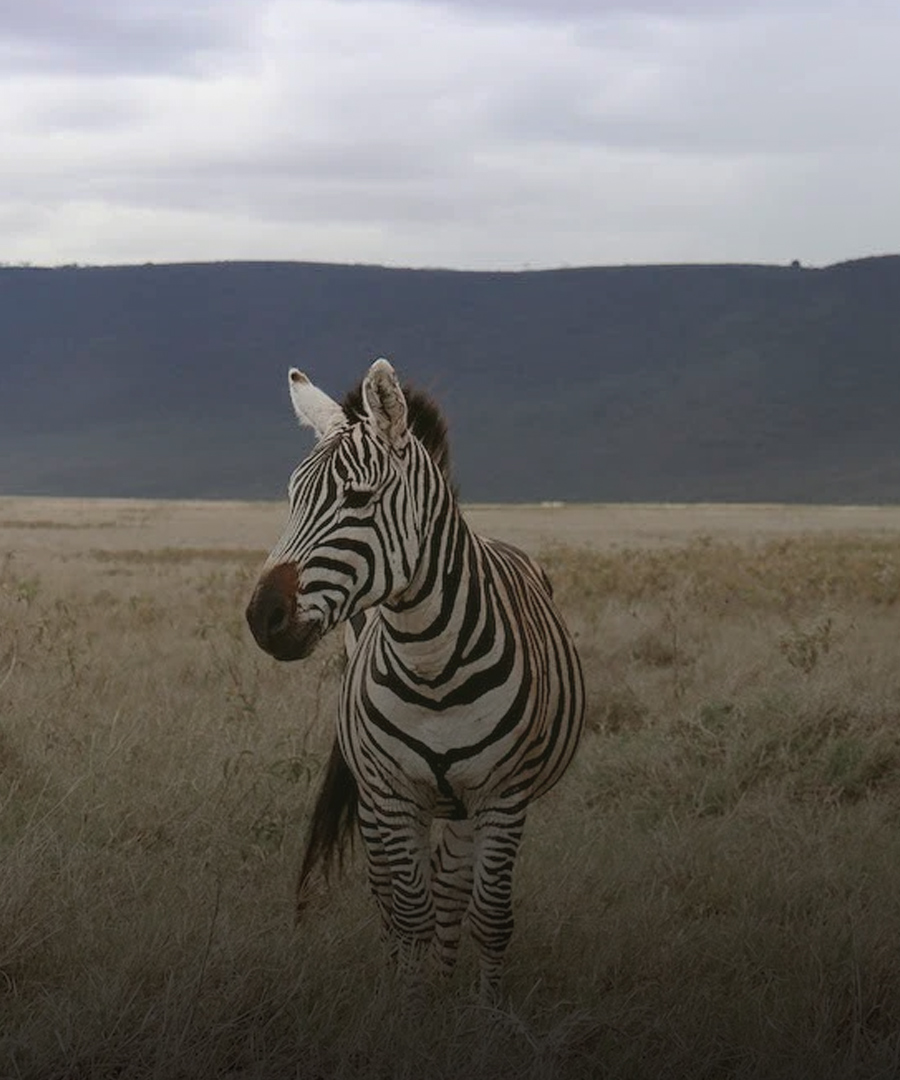
18 Days Tanzania Safari

16 Days Tanzania Safari

15 Days Rwanda And Tanzania Safari
View all tours, our custom designed journeys, tailor-made itineraries for every traveller.
We’re excited to take you on a journey to experience sights and sounds found nowhere else on Earth. Unique scenery, wildlife, and cultures are waiting to be revealed, and we at Tanzania Outdoor Adventures can’t wait to share them with you. Our custom-designed journeys are intended to inspire but can be tailor made to suit your every need. It’s time to let your safari dreams run wild.
Jombi’s camp was exceptional and very enjoyable. The attention to detail was amazing and the camp fire was a great touch.
Holly jamieson | new jersey.
Visited Tanzania

I enjoyed all of the accommodations because they were different from each other and had something unique to offer. I especially enjoyed the rustic tents ”.
Carol Harvist | New Jersey
If you're dreaming of africa, your journey has already begun, partnered with, the african ecotourism.

Explore Your Journey To Africa Today!
Subscribe to receive the latest updates --> <--.

QUICK LINKS
- Destinations
- Terms & Conditions
- Travel Advice
DESTINATIONS
- Night Game Drive
- [email protected]
- [email protected]
- +1 775 772 4134
- +255 784 326 868
- +255 784 758 627

© Designed By Safari Marketing Pro
- Search Please fill out this field.
- Newsletters
- Destinations
- Africa & Middle East
- South Africa
- United Arab Emirates
Must-see attractions in Tanzania

Katavi National Park
Western Tanzania
Katavi National Park, 35km southwest of Mpanda, is Tanzania’s third-largest national park (together with two contiguous game reserves the conservation…
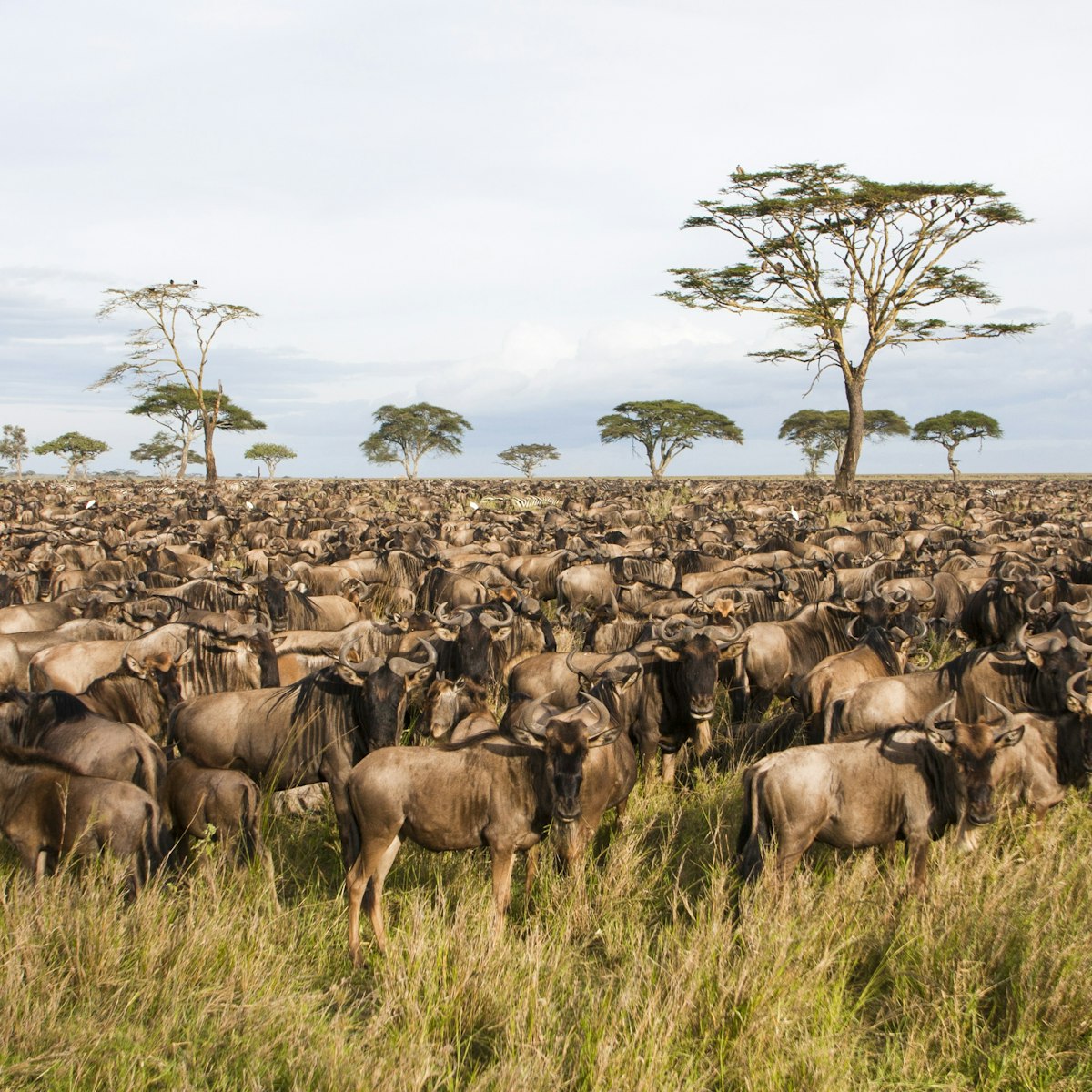
Serengeti National Park
Northern Tanzania
Few people forget their first encounter with the Serengeti. Perhaps it's the view from the summit of Naabi Hill at the park's entrance, from where the…

Mt Kilimanjaro National Park
Since its official opening in 1977, Mt Kilimanjaro National Park has become one of Tanzania’s most visited parks. Unlike the other northern parks, this…

Mahale Mountains National Park
It’s difficult to imagine a more idyllic combination: clear, blue waters and white-sand beaches backed by lushly forested mountains soaring straight out…

Tarangire National Park
Welcome to one of Africa's most underrated parks. Thanks to its proximity to the Serengeti and Ngorongoro, Tarangire is usually assigned only a day visit…

Gombe National Park
With an area of only 56 sq km, this is Tanzania’s smallest national park, but its famous primate inhabitants and its connection to Jane Goodall have given…

Ngorongoro Conservation Area
This astounding conservation area and Unesco World Heritage Site encompasses the Ngorongoro Crater, Oldupai Gorge and much of the Crater Highlands. It can…

Ol Doinyo Lengai
The northernmost (and youngest) volcano in the Crater Highlands, Ol Doinyo Lengai (2878m), ‘Mountain of God’ in the Maasai language, is an almost perfect…

Empakaai Crater
Lake-filled Empakaai Crater, 23km northeast of Olmoti Crater, may not be as famous as Ngorongoro, but many travellers consider it to be its match in…

Misali Island
Surrounded by crystal waters and stunning coral reefs, Misali offers some of the best diving in East Africa, while snorkelling is spectacular and easily…

Lake Manyara Treetop Walkway
Lake Manyara National Park
Enjoy a guided bird's-eye view of Manyara on Tanzania's first treetop walkway (370m). It begins at ground level and climbs gently into the canopy,…

Ngorongoro Crater
At 19km wide and with a surface of 264 sq km, Ngorongoro is one of the largest unbroken calderas in the world that isn’t a lake. Its steep walls soar 400m…
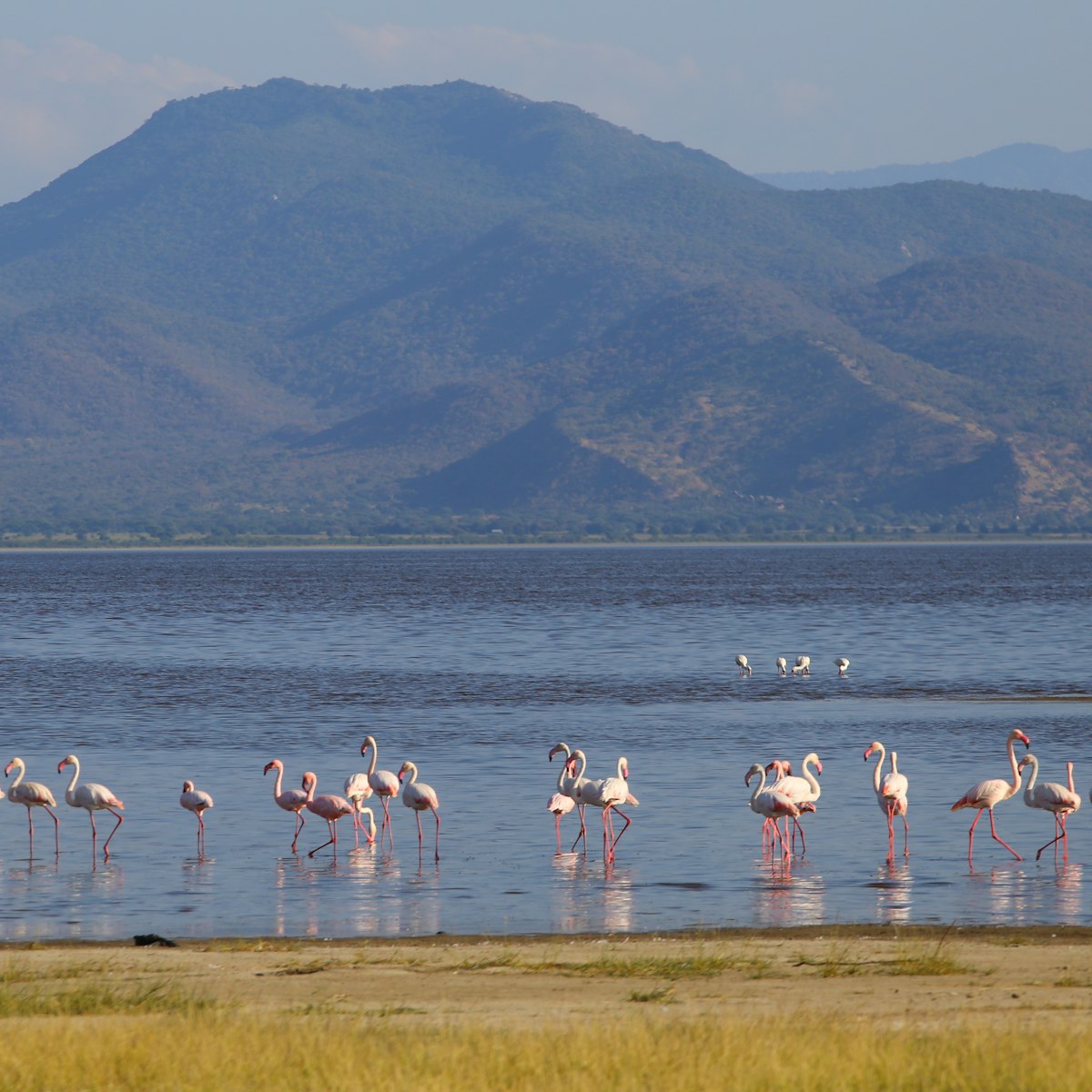
Lake Manyara National Park is one of Tanzania’s smaller and most underrated parks. While it may lack the size and variety of other northern-circuit…
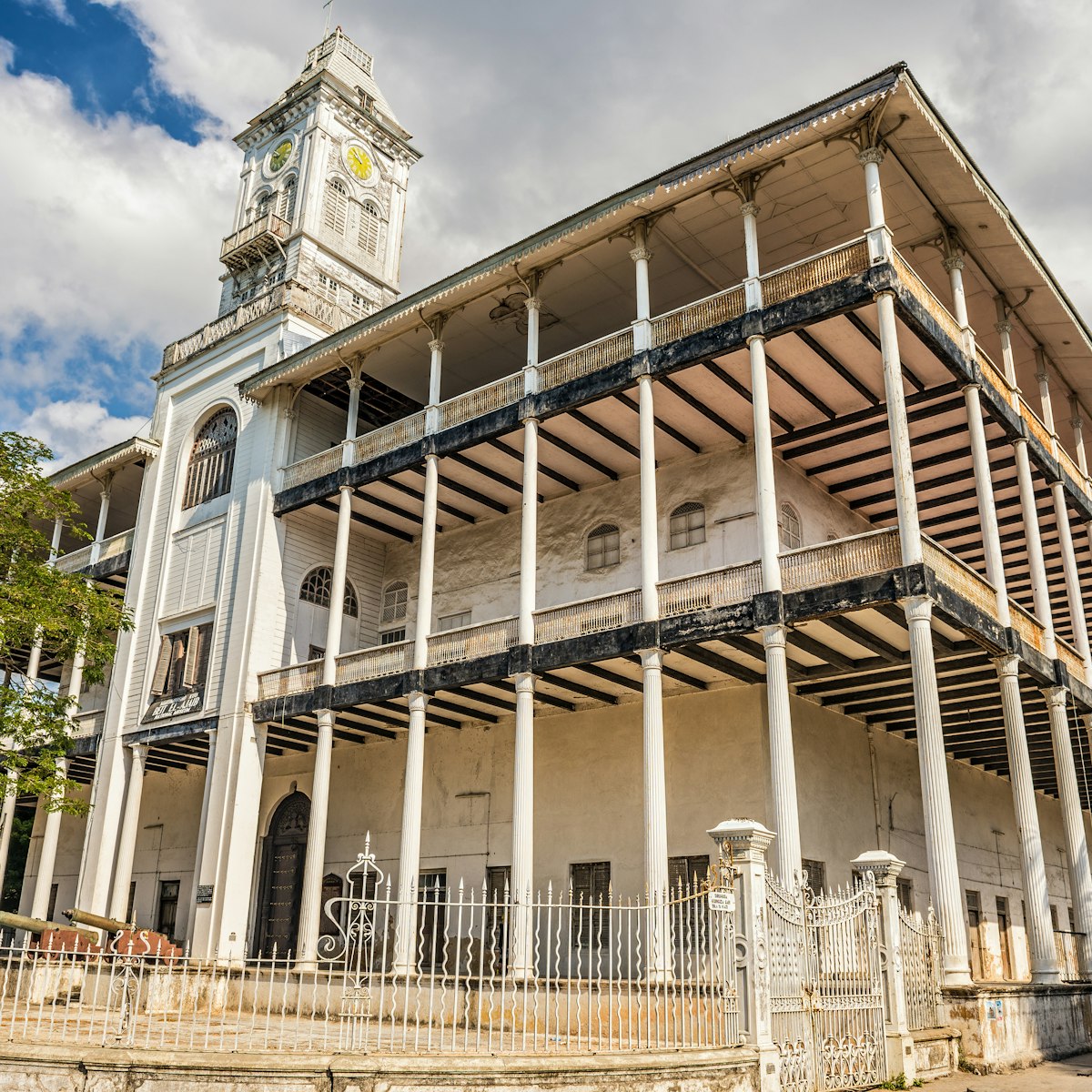
House of Wonders
Zanzibar Town
An icon of Stone Town, the House of Wonders rises in impressive tiers of slender steel pillars and balconies overlooking the waterfront. Its enormous…

Zanzibar Island
ZALA (Zanzibar Land Animals) Park was founded as a project to help local people appreciate the value of wildlife, with funds raised by tourist visits. The…

Forodhani Gardens
One of the best ways to ease into Zanzibar life is to stop by this waterfront public space. It's a social hub for tourists and locals alike; there's a…

Old Dispensary
With its peppermint-green latticework balconies and sculpted clock tower, this 19th-century charitable dispensary is one of the most attractive landmarks…

Princess Salme Museum
Carefully curated by the renowned historian Said al Gheithy, this delightful little museum tells the story of Princess Salme, a sultan's daughter who…
Livingstone’s Tembe
This deep-maroon-coloured, flat-roofed Arabic-style home, built in 1857, is the main attraction in these parts. It was Livingstone’s residence for part of…
Arusha National Park
The transition between unappealing urban chaos and pristine mountain hiking trails is rarely so abrupt as it is in Arusha National Park. One of Tanzania’s…
Gol Mountains
Some places are so far off well-travelled routes that there are no tracks other than those left by wildlife and traditional herders. The remote and rarely…
Amani Nature Reserve
Northeastern Tanzania
This reserve is located west of Tanga in the heart of the eastern Usambaras. Often overlooked, it’s a peaceful, lushly vegetated patch of montane forest…
Nafasi Art Space
Dar es Salaam
Aiming to be the leading contemporary art centre in Tanzania, Nafasi is a complex of studios housed in an old industrial warehouse in Mikocheni. Many…

Anglican Cathedral
The tall spire and grey-yellow walls of the Anglican cathedral dominate the surrounding streets in this part of Stone Town, while the dark-wood pews and…

Palace Museum
Occupying several large buildings along the waterfront, this was the palace of Sultan Seyyid Said from 1828 until it was largely destroyed by the British…

Jozani-Chwaka National Park
Jozani Forest is the largest area of indigenous forest on Zanzibar Island. Situated south of Chwaka Bay on low-lying land, the area is prone to flooding,…

Bagamoyo Town
With its cobwebbed portals and crumbling German-era colonial buildings, central Bagamoyo, or Mji Mkongwe (Stone Town) as it’s known locally, is well worth…

With its pale-orange ramparts overlooking Forodhani Gardens and the ocean beyond, the fort was built by Omani Arabs when they seized the island from the…
Oldupai Museum
The small Oldupai Museum on the rim of Oldupai Gorge stands on one of the most significant archaeological sites on earth. It was here in 1959 that Mary…

National Museum & House of Culture
The National Museum houses a copy of the famous fossil discoveries of zinjanthropus ('nutcracker man') from Olduvai Gorge, plus other archaeological finds…
Ngezi Forest Reserve
In far northeastern Pemba, dense and wonderfully lush Ngezi is one of the last remaining areas of indigenous forest that once covered much of the island,…
Tongoni Ruins
About 20km south of Tanga and just off the coastal road, the Tongoni ruins are set picturesquely amidst the baobabs on a low rise overlooking stands of…

Darajani Market
Zanzibar's main market is a hive of activity, with everything – from spices, fresh fish, slabs of meat and huge baskets full of live chickens to sandals,…
Halfway to Lake Natron, on the eastern edge of the Ngorongoro Conservation Area, lies this 300- to 500-year-old ruin of a farming town that developed a…

Village Museum
This open-air museum features a collection of authentically constructed dwellings illustrating traditional life in various parts of Tanzania. Each house…
Mkomazi National Park
Seldom-visited Mkomazi spreads along the Kenya border in the shadow of the Pare Mountains, its dry savannah lands contrasting sharply with the moist…
Lutindi Cultural Tourism Project
Perched on the edge of the Usambara Mountains southeast of Lushoto is Lutindi and the Lutindi Cultural Tourism Project. Lutindi is the site of the first…
Kaole Ruins
Just southeast of Bagamoyo are these atmospheric ruins. At their centre are the remains of a 13th-century mosque, which is one of the oldest in mainland…
Manyara Ranch Conservancy
Occupying an important wildlife-dispersal area northwest of Tarangire National Park, the privately run, 140-sq-km Manyara Ranch Conservancy is a critical…
Dar es Salaam Marine Reserve System
The uninhabited islands of Bongoyo, Mbudya, Pangavini and Fungu Yasini, just off the coastline north of Dar es Salaam, form this marine reserve system…
More destinations you need to see


Where is Tanzania located?
What countries border Tanzania?
Tanzania Weather
What is the current weather in Tanzania?
Tanzania Facts and Culture
What is Tanzania famous for?
- Cultural Attributes : Tanzania is a culturally diverse country with over 120 ethnic groups, each with its unique traditions and customs. Here are... More
- Family : In most ethnic groups there is a strict division of labor between men and women. Men are generally considered the... More
- Personal Apperance : Dress in the Iringa region is predominantly Western-style, with khanga and kitenge clothes mixed in. Easily regarded by the female... More
- Recreation : Young boys play soccer and girls run races or play a game called netball, which is similar to basketball. Poor... More
- Diet : Tanzanians usually eat two main meals a day. It is common practice to pass a bowl of water for washing... More
- Food and Recipes : In Tanzania, mealtime is often a communal and social event that brings family and friends together. Here are some common... More
- Visiting : Women gather to talk at the homes of their friends and relatives, while men usually meet friends in public places.... More
- Dating : Young girls are considered marriageable when they reach their early teens. In rural areas, young people choose their spouses, often... More
Tanzania Facts
What is the capital of Tanzania?
Tanzania Demographics
What is the population of Tanzania?
Tanzania Government
What type of government does Tanzania have?
Tanzania Video
CountryReports YouTube Channel:
Tanzania geography.
What environmental issues does Tanzania have?
Tanzania Economy
How big is the Tanzania economy?
Tanzania News and Current Events
What current events are happening in Tanzania? Source: Google News
Tanzania Travel Information
What makes Tanzania a unique country to travel to?
Country Description
Criminal penalties, medical facilities and health information, safety and security, traffic safety and road conditions.

- Internet Citation
- Terms of Use
- Renew Membership
- Manage Membership
- Teacher Resources
- Get Your Widget
- Product Pricing
- Other Products
- United States Edition
- Sample Country
- 50 US States

50 Interesting Facts About Tanzania
Last updated on April 18th, 2022
Tanzania, officially the United Republic of Tanzania, is a place where nature is at its wildest. It is surrounded by three great lakes of Africa – Lake Victoria, Lake Tanganyika and Lake Malawi. Vast swathes of Savanah grasslands decorate Tanzania’s hinterlands and the real beauty of the country shines through its amazing biodiversity and wildlife.
Beyond the eastern shores lies the splendid island-city of Zanzibar, which has anchored itself in the passage of history as a city of many ideas and cultures. Absorbing the vibes from faraway lands, it is rightly called the gateway to Africa.
With these 50 interesting facts about Tanzania, let’s explore the known and unknown sides of this East African country and its uniqueness.
Facts about Tanzanian culture and people
1. Tanzania is made up of at least 120 tribes, each significant in their own way. Each of them is culturally distinguished by their unique masks, hand-woven baskets, batiks, poetry, items carved out of ebony or rosewood, etc.
2. Over 120 languages are spoken in Tanzania, most of them from the Bantu family. The kiswahili language (Swahili) is the official language of Tanzania and Kenya .
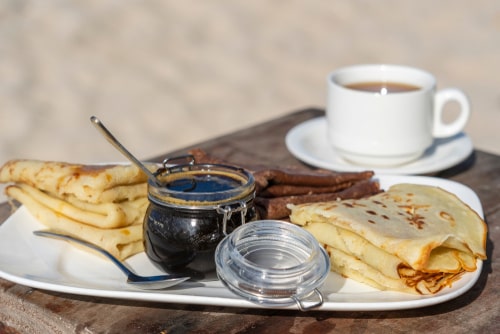
3. Tanzanians prefer drinking tea in the morning as a breakfast beverage and coffee in the evening.
4. The use of left hand to greet someone is considered impolite and rude in Tanzania.
5. Zanzibar, a port city of Tanzania, is a cosmopolitan hotspot which dominates East African culture. Its long history with Arab rulers, Indian workers, Portuguese traders and European colonizers have created a unique blend of traditions, cuisine, music, dance forms, and arts.
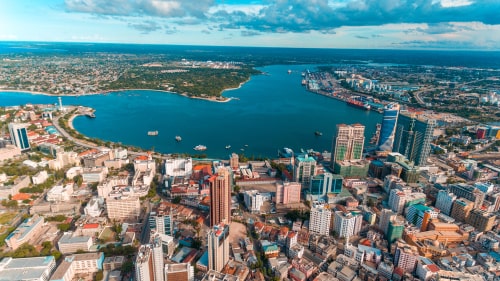
6. Dar es Salaam, a city in eastern Tanzania, is the largest city in the country. It’s also the largest Swahili-speaking city in the world and has given birth to many great men in Africa’s history.
7. Being a former European colony, Tanzanians have adopted football and rugby as their favorite sports.
8. The de-facto national dish of Tanzania is the humble Ugali . It’s a simple porridge made with millet or sorghum flour.
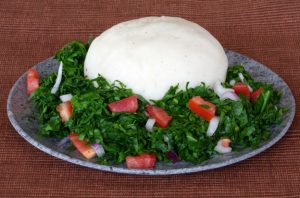
9. In Tanzania, even the lakes are sculptors. Lake Natron, a highly alkaline water body, is known to turn birds and other animals into ghastly stone statues.
10. Mpingo tree , found in Tanzania produces the costliest timber in the world. It has exceptional mechanical properties that make it perfect for carving and it has a beautiful finish.
11. In fact, the Mpingo trees is also known as the music tree of Africa, as its wood has been used to make traditional musical instruments since ancient times.
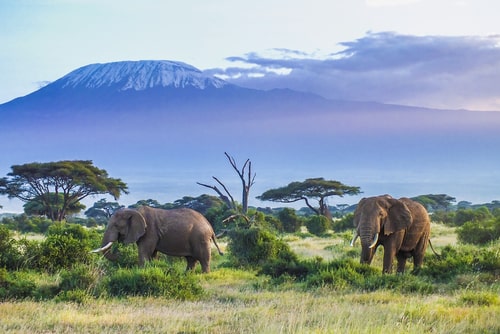
12. Tanzania has a weird solution for raiding elephants that stray into farmlands – “Throw condoms filled with chili powder at them”, and it totally works. Looking at the brighter side, earlier they used to throw spears.
13 . Freddie Mercury , the frontman vocalist, and songwriter of rock band Queen was born in Zanzibar, Tanzania.

14. Tanzanians love hip hop music and has created Bongo Flava, which is an amalgamation of international styles like reggae, afrobeat, blues, rasta and dancehall with local musical traditions like taarab and dansi.
15. Kinjikitile Ngwale was an interesting man living in Tanzania during the 1900’s, who led a revolution against the German colonizers. The uprising was known as Maji Maji revolution and is an important moment in the country’s history.
16. The problem was Kinjikitile Ngwale believed himself to be possessed by the spirit of a snake and claimed that a “magical” portion called “maji” would turn German bullets into powder. He was hanged a month later for treason.
17. Tanzania is a friendly country in diplomatic circles, but the country did declare war on neighboring Uganda on October 30, 1978. Tanzania totally owned the Ugandans and won a victory after 5 months.
Read: facts about Uganda
18. The 1978 war was actually caused by a shady bar-fight. It all started when a single Ugandan soldier crossed over to Tanzania for a drink, but ended up firing at locals.
Tanzanian Flag
19. The flag of Tanzania consists of a black and yellow band, diagonally cutting out two triangles. The upper portion is green in color while the lower is blue.
20. The flag carries in it the 4 elements of Tanzania’s daily life. The green represents nature’s beauty, the yellow represents the mineral deposits of the country, the black represents the people, while the blue represents the great lakes.
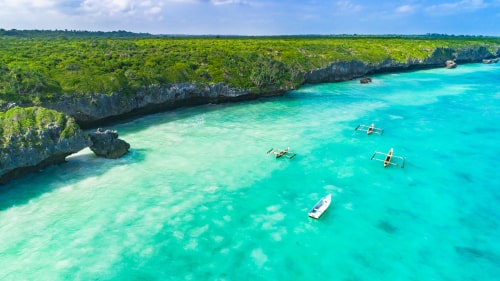
21. Zanzibar, being so cool, gets to have its own flag. The colors of the flag remain the same as that of Tanzania, but the style is different.
22. Before Tanzania merged with Zanzibar in 1964, it was known as Tanganyika and had its own flag – a green background cut into half by a black and yellow band.
Tanzania’s geography and economy
23. The world’s longest river , the Nile is most synonymous with the world’s first civilization – The Egyptian Civilization. This river originates from Lake Victoria, Tanzania.
24. Lake Victoria also happens to be the largest tropical lake and the second largest freshwater lake in the world.
Tanzania on map
25. Tanzania has an island called the Mafia. The other two major islands are Zanzibar and Pemba.
26. The three islands of Tanzania are a favorite holiday destination for lovers of all things tropical. Scuba diving, local seafood, and all night long beach festivals attract tourists in a large number.
27. The country has designated 25% of its land to wildlife sanctuaries and national parks. It’s among the highest in the world, and the total area is greater than the size of Germany .
28. The most famous national park of Tanzania is the Serengeti National Park when a million wildebeests cross over to the Masai Mara National Park in Kenya . This migration is so epic, that it is named as one of the seven natural wonders of the world.
29. As a tourism booster, the government has set up hot-air balloons in the Serengeti National Park.
30. Tanzania is home to the Ngorongoro Crater , the world’s largest caldera, or volcanic depression. The crater has an area of 264 kilometers. It is estimated to have formed about 2.5 million years ago.
31. In total area comparison, Tanzania (947,300 sq km) is just a little bit more than twice the size of California (423970 sq km).
32. According to the CIA, all land in Tanzania is owned by the government which can lease land for up to 99 years.
. . . continue reading Tanzania facts on the next page
- Privacy Policy
- Legal Disclaimer
- Report Error
- 3 Other destinations
- 4.1 History
- 4.2 Geography
- 4.3 Climate
- 4.5 Tourist information
- 5.1.1 E-Visa
- 5.1.2 Visa on arrival (VOA)
- 5.1.3 Land borders
- 5.2 By plane
- 5.3 By train
- 5.4.1 Bus lines
- 5.5 By boat
- 6.1 By bus and mini-bus
- 6.2 By train
- 6.3 By taxi
- 6.4 By plane
- 7.1 Safari prices
- 7.2 Wildlife viewing
- 7.3 Islands
- 7.4 Mountains
- 10.2 Shopping
- 10.3 Air freight
- 16.2 Walking
- 16.3 Corruption
- 17.1 Illnesses and diseases
- 17.2 Insects and animals
- 17.3.1 Government hospitals
- 17.3.2 Mission hospitals
- 19.1 Telephone calls
- 19.2 Internet
- 19.3 Emergency
<a href=\"https://tools.wmflabs.org/wikivoyage/w/poi2gpx.php?print=gpx&lang=en&name=Tanzania\" title=\"Download GPX file for this article\" data-parsoid=\"{}\"><img alt=\"Download GPX file for this article\" resource=\"./File:GPX_Document_rev3-20x20.png\" src=\"//upload.wikimedia.org/wikipedia/commons/f/f7/GPX_Document_rev3-20x20.png\" decoding=\"async\" data-file-width=\"20\" data-file-height=\"20\" data-file-type=\"bitmap\" height=\"20\" width=\"20\" class=\"mw-file-element\" data-parsoid='{\"a\":{\"resource\":\"./File:GPX_Document_rev3-20x20.png\",\"height\":\"20\",\"width\":\"20\"},\"sa\":{\"resource\":\"File:GPX Document rev3-20x20.png\"}}'/></a></span>"}'/>
Tanzania is the largest country in East Africa . From the picture-perfect coasts of Zanzibar to the world-renowned wildlife of the Serengeti , from the snowy slopes of Mount Kilimanjaro to the coral houses of Mikindani , Tanzania is the heart and soul of East Africa. Tanzania has several national parks and game reserves, where you can see some of the finest African flora and fauna .

- -6.1835 35.746 1 Dodoma – the capital
- -3.366667 36.683333 2 Arusha
- -6.816111 39.280278 3 Dar es Salaam – largest city and cultural capital with a mix of African, colonial, and Indian Ocean influences
- -4.883333 29.633333 4 Kigoma – city on Lake Tanganyika and gateway to Gombe Stream National Park
- -8.9 33.45 5 Mbeya
- -6.824167 37.663333 6 Morogoro
- -3.334883 37.340381 7 Moshi
- -10.273611 40.182778 8 Mtwara
- -2.516667 32.9 9 Mwanza
Other destinations

- -3.25 36.833333 1 Arusha National Park – includes Mount Meru, a 4,562 m active stratovolcano
- -7.2 37.133333 2 Mikumi National Park
- -3.066667 37.359167 3 Mount Kilimanjaro – Africa's highest peak and the world's highest freestanding mountain, which you can climb with a guide
- -3.21 35.46 4 Ngorongoro Conservation Area – includes the Ngorongoro Crater and the Olduvai Gorge
- -7.531111 34.636944 5 Ruaha National Park
- -2.332778 34.566667 6 Serengeti National Park
- -6.164944 39.198789 7 Stone Town
- -4 35.978611 8 Tarangire National Park
- -7.8 36.683333 9 Udzungwa Mountains National Park
Tanzania is probably one of the oldest known continuously inhabited areas on Earth; fossil remains of humans and pre-human hominids have been found dating back over two million years. More recently, Tanzania is believed to have been populated by hunter-gatherer communities, probably Cushitic and Khoisan speaking people. About 2,000 years ago, Bantu-speaking people began to arrive from western Africa in a series of migrations. Later, Nilotic pastoralists arrived, and continued to immigrate into the area through to the 18th century.
Travellers and merchants from the Persian Gulf and Western India have visited the East African coast since early in the first millennium CE. Islam was practised on the Swahili Coast as early as the eighth or ninth century CE. The Swahili Coast eventually grew to encompass several wealthy city-states, which included Zanzibar and Kilwa Kisiwani . Zanzibar in particular became the main centre of the Arab Slave Trade, the former slave market in its capital, Stone Town, has now been converted to a tourist attraction commemorating slavery, and with the Anglican cathedral having been built on the site of the former whipping post.
In the late 19th century, Imperial Germany conquered the regions that are now Tanzania (minus Zanzibar), Rwanda, and Burundi, and incorporated them into German East Africa . The post-World War I accords and the League of Nations charter designated the area a British Mandate, except for a small area in the northwest, which was ceded to Belgium and later became Rwanda and Burundi).
British rule came to an end in 1961 after a relatively peaceful (compared with neighbouring Kenya, for instance) transition to independence. In 1954, Julius Nyerere transformed an organization into the politically oriented Tanganyika African National Union (TANU). Nyerere became Minister of British-administered Tanganyika in 1960 and continued as Prime Minister when Tanganyika became independent in 1961. After the Zanzibar Revolution overthrew the Arab dynasty in neighboring Zanzibar , which had become independent in 1963, the island merged with mainland Tanganyika to form the nation of Tanzania on 26 April 1964.
In the 1970s, Tanzania repelled an Ugandan invasion waged by tyrant Idi Amin. The Tanzanian military fought back and ultimately overthrown Amin's government with Ugandan dissidents, but mass mobilization and war damages means Tanzanian economy took a turn for the worse. Tanzania also aligned with China, seeking Chinese aid. The Chinese were quick to comply, but with the condition that all projects be completed by imported Chinese labor. From the mid-1980s, the regime financed itself by borrowing from the International Monetary Fund and underwent some reforms. From the mid-1980s Tanzania's GDP per capita has grown and poverty has been reduced.

A large central plateau makes up most of the mainland, at between 900 m and 1800 m. The mountain ranges of the Eastern Arc and the Southern and Northern Highlands cut across the country to form part of the Great Rift Valley.
A land of geographical extremes, Tanzania houses the highest peak (Mount Kilimanjaro), the lowest point (the lake bed of Lake Tanganyika), and a portion of the largest lake (Lake Victoria, shared with Uganda and Kenya ) on the African continent.
Many popular resorts and tourist attractions on Zanzibar and Mafia Island Marine Park close during the long rains season, and many trails in the national parks are impassable during this period. For that reason, in most cases tours are restricted to the main roads in the parks. Travellers should plan their trip accordingly.
During the dry season, temperatures can easily soar to above 35°C in Dar es Salaam. You should seek shelter from the sun during the midday heat and use copious amounts of sunblock, SPF 30+.
Best times to visit are:
- June to August: This is the tail-end of the long rainy season and the weather is at its best at this time of year -- bearable during the day and cool in the evening. However, this is not necessarily the best time of year for safaris, as water is plentiful in the parks and animals are not forced to congregate in a few locations to rehydrate, as they do in the middle of the dry season right after Christmas.
- January to February: This is the best time to visit the Serengeti. It is usually at this time that huge herds of Wildebeest, Zebra and Buffalo migrate to better grazing areas. At this period you could observe some of the 1.5 million Wildebeest that inhabit the Serengeti undertake their epic journey. This is most likely the hottest time of year in Tanzania, when even the locals complain about the heat. You've been warned!
Tanzanians form more than 120 ethnic groups. Besides the native Africans, there is also a significant Indian community who are descended from colonial-era immigrants.
Tourist information
- Tanzania Tourism website

No visa is required for stays of less than 3 months for citizens of Namibia , Romania , Rwanda , Hong Kong , Macau , Malaysia and all commonwealth member states ( except Australia , United Kingdom , Canada , Bangladesh , New Zealand , Nigeria , India .) A Tourist Visa on arrival costs US$50 or US$100 for a three-month single entry and a multiple entry visa (valid 3 to 12 months), respectively. Bring crisp USD cash for this. You will receive a stamp in your passport and a payment receipt. Holders of a U.S. passport can only obtain the multiple-entry visa. If on a tourist visa, visa duration can be extended for a month without any extra charge at the Tanzania immigration office in Dar es Salaam.
Tanzania has extra requirements for anyone who is not visiting for tourism purposes. Any sort of business visit requires a specific business visa which costs US$250 and can also be applied for through the electronic visa system.
The visa can be applied for online through the government electronic visa application system . Please note that online visa holders can enter Tanzania only at specific ports of entry as defined in the official guidelines . As of October 2021, these include
- Julius Nyerere International Airport (JNIA);
- Kilimanjaro International Airport (KIA);
- Abeid Amani Karume International Airport (AAKIA);
- Namanga border (Kenya)
- Tunduma border (Zambia)
Most travelers planning to enter Tanzania by land (e.g. from Uganda or Zambia) will therefore have to apply for a visa on arrival.
Visa on arrival (VOA)
Visa on arrival can be obtained upon landing in Dar es Salaam, Kilimanjaro, Mwanza, and other ports of entry such as land borders. At land borders, the visa fee is to be paid in cash. It is a good idea to have the exact amount of US$ at hand! At airports, the wait for visas on arrival can be especially long if your flight arrives at the same time as other international flights. Visas are valid for the duration from the date of issuance.
Land borders
When crossing by ground at the Namanga border crossing (e.g. travelling from Nairobi, Kenya to Arusha, Tanzania), you will need to cross the border on foot. Scammers in the no man's land between the border control offices of Kenya and Tanzania will try several scams, including offering outrageously poor currency exchange rates and pretending to be officials selling Tanzania visa stamps. Those attempting to sell the Tanzania visa stamps will act official and ask to see your passport, then they will place an item (a small Tanzanian bank note) in your passport, close the passport, and request the visa-on-arrival fee. Only do business with the immigration offices and adjacent banks, located in established government buildings. Do not stop or interact with people in the no-man's land in between.
There are two major airports; one in Dar es Salaam, Julius Nyerere International Airport ( DAR IATA ) (formerly known as Mwalimu Julius K. Nyerere International Airport and Dar es Salaam International Airport), and one in Kilimanjaro, Kilimanjaro International Airport ( JRO IATA ) , which is halfway between Arusha and Moshi .
Tanzania is served internationally from
- KLM Royal Dutch Airlines ( Amsterdam ), +255 22 213 9790 (Dar) & +255 27 223 8355 (Arusha). Daily flights with stopover in Kilimanjaro.
- Swiss International Air Lines ( Zurich ), +255 22 211 8870. 5 flights a week (Monday, Wednesday, Thursday, Friday and Saturday) with a stopover in Nairobi .
- Turkish Airlines ( Istanbul ). Daily flights.
Middle East and Asia by
- Emirates ( Dubai ), +255 22 211 6100. Daily flights.
- Qatar Airways [ dead link ] ( Doha ), +255 22 284 2675, 1019, Julius Nyerere International Airport, Dar es Salaam, Tanzania. Daily flights.
- Etihad airways.
- Fast Jet, a low-cost airline.
- South African Airways ( Johannesburg ), +255 22 211 7044. Twice daily flights.
- Ethiopian Airlines ( Addis Ababa ), +255 22 211 7063. Daily flights (except for Monday) with a stopover in Kilimanjaro.
- Kenya Airways (Nairobi) , +255 22 211 9376 (Dar) & +255 24 223 8355 (Zanzibar). Three daily flights with some stopping in Kilimanjaro.
- Air Seychelles.
- Comores Aviation.
- Carriers originating from Malawi , Mozambique also maintain regular flights to Dar es Salaam.
And domestically by
- Air Tanzania , +255 22 211 8411, [email protected] .
- Precision Air , +255 22 212 1718, Along Nyerere/Pugu Road, P.O Box 70770, Dar es Salaam, Tanzania, [email protected] or [email protected] also flights to/from Kenya.
- Coastal Aviation , +255 699 999 999, P. O. Box 3052, 107 Slipway, Dar es Salaam, Tanzania, [email protected] .
- ZanAir , +255 24 223 3670, P.O.Box 2113, Zanzibar, Tanzania, [email protected] .
- Regional Air provides almost daily service to all major cities, including Dar es Salaam, Arusha, Mwanza , Mbeya , Zanzibar, and most national parks.
Domestic flights are often late but generally reliable.

The Tanzania - Zambia train service, known as TAZARA , operates trains twice a week between New Kapiri Mposhi , Zambia, and Dar es Salaam, leaving from Dar es Salaam on Tuesdays and Fridays.
A domestic Tanzania railways network links Tanzania's major cities, including Kigoma , Mwanza , Dodoma , Tabora , and Dar es Salaam. The domestic train service is usually reliable, and ticket prices are affordable. Ticket prices differ, however, according to 'class', typically first, second, and third. First and second classes offer cabins with two and six beds, respectively. Third class is open seating. Hot meals and beverages are usually available from the dining car. It is not uncommon for the train kitchen to purchase fresh produce at many of the stopping points along the way. You can also buy fruit and snacks directly from local vendors who frequent the many train stations on each of Tanzania's many train routes.
The bus is a great way to get into Tanzania. Fly to a place like Nairobi, then you can catch a bus down to Arusha -- a great base for Mount Meru and Ngorongoro Crater. Also, you should not forget the south central part of Tanzania, away from tourist hawkers. Roads in Tanzania aren't in good condition; there are no highways, and there are very few multiple lane segments along main roads. Buses slow down or stop in most villages because of traffic, police, and speed calming tools. For your reference, the trip from Dar es Salaam to Iringa takes at least 6 hours in a private vehicle. It's mostly a two-lane road, rebuilt by the Chinese, so it's in good condition for the most part.
Westbound and northbound buses leaving from Dar ply the same road (A7) until you get to Chalinze, which is about halfway, less than two hours, between Dar and Morogoro.
If you are going to Arusha, the bus will veer north on the A17. Other notable destinations along this route are Saandani National Park, Pangani, Tanga, Lushoto, Kilimanjaro, and Moshi. From Arusha, you can also take a bus to Mwanza and Kigoma, but once you've past the Ngorongoro Conservation Area, the roads are in extremely poor condition, and you are in for a bumpy ride.
If you continue on past Chalinze you'll pass by Morogoro (also the turn off for Dodoma), the entry point into the Selous Game Reserve, Mikumi National Park, the old main gate to Udzungwa Mountains Parks, and Iringa, which is the turn off for Ruaha National Park.
Iringa is the place to explore the southern circuit, with a new campsite at the Msosa gate to the Uduzungwas (the Iringa side of the park) and the gateway to Ruaha (possibly Tanzania's best park). It is a great place to stay for a few days.
After Iringa, you'll either go west, to Mbeya, or south, to Songea. Head to Mbeya if you want to either visit Lake Tanganyika, enter into Malawi, or head north to Kigoma. North of Mbeya, the roads aren't sealed, so it will be a long and very unpleasant trip. If you want to see Lake Nyasa (a.k.a. Lake Malawi), take the bus to Songea. Although you are within a stone's throw of Mozambique, there are no official entry points into Mozambique.
Finally, if you're headed south of Dar, then you'll take the B2. This is the main route to the Selous and the Rufiji River. Along the way, you can also stop in Kilwa, Lindi, and, finally, Mtwara. The road isn't sealed the whole way, so, again, bring on a cushion.
Outside of the roads connecting Nairobi, Arusha, and Dar es Salaam, roads between other cities and villages are in very poor condition, although they are slowly being improved. For instance, traveling from Arusha to Dodoma is slow. It can be faster to return to Chalinze and then board a bus to Dodoma. This is pretty much the case for any travel between cities that are not located along the road to Dar.
The border town of Namanga is a hectic outpost that epitomizes much of Africa. The bus even waits here for you to cross the border. You can even get off on the Kenyan side, walk across the border, and get on the bus again on the Tanzanian side.
From Dar by bus it is also possible to travel to Malawi, Uganda, and Rwanda.
Useful information on the Dar es Salaam bus stand ("Ubungo") and some specific bus lines can be found in the Dar es Salaam article.
Be sure to go to the proper ticket sales desk to buy tickets, especially in larger cities. Also, show up at the proper ticket sales desk well before the bus is scheduled to the depart, to ensure that you are directed to the correct bus and check in your luggage with the actual bus driver. In Arusha's bus terminal, there is scam where people will attempt to impersonate the bus ticket sales people and the bus drives.
See specific cities for more information about the bus lines that serve them.
- Tahmeed Buses connect Mombasa with Tanga and Nairobi through Arusha and Dar in Tanzania.
- Royal Coach travels to Arusha, and is one of the nicest buses available.
- Dar Express services many cities, including Nairobi , Kenya.
- Sumry , Sutco , and Upendo connect the beautiful southern part of Tanzania, Iringa and Mbeya to Dar and further southwest.
- Taqwa Coach Company have buses to and from Dar to Malawi, Zambia and Kenya.
- Kilimanjaro buses, travels Arusha - Moshi to Dar es salaam .
- Abood buses, travels Dar es salaam to Morogoro
Azam Marine and Fast Ferries connect Dar es Salaam and Zanzibar. It's about 90 minutes sailing.
By bus and mini-bus

The bus is the most common way to travel around in Tanzania. Most buses have a simple design, and the roads are poor, although 1st class air-con buses are available on the Dar-Moshi-Arusha route (Dar Express - ticket office on Libya Street downtown or office no. 45 at Ubungo). Nearly all buses go in and out of Dar es Salaam. The main bus station in Dar (where all buses go), Ubungo, is 8 km west of the city center. A number of the better "intercity buses" provide you with complimentary drinks and biscuits.
In Dar, minibuses called Dala-Dalas can be taken cheaply to most places within the city. The fare is written on the front next to the door - it's usually TSh 250 for adults (2011) except for longer distances. The route of the bus is also stenciled on the front and sides of the bus, e.g. 'Posta-Mwenge' and there's a colour coding system. Posta (outside the central post office on Azikiwe/Maktaba Street) is the main downtown daladala hub. Others are Kariakoo, Mwenge, Buguruni, and Ubungo. Hop on the daladala, take a seat if there is one, and pay the conductor ('konda') when he shakes his pile of coins at you in a meaningful way. The konda shouts the names of the stops - if you don't know where you are, or don't know the name of your destination stop, it'll be hard to know where to get off. If possible, it's worth asking someone at your destination, since the stops sometimes have no signs at all - people 'just know' that certain street corners are the daladala stop and the names are not obvious (e.g. 'Sudani' on the Masaki-Posta line - near the Sudanese ambassador's residence on Toure Drive). When you hear or see your stop and want to get off, shout 'Shusha!' (let me off), the konda will knock on the chassis twice, and the driver will immediately swerve to the side and stop. The daladalas don't run very late; on the east side of town the latest ones are the Msasani and Mwenge routes.
There are also three-wheeled tuktuks/baby taxis/CNGs/bajajis that zoom around. They are cheaper than a taxi, and can get past traffic jams. It's probably not the safest option. You can negotiate the fare in advance, but sometimes the driver doesn't know your destination (there's no Dar es Salaam 'knowledge') and won't know how much to charge. Drivers generally quote pretty fair prices (maybe with a reasonable 'skin tax' for white people) at the destination and if they're trying to rip you off you can usually tell by the leer. It may be handy to know 'right' and 'left' in Swahili: kulia (right), kushoto (left), moja kwa moja (straight), simama (stop), asante kaka (thanks brother).
- Modern Coast
Tanzania Railways Corporation has a route between Dar es Salaam and Morogo. Tickets can be bought online .
Private taxis are also a convenient choice, but be sure to negotiate the price before you use them. Fellow travellers might be able to offer advice about a reasonable fare. Some places (e.g. Dar es Salaam Airport) have a strong taxi cartel and post fixed prices.
Little [ dead link ] ride hailing app works in Tanzania.
If you can afford it, flying around Tanzania is faster and safer. See Tanzania#By_plane section above. Even the busiest roads are in poor condition, and bus drivers are not known for their patience or great driving skills. Road accidents claim more lives in Tanzania than any other cause of death.
Warning: It's not advised to drive in Tanzania, or throughout most of Africa, unless you have already experienced the driving conditions in developing countries. Nonetheless, here is some useful information for those thinking to undertake the challenge.
Drive on the left side of the road
- Tanzanians drive on the left (like in the UK, India, Australia, Japan, and other countries), as opposed to driving on the right, like in North America and most European countries. Experienced drivers from "right-hand drive" countries will need about half a day of driving around before adjusting to the change. Although the gear shift, windshield wipers and turn signal activators are reversed, luckily, the pedals are not. Just follow the traffic. However, even with some practice, you should always be vigilant, as you could easily find yourself disoriented, which could put you at risk of a head-on collision or hitting a pedestrian, if you are used to driving on the opposite side of the road.
Choice of vehicle
- If you're hiring a car when you get here, your best option is a 4x4 sport utility vehicle with good road clearance, especially if you plan on going on safari in any of the national parks. Look for the Land Cruiser, Hilux Surf (4Runner), and Range Rover vehicles. Avoid mini-SUVs, such as the Toyota RAV4 and Honda CRV, because they can't always negotiate the poor road conditions in most of Tanzania's national parks. Another issue is 4-wheel drive options. Vehicles with always-on 4x4 are not the best choice for off-road driving. These vehicles were designed for driving in the snow on paved roads or through small mud holes. What you encounter in national parks in Tanzania is quite different and demands a proper 4-wheel drive vehicle capable of traversing large mud holes and sandy roads. Even then, you may still get stuck.
- Nelles Maps of Tanzania, Rwanda & Burundi is the best map. They've taken the time to locate the smallest of villages along the routes, which is great for navigating places where landmarks are scarce.
- There are markers and white concrete pillions along the main roads. They identify the next major city or town along the route and how many kilometers remain.
Driving in the city

- This only applies to Dar es Salaam, since all other cities and towns are relatively small and easy to get around in. The city center is extremely congested from 9AM-6PM, Monday to Friday. There are few traffic lights, and the streets are very narrow. It's a dog-eat-dog kind of place, so offensive driving skills are a must, as no one will let you pass if you just sit and wait at stops signs. Streets are crowded with parked and moving cars, SUVs, lorries, scooters, and very muscular men pulling insanely overloaded carts. People can spend hours stuck in traffic jams, especially around Kariakoo Market.
- There are a few roundabouts in downtown, which the locals call "keeplefties" because they thought that the sign advising drivers to "Keep Left" when entering the roundabouts named this fascinating Mzungu invention. Mzungu is the Swahili word for "white" foreigners. It is not derogatory, and it's more along the lines of calling a white person a Caucasian.
- When parking on the street in Dar, find a spot to park, then lock your doors and leave. When you return, a parking attendant wearing a yellow fluorescent vest will approach you for payment. The fee is Tsh 300 for two hours. The attendant should either hand you a ticket, or the ticked will already be on your windshield. Do not leave without paying if there is a ticket on your windshield. The attendant will most likely be forced to make up for the missing money, as he probably earns, at best, Tsh 3000 a day.
- Carjacking is uncommon but opening doors or jumping through open windows to steal valuables is not. Keep your windows closed and the doors locked. When vehicles are stopped at traffic lights or parked on unattended locations, thieves have been known to steal mirrors, paneling, spare tires, and anything that is not either engraved with the license plate number or bolted into the vehicle's body. Choose your parking spots carefully and don't leave valuables in plain sight. You can either offer the parking attendant a small tip to watch your vehicle, Tsh 500-1000, or find a secured parking lot, especially if you are leaving your vehicle overnight.
- The two main roads are the Dar es Salaam to Mbeya road (A7/A17), which takes you to the Southern Highlands through the towns of Morogoro , Iringa , and Mikumi National Park , and near the Selous and Ruhaha National Parks. The other road is the Dar to Arusha and the Serengeti road (B1), which takes you to the Northern Circuit by the towns of Tanga and Moshi , and Mount Kilimanjaro , Saadani, Tanrangire, Ngorongoro and Serengeti National Parks.
Dangers and annoyances
- Tanzanians drive very fast and won't hesitate to overtake in a blind curve. Also, most commercial vehicles are poorly maintained and overloaded, and you'll see many of them broken-down along the main highways. never assume their brakes are working or that the drivers have fully thought through the dangerous maneuver they are undertaking.
- Most roads in Tanzania are poorly maintained and littered with potholes and dangerous grooves formed by overloaded transport vehicles. All main roads cut through towns and villages, and often traffic calming tools (a.k.a. speed or road humps) ensure vehicles reduce their speed when passing through. Unfortunately, few are clearly marked while most are hard to see until you are right upon them, and if you are coming too fast, you could be thrown off the road. Slow down when entering any town, or you might not be able to avoid these and other hazards. This defensive driving attitude is also prudent because animals and children often bolt out into the street.
- If you are involved in an accident with a pedestrian, drive to the nearest police station to advise them. do not exit your vehicle and attempt to resolve the situation, even if you are sure it was not your fault. Tanzanians are some of the nicest people you will ever meet in Africa, but they have been known to take matters into their own hands. This is largely due to their mistrust of the police and the belief that anyone with money, e.g. rich foreigners, can buy their way out of a problem.
- If you encounter a convoy of government vehicles, move out of the way. They have priority, although this is debatable, and will not hesitate to run you off the road if you don't give way. You could also be fined by the police for your failure to give way.
In Tanzania, you can determine vehicle registration by the license plate colours. Yellow plates, starting with "T" and followed by three numbers, are privately owned vehicles. Official Tanzanian government plates are also yellow, but they display only letters and usually start with "S" (the fewer the letters, the higher up in the food chain the owner is). Green plates are diplomatic; Red are international development agencies; Blue are UN and similar organizations; White are taxis, buses and commercial (safari) vehicles, and Black are the military and the police. This coding does not apply in Zanzibar and Pemba.
Passing etiquette
- Drivers following you will activate their right turn signal light to indicate they wish to pass you. If the road is clear, activate your left turn signal; if not, activate your right turn signal. Look for this when attempting to pass.
What to bring
- A large jerry can (20 litres) with emergency fuel. (Don’t enter a national park without a full tank of gas.)
- A shovel, a machete ("panga" in Swahili), and tow rope.
- Good road maps
- First-aid kit
- Drinking water, at least 5 litres, and non-perishable emergency food supplies.
Car hire - rent a car for private use.
Car hire in Tanzania is affordable and there are many reliable 4WD jeeps like Landcruisers and Landrovers available for hire. 4WD cars are comfortable and can withstand all weather road conditions in Tanzania. When you want to travel comfortably anywhere in Tanzania, being rural areas or National parks, choose private travel in a Landcruiser or Landrover.
There are several local tour operators (like ) which have fleet of cars for hire in major airports like Dar es Salaam Julius Nyerere Airport, Kilimanjaro International Airport, major cities and all towns which are peripheral to tourist destinations like Moshi, Mwanza, Arusha, and Karatu around Ngorongoro.
Safaris in Tanzania can be put into two categories, the Northern Circuit (Serengeti, Ngorongoro, Manyara and Tarangire) and the Southern Circuit (Selous, Mikumi and Ruaha). This is an oversimplification though and does not include other interesting, but harder to reach, parks such as Katavi and Gombe, to name just two. For tourists, the first two groupings are more accessible, as a variety of packages are offered by several tour companies.
Safari prices
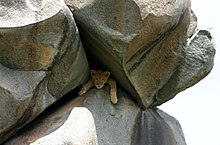
The cost of a safari can range from the basics (fly-tents, self-catering and guides with vehicles) to smaller parks like Manyara and Tarangire, to luxury lodges and tented camps in the Serengeti which can cost anywhere from US$250 to US$1,500 per person per night. You can use your own vehicle, provided it's a 4x4 with adequate clearance. There is a benefit to hiring a guide and a vehicle as safari vehicles are equipped with open rooftops which provide a much better vantage point for animal viewing. Also, many park will require that you hire a certified guide before you enter the park, even if you're using your own vehicle. Guides can cost around US$35 a day plus tip. Guides are good to have since they know the park and can help you locate some of the more sought after animals such as lions, leopards, rhinos, cheetahs and hyenas.
Some of the more popular safari companies are Warrior Trails, Ranger tours & Leopard tours. Other popular companies rated by the Tanzania Association of Tour Operators include Ajabu Adventures, Bush2Beach Safaris, Bushmen Expeditions, Fay Safaris and Tanzania Tour Company. Serena and Sopa are popular lodging spots and have facilities throughout the Northern Circuit. However, don't discount using smaller tours and lesser known lodging facilities which are just as good if not better than the larger tours and lodges.
For better prices and some of the most beautiful parks avoiding the traffic jams of safari vehicles, head for the southern circuit, particularly Ruaha National Park where the range of wildlife is much greater and the scenery spectacular. Iringa is a great place to base yourself to explore this area and sort out your safari trips.
For any of the following tours, by looking online, you can find reputable companies that are reasonably priced and make the trip enjoyable and stress-free.
Wildlife viewing

- Serengeti National Park , made famous by numerous Discovery Channel specials, hosts a wide range of wildlife, including lions, cheetahs, leopards, hippopotamuses, elephants, zebra, buffalo, water buck, crocodiles, gazelle, warthogs, and wildebeest. One major attraction is the wildebeest migration, which occurs continuously between the Serengeti and Masai Mara (Kenya). A guide with a 4-wheel drive vehicle is required. If the migration is your main purpose for visiting the Serengeti, you should advise your tour company as this may require travel much further afield and could be more costly.
- Ngorongoro Conservation Area also hosts an abundance of wildlife, particularly in the Ngorongoro crater. Formed by the same volcanic activity that generated Kilimanjaro and the Great Rift Valley, Ngorongoro consists of the highlands around the crater (rich in elephants) and the crater itself (similar animals to Serengeti, but at higher densities and with a small population of black rhino).
- Ruaha National Park and Selous Game Reserve are far less popular but very enjoyable. You will find much greater variety of wildlife than you would in the Serengeti, if you're looking for a destination with fewer tourists these parks are for you. Ruaha is known for having the largest elephant and giraffe population of any park in Africa and often goes by the name 'Giraffic Park', it is also a good place to see large prides of lion and the elusive and rare hunting dogs. Selous is the only other place besides Ngorongoro where you may see a rhino. You can also visit the Uduzungwa Mountains Park for a truly wilderness hike through unspoiled and spectacular scenery. There are few places left in the world like this one. With new gates opened up on the Iringa side of the park with great camping it is a great addition to any visit to Tanzania.
- Tarangire National Park is in the northern circuit of Tanzania and was named after the Tarangire river flowing within the park. The park area is approximately 2,600 km 2 . Similar to Serengeti, the park has a high concentrations of wildlife during the dry seasons. Also, over 570 bird species have been identified, and the place is surely a birdwatchers' paradise. Safari accommodation is available in quality safari lodges and campsites.
When visiting wildlife parks be sure to stay as close to the viewing areas (center of the parks) as possible and leave as soon as you can in the morning as animals are typically most active soon after sunrise.

- Zanzibar is an island off the coast of Tanzania and includes the island of Pemba. Zanzibar has beautiful beaches and a historical Stone Town. Zanzibar is great for scuba diving, snorkeling, and swimming with dolphins. Other attractions include spice tours and the Jozani Forest, which shelters a small population of red Colobus monkeys.
- Mafia Island Marine Park is south of Zanzibar and boasts some fantastic scuba diving and snorkeling. You may also get to swim with whale sharks, as this is one of the few areas in the world where they congregate annually.
- Bongoyo Island is easy to get to with a boat from Slipway. It has a remarkable beach with excellent snorkeling in clear water, although you may be better off taking your own snorkels as renting is costly. The island is not tide dependent, therefore you can swim at any time. There is a resident price and a 'muzungu' price' but still quite reasonable.
- Sinda Island is a small uninhabited island of ínner sinder' and outer sinder'.
- Mbudya Island can be accessed from Silver Sands hotel. The water is amazing although it looks clear you cannot snorkel in it as it is surprisingly murky underneath the surface.
- Lazy Lagoon There are 12 rooms on the private 9 km-long white sandy island with deserted beaches. It boasts swimming at all tides in clear azure blue water, ideal for snorkelling to be mesmerized by the shoals of iridescent tropical fish hiding among the pristine coral gardens that protect the island. The island is accessed from the mainland, just south of Bagamoyo town 70 km north of Dar es Salaam. It is home to bushbabies, wild pigs, genets, baboons, duiker, and Suni antelope. The bandas were well appointed and have solar-powered hot water, a large shady verandah with spacious rooms and big windows.
- Mount Kilimanjaro is the highest peak in Africa and one of the highest freestanding mountains in the world. Many people travel to Tanzania just to climb this mountain. Does tend to be crowded with tourists. You can either organize your trek up the mountain from your home country through a travel agency, but you'll pay a lot more for this convenience, or, if you've got a bit of time, hop on plane and save some money by organizing it in Arusha or in Dar. There are as many incompetent and dishonest trek organizers as there are good ones. Make sure your guide will deliver on his promises.
- Mt Meru is an active stratovolcano located 70 km (43 mi) west of Mount Kilimanjaro in the nation of Tanzania. At a height of 4,565 m (14,977 ft), it is visible from Mt Kilimanjaro on a clear day, and is the ninth or tenth highest mountain in Africa, dependent on definition. Much of its bulk was lost about 8,000 years ago due to an eastward volcanic blast, similar to the 1980 eruption of Mount St. Helens in the U.S. state of Washington. Mount Meru most recently had a minor eruption in 1910. The several small cones and craters seen in the vicinity probably reflect numerous episodes of volcanic activity.

- There are loads of National Parks for those wanting to watch Tanzania's wildlife. You can gain entry for around US$100 and benefit from a tour (and perhaps a night's accommodation). The better parks, though packed with tourists, are found in the north of the country. Ruaha National Park is the best in the south (locals actually say this is the best park, especially if you want to see wild animals as opposed to semi-tame ones in the northern parks). Don't just be sucked into the tourist circuit in the north; the south offers great parks and towns (base yourself in Iringa), and you will feel less of a tourist and more of a guest if you travel this way.
- Scuba diving in and around Pemba and Zanzibar is another good experience.
- You can also visit numerous historical Slave Trade sites located in Bagamoyo , which could make for an interesting, if a little depressing, excursion.
- Beaches : Tanzania has some of the best, most unspoiled beaches in the world. They are stunning, with their white sand, palm trees, and cool Indian Ocean water!
- Kayak the beautiful coastal waters with a tour operator.
- Tanzania has two of the best Stone Age sites in the world: Isimila Gorge (near Iringa) and the earliest known examples of human art among the rock paintings, near Kolo, north of Kondoa, Dodoma -- some of which are reckoned to be around 30,000 years old.
- Kilimanjaro is one of Tanzania's main attractions. Kilimanjaro is the highest mountain in Africa. Many visitors come to Tanzania to summit this great mountain. The main peak is estimated to be 5895 m high, making it a real challenge for mountaineers.
Swahili and English are the official languages of Tanzania. Swahili however is the dominant language of society, with English largely limited to commerce and higher education. Over 100 different languages are also spoken by individual ethnic groups, though Swahili is almost universally spoken across the country.
Time of day
This is where a little knowledge of Kiswahili can cause some inconveniences. Tanzanians don't function on the same time as Westerners. This doesn't mean Africa time, which is the notion that appointments are flexible and people can arrive when they please. For Tanzanians, it's illogical that the day would start in the middle of the night.
Since sunrise and sunset happen pretty much at the same time all year round, 6AM and 6PM, the day starts at 6AM which is 0 hours. So when telling time in Kiswahili, Tanzanians always subtracted 6 hours for western time. 11AM is 5AM to a Tanzanian. To avoid any confusion, a Tanzanian will tell time in English if they want to use the western standard and in Kiswahili if they use local standard.
In Kiswahili, if you say Saa kumi na moja asubuhi (11AM), instead of Saa tano asubuhi (5AM), you'll end up waiting for 6 hours if the person arrives on time, plus however long it takes to arrive fashionably late!
The currency of Tanzania is known as the Tanzanian shilling , denoted by the symbol " TSh " or by " /= " or " /- " following the number (ISO code: TZS ). There are five denominations of notes and four of coins in circulation in Tanzania:
- Notes: 10,000 (red), 5,000 (violet), 2,000 (brown), 1,000 (blue) and 500 (green; now changed to coins) shillings.
- Coins: 500, 200, 100 and 50 shillings.
Notes and coins vary in size and colour. In descending size order, TSh 10,000 is the largest note, and 500 is the smallest.
Tanzanian currency exchangers usually have a different exchange rate for different US$ denominations, larger and newer bills having a better exchange rate than older and smaller bills. The difference in exchange rate between $1/$5 bills and $50/$100 bills may exceed ten percent. Older US$100 notes are no longer accepted in Tanzania, and any note older than 2003 will most likely be refused everywhere. Also, it's best to avoid attempting to exchange notes with pen marks or any writing on them. If you withdraw a large amount of money, in the range of US$400, you'll have to carry over 40 notes around!
The TSh 10,000 and 5000 notes can be difficult to break when shopping in small shops, a.k.a. dukas . In Tanzania, it's usually the customer's responsibility to provide exact change. But if they do agree to provide change, you could be left with several 1000 and 500 notes of very poor quality. However, you won't have such problems in the large hotels and restaurants catering to foreigners.
Most stores and restaurants expect payment in Tanzanian shillings. On the other hand, travel visas, safaris and Kilimanjaro treks are generally priced in US dollars, and entry fees to national parks must be paid in US dollars by non-residents. On Zanzibar, prices are generally in US dollars (including the ferry fare from Dar es Salaam to Zanzibar), and non-residents are required to pay for hotels with foreign currency (although the hotel will change Tanzanian shillings for you). Hotels on the mainland expect payment in Tanzanian shillings.
Most hotels will exchange US dollars, euros and British pounds for Tanzanian shillings. Other currencies, such as Canadian or Australian dollars, may be accepted but at rates far below the going rate.
ATMs are mostly located in the city centre and on the Msasani Peninsula. If you have a PIN code for your credit card, almost all Tanzanian banks with ATMs will allow cash advances on credit cards like Visa, MasterCard, American Express, Union Pay, JCB, Diners Club, Discover cards. If the ATM reports your home balance in TSh, you may be pleasantly surprised to find that you're a "shillionaire".
̈' Ecobank , GT Bank , KCB , I&M , DTB . have no ATM fees for overseas bank cards at their ATMs.
̈̽' Absa bank , Stanbic , Bank of Africa charges a US$5 fee for all overseas cards. Similarly most local banks will charge fees around TSh10,000–15,000 per withdrawal. Some ATMs don't even disclose the fees beforehand (e.g. TCB , Mkombozi bank )!' local banks Exim , NMB , CRDB ATMs take mastercard but with a 15,000 fee.
Traveller's cheques have become impossible to cash in. use your ATM card.
Credit cards can be used in big supermarkets, malls, large hotels, resorts and with certain travel agents – and to get cash from ATMs.
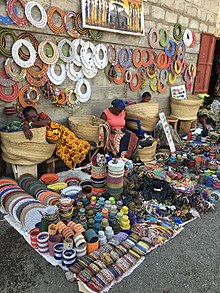
There are many markets in tourist cities that sell standard "African" goods. Beaded jewellery, carved soapstone, and Masai blankets make interesting gifts. Most "ebony" wood is fake (shoe polish) - the exception being in the far south-east of the country, where the Makonde tribe of Tanzania and Northern Mozambique create masks and other carvings from ebony and mpingo wood. Be prepared to bargain for everything. Masks are not typical of most East African groups, and the ones you find in the markets are either imported from West Africa or are strange things made just for tourists, with the exception of the Makonde masks.
Tinga Tinga paintings, named after the painter who originated that style, are for sale everywhere. Their distinctive style and colors make for attractive souvenirs. A standard size painting can be had for TSh 5,000-10,000. There is a Tinga Tinga school in Dar es Salaam, where you can purchase paintings from the artists themselves.
Air freight
If you happen to buy too many goodies during your travels, it is possible to send them home air freight. Many airlines will allow you to check additional parcels when you fly, for a fee, which probably makes the most sense if you're going straight home. But if you're continuing on, air freight might be the way to go. Many listed rates do not include 20% VAT, or a "fuel surcharge" of 13.5% as of 2008.
- DHL . Offers quite pricey service (e.g. about US$300 for a 10-kg package to the US) but is conveniently located in Dar city centre, as well as in a bunch of other cities (see web site). Will deliver direct to the recipient in most countries.
- KLM ( go to the old terminal at DAR airport ). Offers slightly more reasonable rates than DHL (e.g. about US$100 for a 10-kg package to the US) but requires a trip to the airport and about 1 hour of paperwork & waiting. You must pay cash, in US dollars, plus some fees in shillings. Customs will want to go through the package, so bring something to (re)seal it. You can first go to the KLM freight office (look for the sign), then to the cargo building further down the same road, or call ahead and be met at cargo. If you just arrive at cargo you will be swarmed by freight forwarders - to find the KLM staff, look for the KLM logo (e.g. on a lanyard) or call ahead ( ☏ +255 714 474 617 ). Despite what you might be told, someone will need to go to the destination airport to pick up the package - it will not be delivered to an address by KLM. Storage charges will accrue if it's left for very long.
- EMS . EMS is a branch of the Tanzanian postal service, and is the cheapest way to send packages. It's available at most larger town post offices. But shipping time can be quite long, and delivery is not always reliable. Also there are size/weight restrictions. Packages will be transferred to the local postal service at destination, which usually provides direct delivery.
- Fedex . Fedex have offices in Arusha, Dar es Salaam and Mwanza, and like DHL, they are also pricey.

- Produce is often of very high quality. Meat and milk can prove difficult for western taste and diets, so be sure that all meat is cooked through. At hotels, you won't have any trouble, but if you venture into small villages, make sure that all water is filtered or boiled before drinking and all fruits and vegetables are peeled before eating.
- Local dishes include Mtori - cooked beef and bananas - and Mchicha , a vegetable stew with meat or fish in it.
- If there is anything that can be called Tanzania's national dish, then Ugali would most likely win out. A polenta-style dish made with corn flour, it accompanies cooked meat and a variety of stews, and it's eaten with your hands. Recipes vary from village to village, and everyone has their own way of making it. Many foreigners find it bland and unappealing, but it's worth a try, and some upscale establishments serve it.
- Street food is also cheap and plentiful. Barbecued corn on the cob is very nice, as are the chips (fries), cooked over a roaring fire.
- Mandazi is a sweet doughnut-styled food that is mostly made fresh each morning. Great with coffee in the morning, it makes an ideal snack.
- Tanzania's large South Asian community ensures that a great variety of restaurants offer cuisine from all parts of that region of the globe. All eateries near Hindu temples (particularly in Dar) are a good bet. Just watch where the local Indians go to eat, and you won't be disappointed. Most of the food is cooked in large amounts of Ghee, clarified butter, which can be hard for some people to digest.
- Chipsi Mayai (chips cooked in an omelet) are served at nearly every African food stand in Tanzania and are considered a Tanzanian specialty. They're quite good with pili pili (hot sauce).
- Konyagi is a wonderful gin-like beverage, sold only in Tanzania.
- Domestic beers are Kilimanjaro , Serengeti, Balimi, Pilsner, Kibo and Safari , which are western-style and very good. Imports include Tusker, Stella Artois, and Castle.
- Locally produced banana-beer is also available at times, but questionably safe to drink. Traditionally, you will drink this out of a hollowed gourd. First drink the guests, who then pass it to the elders. In some parts of Tanzania, fermented bamboo juice (Pombe) is the common tipple.
- Passion fruit, mango, and orange juices are available in many restaurants, and excellent when the fruits are in season.
- Soft drinks are widely available; Stoney Tangawizi (ginger ale - tangawizi means 'ginger', in Swahili) is one of the most popular besides Fanta and Co.
- Mbege, a locally made drink made up of ripe bananas and finger millet, commonly in the northern Tanzania from the chagga community in the Kilimanjaro region.
- Other popular beverages include lassi (a sweet or salty yogurt drink) and Chai Maziwa (chai with milk) which is well worth trying if you can handle the large amounts of sugar added to this drink. (Milk) tea is a much more common drink than coffee in Tanzania.
- Northern Tanzania has a number of great coffee plantations. Although coffee does not have the same popularity in Tanzania as it has in Ethiopia, with a bit of searching you can find a decent cup of java, instead of the instant "Africa" coffee that is served in most restaurants. All large hotels in Dar make good coffee. If you want to brew your own cup, Msumbi Coffee Shop , +255 22 260 0380, Sea Cliff Village, sells Tanzanian coffee beans ground or whole, roasted on the premises.
In bigger cities be sure to avoid touts. If you are travelling as a couple, a good idea is for one person to sit in a lobby or restaurant with the bags, while the other scopes out rooms. You are likely to get a cheaper price without the bags, and not be targeted by sneaky touts that will raise the price US$5-10 for you for their commission.
As of 2021 budget travelers will find guest houses to offer simple rooms in the TSh8,000-20,000 price range even in smaller towns or villages. They often come with a private bathroom, a fan and a condom hidden discretely somewhere in the room. Typically these accommodations cannot be booked online and it is rare to run into any Western tourists here.
Various schools and volunteer programs offer courses ranging from Beginners Swahili to Economic Development. Dar es Salaam also has a well-established university, which has exchange programs with several universities in the US and other countries.
There is a wide assortment of volunteer organisations sending volunteers and interns to Tanzania to do work in health care, orphanages, education, and development projects. Finding a paying job may be more of a daunting task, taking more time and making use of local connections, but a job could be certainly obtainable when sought hard enough.
As in many impoverished countries, caution should always be exercised, particularly in tourist areas, such as Arusha, Stone Town (Zanzibar), and Dar es Salaam. Violent crime against foreigners is not uncommon, particularly against those walking alone at night, which is not recommended. Pickpocketing and con artists are also common. Pickpockets work crowded markets, like Kariakoo, and bus stations. Don't be fooled by small children who are often forced into a life of crime by older kids or parents -- never carry anything of value in your pockets and don't let expensive camera equipment dangle from your neck. Don't leave bags unattended or even out of your sight when on the beach.
See specific area or city articles for details.
In general, avoid isolated areas, especially after dark. Travelling in large groups is safer. If there are many people or security guards around (e.g. city center areas) you should be relatively safe.
The safest way to travel is by taxi with a driver you know, especially when it's dark out (late night or early morning). Although it's uncommon, taxi drivers have been known to rob tourists. Get the number for a taxi you trust, from your hotel or a local.
Buses have infrequently been stopped by robbers on long-distance (often overnight) routes. If you have to travel a long distance by bus, it might be better to break it into multiple day-only trips, or to travel by plane or train.
In the event of an incident, the police may or may not make a strong effort to identify the culprits, but obtaining a police report is necessary if you plan on filing an insurance claim later, or if important documents are stolen. Make sure the police report indicates if your papers were stolen; otherwise you may have difficulty leaving the country. You should immediately contact your local embassy or consulate in the event that your passport is taken.

There are very few sidewalks in Tanzania, always pay careful attention to the traffic and be prepared to move out of the way, as vehicles do not make much effort to avoid pedestrians. In Tanzania, cars have priority.
The best way to avoid touts, sellers, dealers etc., when they inevitably come up to you and say "jambo" is to either say nothing, or to say "thank you" or "asante", and to keep moving. Some may be offended by 'no', and persistent touts will be encouraged by any kind of interaction at all.
Tanzania, like many developing countries, suffers from corruption. Police are poorly paid - many make less than US$40/month. You may be solicited for a bribe by an official willing to turn a blind eye to your infraction, fabricated or otherwise. Some travellers are very much averse to paying bribes to anyone, especially in a country with so many needy but honest citizens.
Fraudsters are known to impersonate police, sometimes in the guise of an "immigration official" who identifies a problem with your documents. They will flash official-looking papers at you. But there are many plainclothes officers as well. And if you are confronted with someone in uniform, they will almost certainly be an actual officer.
On-the-spot-fine is one term used for a bribe. Those words are meant to initiate a conversation about money. You may be told that the real fine is TSh 40,000 or more and that for TSh 20,000 or 30,000, paid immediately, you can be on your way and avoid a trip to the police station to pay a higher fine.
If you are certain you are in the right, and do not want to pay a bribe, some strategies are:
- Involve other people . Fraudsters or corrupt officials are unlikely to pursue their schemes near an audience. You can ask bystanders for help on the pretext of not understanding the officer.
- Invoke higher powers . Insisting on going to the local police station is a good way to make an illegitimate issue go away. Suggesting a visit to your country's embassy (e.g. to have an official there help translate the conversation, due to one's poor knowledge of the local language and laws) is also effective. At this point, they usually have a look of horror on their face, since they don't want any real officials involved. Asking for bribes is illegal, and there is an office of corruption where they can be reported.
- Play dumb . Politely explain to the person that you don't understand the nature of the infraction, even if you do. Tanzanians are not direct, and prefer to imply what they want, instead of asking outright. Tell them you've only just arrived in the country, even if it's your 100th visit. If you know some Kiswahili, don't let on. It may only make things harder.
- Insist on getting a receipt with an official stamp -- a request that is most likely to be met with confusion and concern. The idea is to show that you don’t know that this is actually a bribe and that you simply wish to play by the rules. Hopefully, after 10 or 20 minutes of a circular, but always polite, conversation, they may send you on your merry way. A word of caution about this approach: corrupt officials have become wise to this and in one case a person requesting a receipt was told the cashier's office was closed and would not open until the next morning. The options were to pay the fine or spend the night in prison. It appears this was not a bluff on the part of the officer. The fine was paid and no receipt was issued. The game is constantly changing.
- Discussing money or negotiating the fine may encourage the perception that you understand the nature of the conversation (i.e. you are willing to pay a bribe).
- Directly accusing the officer of corruption is likely to be counter-productive; it is important that you allow the officer to save face.
- If you insist on going to the police station, you may be expected to give the officer a ride. If you are alone, and especially if the "officer" is plainclothes, this may not be a good idea. If you are approached by multiple people and are alone, under no circumstances get in their vehicle - insist on taking a taxi. And once you get to the station, just pay whatever fine is quoted and insist on a receipt. This may end up costing you more than the bribe, but at least this cop won't get any money out of you, and he/she may think twice before flagging down other foreigners. Also, demonstrate respect for their authority, never raise your voice, and never swear or insult them. Whether you are right or not does not matter at that point.
Finally: incidents of excessive force involving tourists are rare, but that doesn’t mean it cannot happen. For instance, police have been known to be drunk on the job, which can seriously inhibit their ability to reason. As in any situation where someone is trying to get money out of you, by force or threat of force, it's better to be safe than sorry; it's only money.
Stay healthy
Bottled water is cheap and widely available throughout the country. You shouldn't drink the tap water unless you have no other option, and it must either be filtered with a high quality filter and purifier or brought to a boil before consumption. Tests on tap water have found it contaminated with e-coli bacteria.
Illnesses and diseases
As in most African countries, the AIDS/HIV infection rate is high. Tanzania's HIV/AIDS infection rate was 5% among ages 15-49 according to a 2015 UNAIDS estimate . This figure is deceiving, however, since several distinct segments of the population, such as artisanal miners, itinerant fisherman, truck drivers, and sex workers, have HIV infection rates significantly higher than the national average. Do not have unprotected sex in Tanzania or anywhere else, for that matter.
After food-borne illnesses, malaria should be your greatest concern. Malaria is transmitted by mosquitoes and is endemic to Tanzania. You may find yourself at risk in almost every part of the country, although this risk is diminished at altitudes above 2000 m. Care should always be taken between sunset and sunrise, especially during the rainy season. Always sleep under a treated net; wear trousers and closed footwear, and use an effective repellent. It's amazing, but many large hotels don’t automatically install mosquito nets in their rooms. However, a call to the reception requesting one is seldom ignored. In some cases, the nets have several large holes, but a bit of adhesive tape or tying a small knot to cover the hole should do the trick.
Prior to leaving for Tanzania, you may also wish to consult a physician about taking some anti-malarial medication -- before, during, and after your trip. If, in spite of your best efforts, you do contract malaria, it is usually easily treated with medication that is readily available throughout most of the country. If you plan on being in isolated locations, you may wish to drop by a clinic and purchase a batch. Symptoms associated with malaria can take up to two weeks before manifesting themselves. The rule of thumb for ex-pats living in Tanzania is this: Any fever lasting more than a day should be cause for concern and necessitate a trip to the clinic for a malaria test. Upon your return home, should you show signs of a possible malaria infection, notify your doctor that you’ve visited a malaria-infected country.
Other major illnesses to avoid are typhoid and cholera . In theory, typhoid can be avoided by carefully selecting food and drink and by avoiding consumption of anything unclean. Typhoid infection, according to the U.S. Centers for Disease Control and Prevention (CDC) [ dead link ] , is marked by 'persistent, high fevers...headache, malaise, anorexia, splenomegaly, and relative bradycardia.'
Cholera infection is marked by vomiting and sudden, uncontrollable bowel movements, which can dehydrate and ultimately kill the sufferer within 48 hours. It is important to seek medical attention as quickly as possible. Cholera is more or less a seasonal phenomenon in Zanzibar, where outbreaks frequently occur during the rainy seasons. Vaccines and/or oral prevention are available for both typhoid and cholera.

Yellow fever is an acute viral disease transmitted through the bite of a particular mosquito. Although not as common as malaria, it is nonetheless a serious disease, and travelers to Africa should consult a physician about being vaccinated against it. If you plan on traveling to other countries after your stay in Tanzania, some countries, such as South Africa , may require proof that you’ve been vaccinated against Yellow Fever before allowing you to enter the country. If you aren’t or can’t prove it, you will be offered two options: 1) receive the Yellow Fever vaccination at the airport, and 2) immediately leave the country. The Yellow Fever vaccine (as any vaccine) can have side effects for some people, so you may wish to get the vaccine in your home country, under controlled conditions. Most physicians will not administer the Yellow Fever vaccine to children under the age of 1 year, and a letter from a physician explaining this will ensure that your infant child will not receive the vaccine at the airport. - People travelling to Tanzania from India, There is acute shortage of the yellow fever vaccine in India so please get yourself vaccinated at the airport in Dar-es-Salaam as soon as you land there.
Gastrointestinal Distress , a.k.a. traveler’s diarrhea, is the result of one, some, or all of the following factors: Unhygienic food preparation and storage, changes in diet, fatigue, dehydration, and excessive alcohol consumption. Prevention is your best defense. Eat only raw vegetables and fruits you can peel and which have been rinsed in clean water. Avoid street or restaurant food that appears to have been left in the open for an extended period of time. Eat only freshly fried or steamed food. You should drink only bottled water, which is available throughout the country. You should even brush your teeth with it. If you must drink tap or well water, boil it for a minimum of 10 minutes or use a high quality filter.
Rift Valley Fever: In January 2007, there was an outbreak of RFV in the Kilimanjaro area. Consumption of unpasteurized milk and improperly cooked meat from infected cows led to a number of deaths in the area. Following the deaths, beef sales dropped sharply all over the country, despite the limited scope of the infection. In general, meat served in upscale restaurants is of superior quality. However, care should be taken when indulging in street foods or when eating in remote areas.
Insects and animals
Tanzania has its fair share of venomous and deadly insects and animals, such as Black and Green Mambas, scorpions, spiders, stinging ants, lions, sharks, and others. You should take care when walking through high grass; when visiting national parks, or when shoving your hand under rocks or into dark holes -- unless you know what you are doing. In actuality, the likelihood of encountering these and other similar dangers is remote.
The insect/animal most residents fear is the mosquito.
Medical facilities
Hospitals and dispensaries in Tanzania do not meet western standards. If you require surgery or any complex medical procedure you will have to be evacuated to Kenya, South Africa or Europe. You should ensure your medical insurance covers such expenses. Outside of Dar es Salaam, and especially outside of the larger cities and towns, you will be hard pressed to get even basic medical help as many doctors are poorly trained and/or have limited equipment and medication. You should ensure you have your own medical kit to hold you over in case of an emergency. Misdiagnoses are frequent for even common ailments such as malaria, as high as 70% of the cases.
Dar es Salaam is served by a few clinics staffed by western trained physicians. However, some surgical procedures still require evacuation out of Tanzania.
- IST Medical Clinic: Just off Haile Selassie Road past the Chole Road intersection, behind the International School of Tanganyika, Msasani Pinensula, Tel: +255 22 260 1307, Emergency: +255 754 783 393.
- Premier Care Clinic Limited: 259 Ali Hassan Mwinyi Road, Namanga, Kinondoni, P.O. Box 220, Dar es Salaam, Tel: +255 22 266 8385, Mobile: +255 748 254 642.
- Aga Khan Hospital: Corner of Ocean Road & Sea View Road, Tel: +255 22 211 5151.
Government hospitals
- Bugando Hospital , Mwanza, Tanzania Tel: +255 68 40610. The University College of Health Sciences at Bugando Medical Center is established as a Catholic college having four schools: Medical, Nursing, Pharmacotherapy and Dental.
- Muhimbili National hospital, located in Dar es Salaam
- Mbeya Referral Hospital, PO Box 419, Mbeya Tel: +255 65 3576.
- Mnazi Mmoja Hospital, PO Box 338, Zanzibar Tel: +255 54 31071.
Other Government run hospitals used for electives:
- Hindu Mandal Hospital, PO Box 581, Dar es Salaam Tel: +255 51 110237/110428.
- Agha Khan Hospital, PO Box 2289, Dar es Salaam Tel: +255 51 114096.
- Nachingwea District General Hospital, Nachingwea, Lindi, South Tanzania
- Teule District Designated Hospital, Muheza, Tanga Region.
Mission hospitals
- Berega Mission Hospital, Berega, Morogoro, Tanzania.
- St Anne’s Hospital, PO Box 2, Liuli (via Songea) (connected via USPG charity).
- St Francis Hospital, Kwo Mkono, Handeni District.
- A flying doctor service is based in Arusha, Tel: +255 2548578.
For any medical issues, contact : Ministry of Health, PO Box 9083, Dar es Salaam Tel: +255 51 20261 Fax: 51 39951
In Moshi Municipality (Kilimanjaro Region) there is the renowned KCMC , Kilimanjaro Christian Medical Centre, which is in the foothills of the snow-capped, Mount Kilimanjaro.
In general, tourists should wear modest or conservative attire, especially in Zanzibar, which is a conservative Muslim society. Western women should not wear clothing that reveals too much skin. 'Kangas', brightly-colored wrap-around cloth, are affordable, available throughout the country, and can serve as a discreet covering.
The Masai people, with their colorful clothing, are tempting targets for any tourist with a camera. However, they expect to be paid for it, and you should always ask before taking pictures.
It is common practice among Swahili-speakers to use 'shikamoo' (prounounced 'she ka moe' and literally meaning, 'I hold your feet') when greeting elders or superiors. The usual response from an elder will be 'marahaba'. In Zanzibar, the equivalent of 'shikamoo' is 'chei chei'. The traveler will get along very well when using these verbal expressions of respect. In addition, a title after the 'shikamoo' is also a useful indicator that you are not just a dumb tourist -- 'shikamoo bwana' for the gents, and, when addressing a female elder, 'shikamoo mama'.
Tanzanians will also comment if you are doing any work while they are not, with the phrase "pole na kazi". It literally means "I'm sorry you have to work". A simple "asante", or "thanks", will suffice in reply.
Many Tanzanian sellers are persistent and, ordinarily, a simple head shake, accompanied by "asante sana", should settle it. However, as a last resort, a firm "hapana", meaning "no", will do the trick. Tanzanians find the word "hapana" quite rude, so please don't use it casually -- only as a last resort. Whatever you plan to do, do not tell someone you will come back to buy from them later when you have no such intention; better to be honest and say 'no' than having to avoid someone for days. They somehow have a funny way of finding you when you promised to visit their stall or shop!
The most polite way to refuse something is to say "sihitaji" (pronounced see-hih-tah-jee)- "I don't need it".
Keeping in touch while traveling in Tanzania is rarely a problem. You can get decent mobile phone reception even in some national parks.
Telephone calls
The "Tanzania Telecommunications Company Ltd" (TTCL) is the state owned telecom, operating all pay phones and landlines in Tanzania. As it is the case with most developing countries, telephone fixed-lines are not affordable for many ordinary people. However, the mobile network has blossomed throughout Africa in the past years, and this is equally true of Tanzania. With many used mobile phones for sale and the very low cost of getting a SIM card, this is the popular choice of most Tanzanians. For many, a mobile phone is the first large purchase when they get a job. The major mobile service providers operate all over the country, even in some of the most remote areas, although service interruptions are common.
If you find a taxi driver or tour guide that you like, ask for their mobile number. This is often the best way to reach them.
Using a mobile phone If you have an "unlocked" GSM 900/1800MHz frequency mobile phone (the same frequency as used in the rest of the world, apart from USA and Canada), you can purchase a local SIM card for 500 Tsh from a series of Tanzanian service providers. The most popular are Airtel , Vodacom , and Tigo . Zantel [ dead link ] is a new arrival on the mainland and, through the national roaming agreement with Vodacom, has the largest network coverage.
Air time You can top up your "prepaid" mobile phone account by using "scratch-cards", which are available everywhere. Just look for shops or even small tables set up along the road, with posters for the various mobile service providers. Those cards typically come in the denominations from Tsh500-50,000. If you plan on making frequent calls outside of Africa, you will need at least a Tsh10,000 card.
International telecommunications have low capacity, and can be unreliable
With the advent of Internet-equipped cell phones, internet cafés are dying out throughout Tanzania. They used to be easy to find in major urban areas, like Dar es Salaam and Arusha, and may persist.
As of 2021, all mobile providers are offering mobile internet service. Zantel, Vodacom, Tigo, Airtel and Halotel are the main providers. 4G coverage is available in many areas of Dar es Salaam, Arusha, Zanzibar town and other cities in the country. A 8GB/month data bundle costs around Tsh10,000, SIM card included.
Wireless (WIFI) is also provided by some providers mainly Powernet (Bibi Titi Mohammed Road, Elia Complex) 0658769376, 0787769376, 0757769376, 0777769376, Unlimited Internet Access anywhere in the Urban Areas of Dar-Es-Salam costing Tsh 30,000 (US$20).
- Emergency Services: 112 - If you can, it's probably better to go straight to the nearest police station, instead of dialing 112.
The East African Islands including Madagascar , with nature and culture very different from the African mainland
- Has custom banner
- Has map markers
- Articles with dead external links
- Has caution box
- Has caution box with out of date warning
- Outline countries
- Outline articles
- Country articles
- Has Geo parameter
- East Africa
- All destination articles
- Pages using the Kartographer extension
Navigation menu
- You are here
- Guide to Africa
Tanzania Guide
Parent page.
- African Countries
- Tanzania Visitor Information
- Tanzania Embassies, Consulates and Tourist Offices
- Tanzania National Parks and Game Reserves
- Photographs of Tanzania
Related pages
- Accommodation
Link to this page
- Get the html code
Introduction
Tanzania map with capital Dodoma click to zoom Situated in East Africa, just south of the equator, mainland Tanzania lies between the area of the great lakes; Victoria, Tanganyika and Malawi - with the Indian Ocean on its' coastline to the east. It has land borders with Uganda and Kenya to the north, Mozambique and Malawi to the south, Zambia to the southwest and Dem. Rep. of Congo , Burundi and Rwanda to the west. The country lies at an altitude of over 1,000ft, apart from a coastal strip varying in width from 10 to 40 miles. The greater part of the country is made up of plateau averaging 3,000 to 4,500ft in height. Mountains are grouped in various section. The Pare and Usambara ranges are in the northeast and the Livingstone Mountains in the southwest. Kilimanjaro (19,336ft) in the north is the highest mountain in Africa. On the borders are three large lakes; Victoria, the second-largest freshwater lake in the world, Tanganyika, second only to Lake Baykal as the deepest in the world; and Lake Malawi. Lakes within Tanzania include Natron, Eyasi, Manyara and Rukwa. Even though three great African rivers; the Nile, the Zaire and the Zambezi, have their origins in Tanzania, the country has few permanent rivers. During half the year, the central plateau has no running water, but in the rainy season flooding presents a problem. Lowest Point: Indian Ocean 0m Highest Point: Kilimanjaro 5,895m Tanzania can truly claim to be the home of "Safari" since the word is Kiswahili for "journey." And there's no better place to enjoy the enriching wildlife experience than Tanzania. The wildlife viewing experiences are widely regarded as the best in Africa. It's the place to see seemingly endless herds of Wildebeest and Zebras trekking across the plains on their annual migration , followed by the predators; Lion , Cheetah and hyena. Tanzania also lays claim to the title, "The Cradle of Mankind", as the remains of one of the earliest humans were discovered near Olduvai Gorge. And the visitor will want to see Ngorongoro Crater , the largest caldera in the world teeming with wildlife, along with the majestic, snow-capped Mount Kilimanjaro , is the tallest mountain in Africa. Tanzania also has hundreds of miles of palm-fringed beaches; lakes that are huge and bountiful with fish; relaxed and friendly cities; and exotic islands – Zanzibar , Pemba and Mafia. . Tanzania has something to offer for everyone, whether it be wildlife viewing, adventure, African culture or simply relaxing on the beach.
Africa Guide


IMAGES
VIDEO
COMMENTS
Tanzania Travel Guide: Essential Facts and Information. Wildebeest and Flamingos, Ngorongoro Crater. Photo: Ignacio Palacios/ Getty Images. One of the continent's most iconic safari destinations, Tanzania is a haven for those looking to immerse themselves in the wonder of the African bush. It is home to some of East Africa 's most famous game ...
Explore Tanzania holidays and discover the best time and places to visit. Explore Tanzania holidays and discover the best time and places to visit. Lonely Planet. Destinations. Planning ... Sustainable Travel. 24 of the world's most incredible train journeys. Jan 2, 2024 • 11 min read.
13. Be savvy at bus stations. Don't accept open drinks, and keep your wits about you. Touts may approach you, but it helps to know in advance which bus company you're taking (get advice on this from your hotel), and only purchase tickets at a clearly marked bus office or directly from the driver. 14.
Fast Facts about Tanzania. Tanzanian power voltage is 220V 50Hz; Plug C, E, F & L. The Tanzania currency is the Tanzanian shilling is and is around 2100 TZS to 1 USD. Levels of crime seem to increase in Tanzania. Avoid showing signs of wealth and keep valuables out of sight.
National Geographic's latest travel stories about Tanzania. Photograph by Michael Fay, Nat Geo Image Collection.
The grilled lobster served with scarab potatoes and salad is heaven's gift to mere mortals. 6. Swim with whale sharks on Mafia Island. Mafia Island, also known as Whale Shark Island, is Tanzania's best-kept secret. Like Zanzibar, it's an archipelago, but it has little of the traffic that flows to Unguja Island.
Make sure to have your credit card handy because this is the only method of payment accepted at the gate. 3. Play Nice With the Police. This Tanzania travel tip really applies to self-drivers, but the Tanzanian police are littered across the roads of the country just waiting to hand out "tickets.".
Updated on October 25, 2019. Tanzania is most famous as one of Africa's best safari destinations, thanks to its iconic game reserves like the Serengeti, Ngorongoro Crater, and Tarangire National Park. All of these play host to the annual Great Migration of wildebeest and zebra. However, there's more to this East African country than its ...
When you travel to Tanzania, the best places to visit and enjoy a safari include Katavi, Selous, Ruaha, Tarangire, and Ngorongoro. Of course, there's also the Serengeti where you can witness the great annual migration of millions of wildebeest. Some of the best beaches on earth can be found in the Zanzibar archipelago, and Mafia Island is equally idyllic.
Traditional Maasai women, Tanzania. ©Aleksandar Todorovic/Shutterstock 1. Serengeti National Park. The Maasai people who have lived here for thousands of years call this park Siringet, which means "endless plains" in the Maa language. And indeed, anyone who visits Serengeti will see flat, verdant land studded with acacia trees extending dozens of miles into the distance.
Read this travel advice and carry out your own research before deciding whether to travel. Emergency services in Tanzania. Telephone: 112 (ambulance, fire, police) Contact your travel provider and insurer. Contact your travel provider and your insurer if you are involved in a serious incident or emergency abroad. They will tell you if they can ...
Beyond safaris, Tanzania offers a variety of activities: Climbing Mount Kilimanjaro: For adventure seekers, summiting Africa's highest mountain is a once-in-a-lifetime experience. Beach Relaxation: Zanzibar, with its white sandy beaches and turquoise waters, is perfect for unwinding. Cultural Tours: Visit local villages, such as the Maasai, to ...
Currency: Tanzanian Shilling. (TZS) Visa: Most nationalities need a visa to enter Tanzania, which is $50 for a three-month single entry paid in USD and can be obtained at the border. Ifyou are a US Citizen, the visa is $100 USD for a three-month multiple-entry visa. Weather: There are two seasons in Tanzania - dry and wet.
Visit Tanzania - Karibu! Tanzania a country where you can experience spectacular wildlife, including Earth's largest movement of animals, the annual wildebeest migration in the world famous Serengeti National Park, mountain climbing at Mount Kilimanjaro, scuba diving at Zanzibar or Mafia Island, sandy beaches, deep-sea fishing, horseback riding and a rich tribal culture.
Tanzania is one of the most impressive safari destinations in East Africa. With its culture-rich atmosphere, spectacular natural attractions, and an abundance of things to do, you'll need a lifetime to explore everything the country has to offer. It's home to some of Africa's most famous national parks and boasts an unmatched safari circuit.
Tanzania Travel Facts. With over 16 national parks and game reserves, including the famous Serengeti National Park and Ngorongoro Conservation Area, Tanzania offers visitors an opportunity to witness some of the world's most iconic wildlife migrations and natural wonders. Additionally, Tanzania is also home to Mount Kilimanjaro, the highest ...
US State Dept Travel Information - Overall information about foreign travel for US citizens. To obtain an international driving permit (IDP). Only two organizations in the US issue IDPs: American Automobile Association (AAA) and American Automobile Touring Alliance (AATA) How to get help in an emergency?
From safari to scuba, Tanzania is a nature lover's dream destination. Spot the big five in Serengeti National Park, explore Stone Town—Zanzibar's Swahili city—and climb through the five different climate zones of Mount Kilimanjaro. ... Tanzania Travel Guide: Essential Facts and Information. Best Places to Visit in Tanzania. A Guide to ...
Burundi. Discover the best attractions in Tanzania including Katavi National Park, Serengeti National Park, and Mt Kilimanjaro National Park.
Including the islands of Unguja and Pemba that make up Zanzibar, Tanzania's total area is 362,820 square miles (with 20,600 square miles of lakes). Climate. The coastal strip is tropical with high humidity; temperatures range from 80°F-95°F. The country's annual rainfall averages 65 inches.
Delicious pancakes with mangrove honey and white cup of tea on the table, close up. Zanzibar island, Tanzania, East Africa. 3. Tanzanians prefer drinking tea in the morning as a breakfast beverage and coffee in the evening. 4. The use of left hand to greet someone is considered impolite and rude in Tanzania. 5.
Tanzania is the largest country in East Africa.From the picture-perfect coasts of Zanzibar to the world-renowned wildlife of the Serengeti, from the snowy slopes of Mount Kilimanjaro to the coral houses of Mikindani, Tanzania is the heart and soul of East Africa.Tanzania has several national parks and game reserves, where you can see some of the finest African flora and fauna.
Tanzania also lays claim to the title, "The Cradle of Mankind", as the remains of one of the earliest humans were discovered near Olduvai Gorge. And the visitor will want to see Ngorongoro Crater , the largest caldera in the world teeming with wildlife, along with the majestic, snow-capped Mount Kilimanjaro , is the tallest mountain in Africa.